Forums
- Forums
- Axis And Allies Forum
- General Discussion
- Aviation News
Aviation News
Post a reply
- Go to Next topic
- Go to Welcome
- Go to Introduce Yourself
- Go to General Discussion
- Go to Screenshots, Images and Videos
- Go to Off topic
- Go to Works in Progress
- Go to Skinning Tips / Tutorials
- Go to Skin Requests
- Go to IJAAF Library
- Go to Luftwaffe Library
- Go to RAF Library
- Go to USAAF / USN Library
- Go to Misc Library
- Go to The Ops Room
- Go to Made in Germany
- Go to Campaigns and Missions
- Go to Works in Progress
- Go to Juri's Air-Raid Shelter
- Go to Campaigns and Missions
- Go to Works in Progress
- Go to Skinpacks
- Go to External Projects Discussion
- Go to Books & Resources
-
 Main AdminCoast Guard Air Station Kodiak's first HC-130J Super Hercules arrives in Kodiak, Alaska, Aug. 21, 2018. Air Station Kodiak is expected to receive five HC-130J model planes by the end of 2019 to replace the five HC-130H model planes currently there. U.S. Coast Guard photo's by Petty Officer 1st Class Jonathan Harper.
Main AdminCoast Guard Air Station Kodiak's first HC-130J Super Hercules arrives in Kodiak, Alaska, Aug. 21, 2018. Air Station Kodiak is expected to receive five HC-130J model planes by the end of 2019 to replace the five HC-130H model planes currently there. U.S. Coast Guard photo's by Petty Officer 1st Class Jonathan Harper.
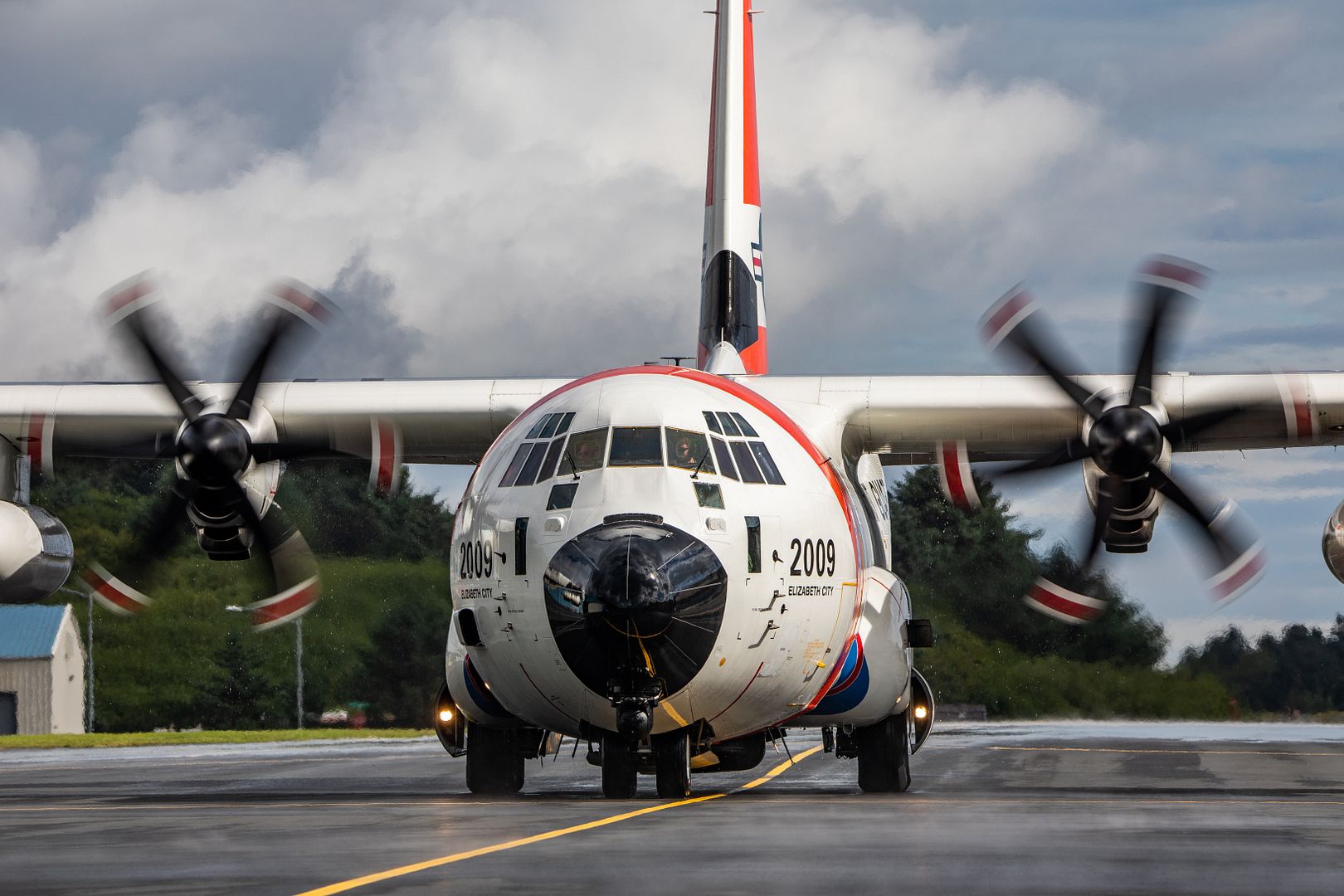
NAVAL AIR STATION PATUXENT RIVER (Aug. 22, 2018) A P-8A Poseidon sits outside the hangar bay of Air Test and Evaluation Squadron (VX) 1 onboard Naval Air Station Patuxent River. VX-1's mission is to test and evaluate airborne anti-submarine warfare and maritime anti-surface warfare weapon systems, airborne strategic weapons systems, as well as support systems, equipment and materials in an operational environments. (U.S. Navy photo's by Mass Communication Specialist 2nd Class Victoria Kinney/Released)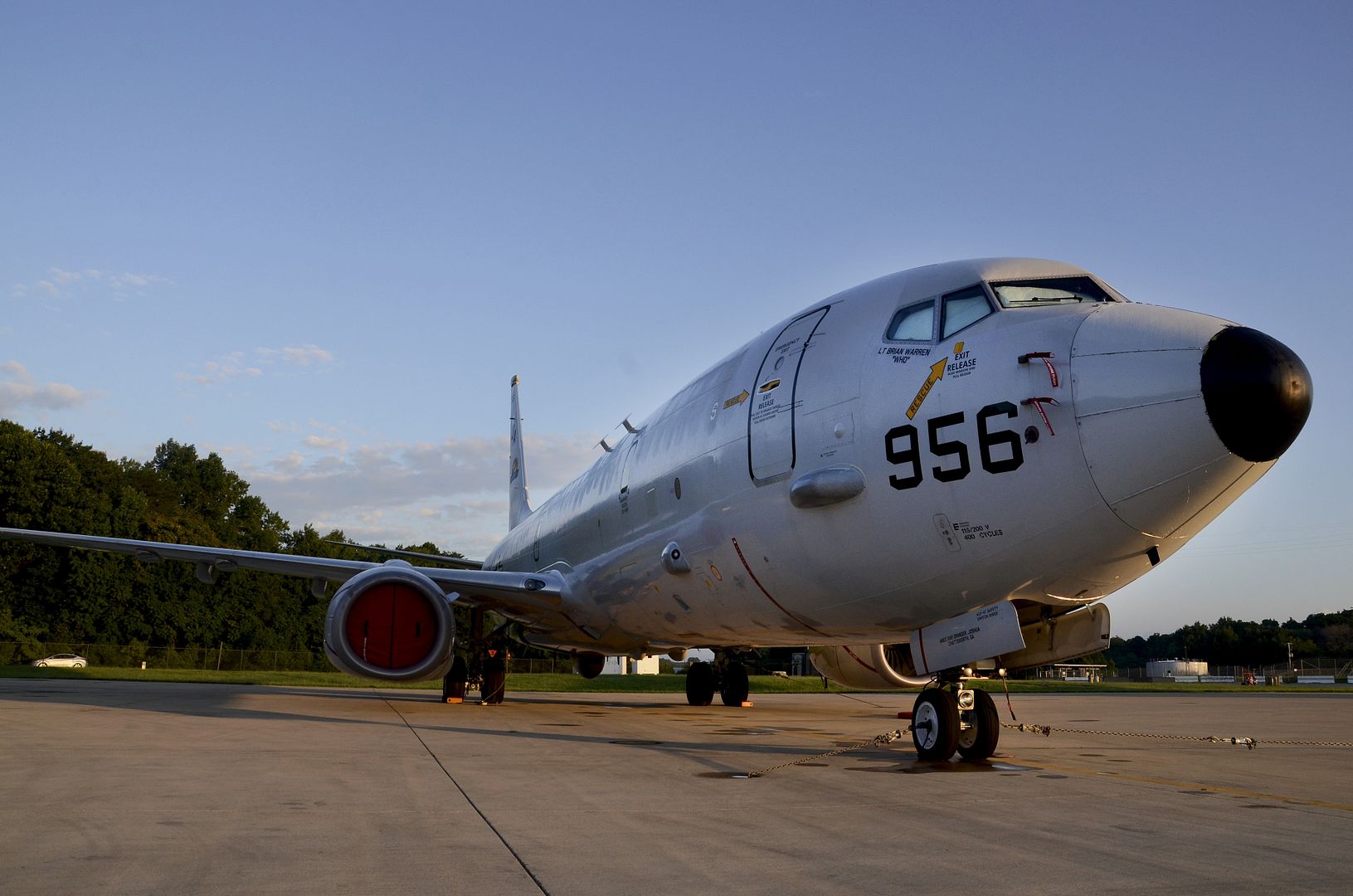
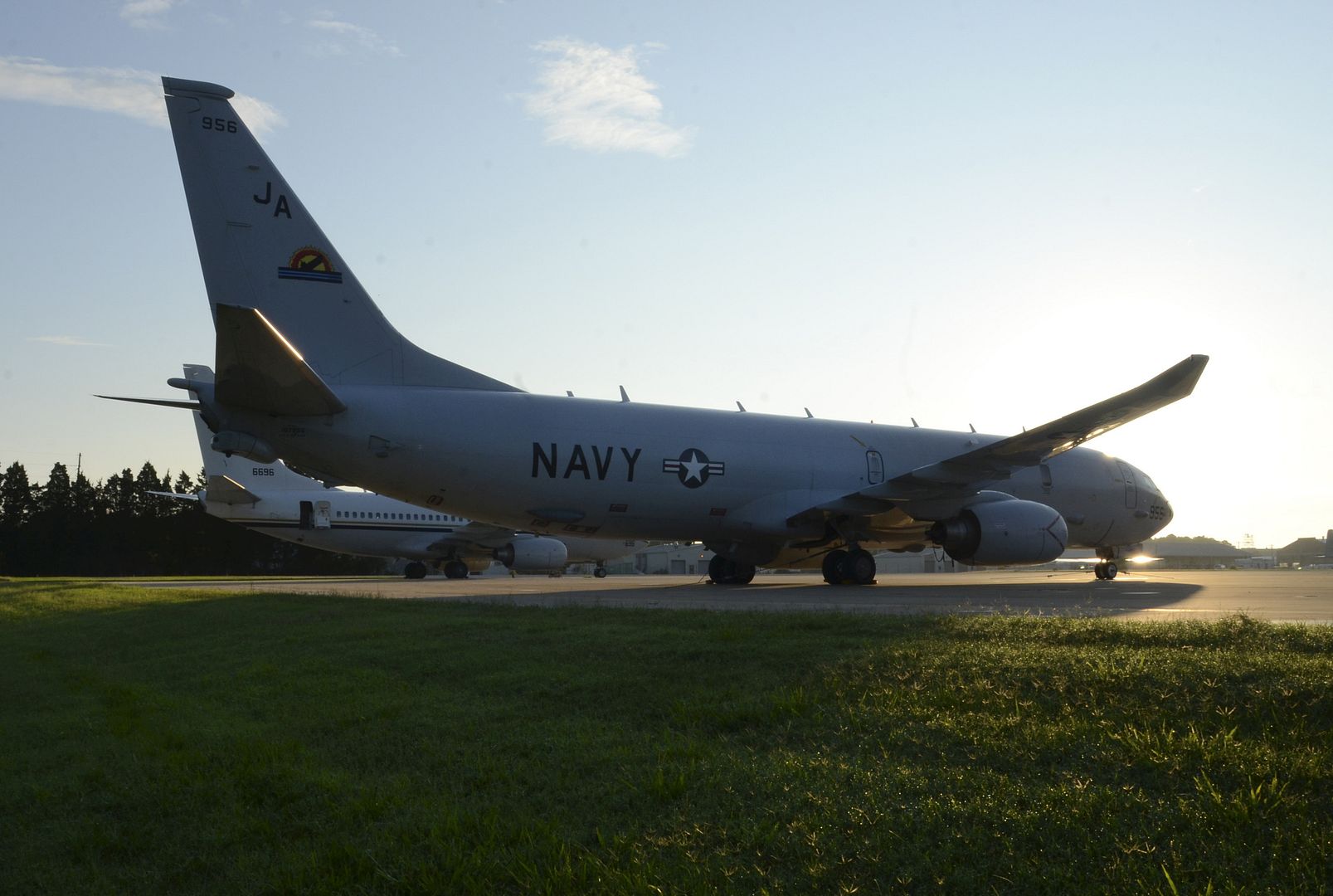
U.S. Soldiers assigned to D Company, 2nd General Support Aviation Battalion, 4th Combat Aviation Brigade conduct 200 hours phase maintenance on an CH-47 Chinook helicopter at Katterbach Army Airfield, Germany, Aug. 21, 2018. Phase maintenance inspections occur at regular intervals on all aircraft in order to keep them operational. (U.S. Army photo by Charles Rosemond)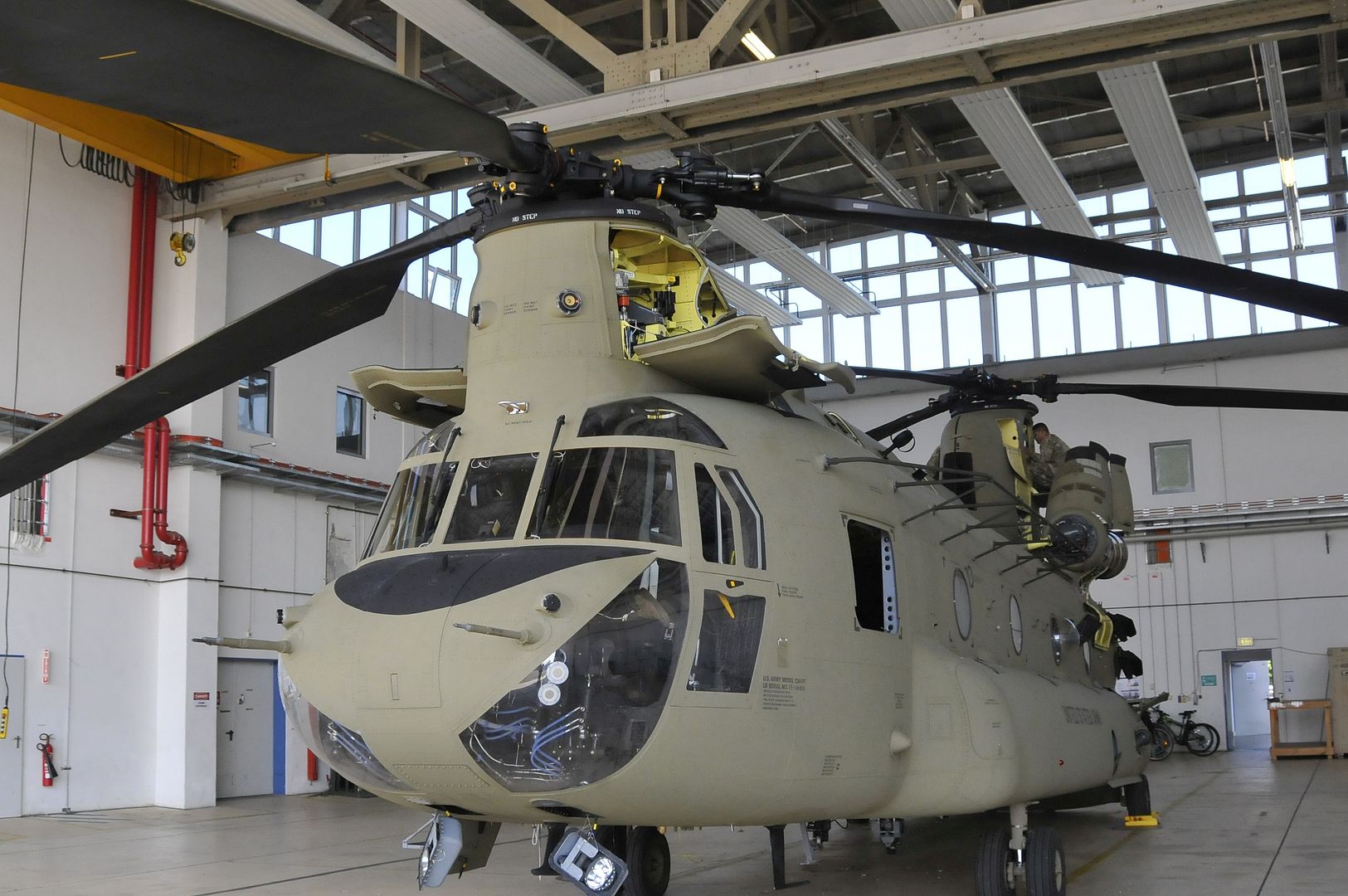
NORFOLK (Aug. 19, 2018) The Nimitz-class aircraft carrier USS Abraham Lincoln (CVN 72) departs Naval Station Norfolk with embarked Carrier Air Wing 7. (U.S. Navy Photo by Mass Communication Specialist 3rd Class Tyler C. Priestley/Released)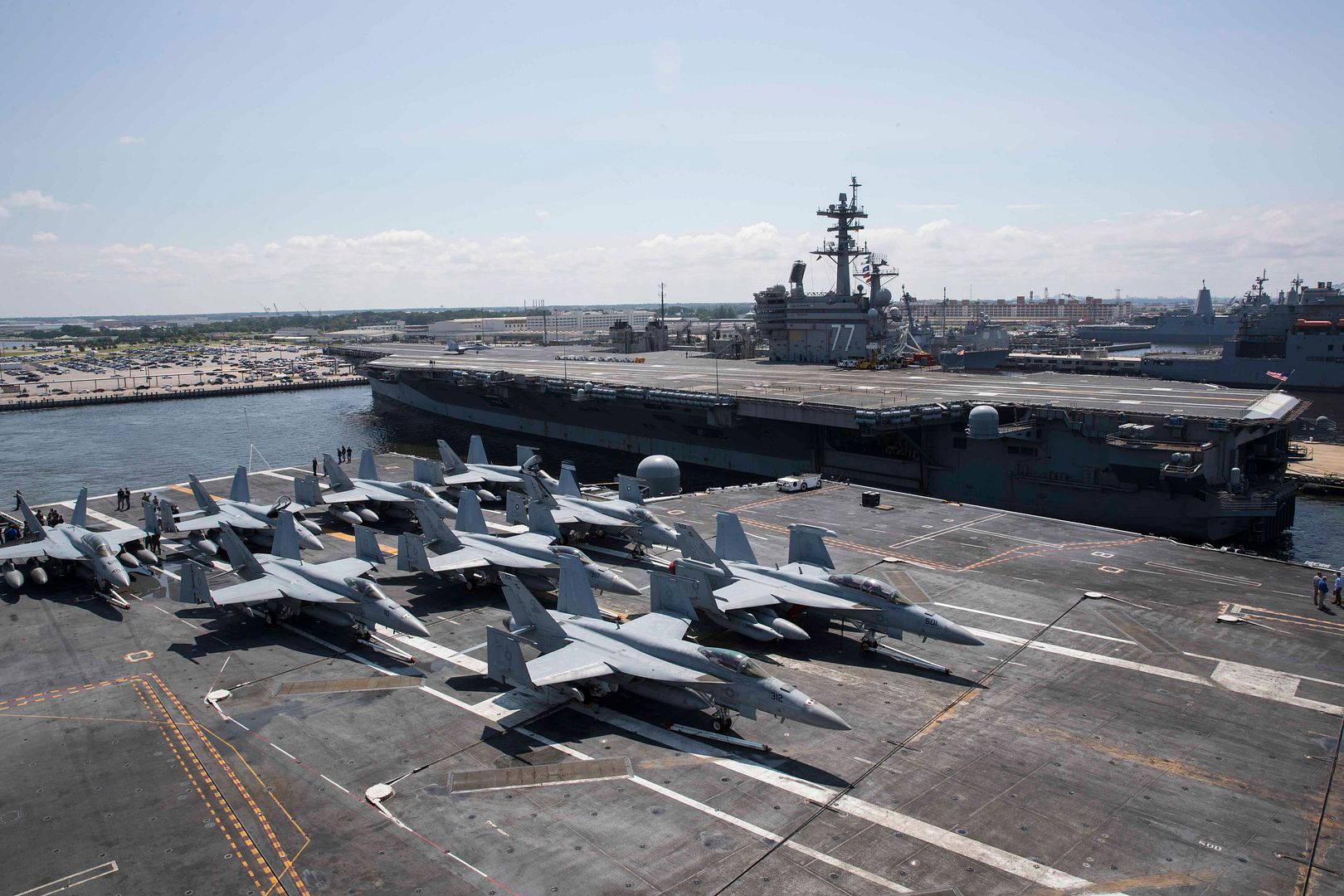
REDONDO BEACH, Calif. ? Aug. 22, 2018 ? Northrop Grumman Corporation (NYSE: NOC) and the Defense Advanced Research Projects Agency (DARPA) have set a new standard for wireless transmission by operating a data link at 100 gigabits per second (Gbps) over a distance of 20 kilometers in a city environment.
The two-way data link, which featured active pointing and tracking, was demonstrated Jan. 19, 2018 in Los Angeles.
The blazing data rate is fast enough to download a 50 Gigabyte blue ray video in four seconds. The demonstration marked the successful completion of Northrop Grumman?s Phase 2 contract for DARPA?s 100 Gbps (100G) RF Backbone program.
The 100G system is capable of rate adaptation on a frame by frame basis from 9 Gbps to 102 Gbps to maximize data rate throughout dynamic channel variations. Extensive link characterization demonstrated short-term error-free performance from 9 to 91 Gbps, and a maximum data rate of 102 Gbps with 1 erroneous bit received per ten thousand bits transmitted.
The successful data link results from the integration of several key technologies. The link operates at millimeter wave frequencies (in this case, 71-76 gigahertz and 81-86 gigahertz) with 5 gigahertz of bandwidth, or data carrying capacity, and uses a bandwidth efficient signal modulation technique to transmit 25 Gbps data streams on each 5 gigahertz channel. To double the rate within the fixed bandwidth, the data link transmits dual orthogonally polarized signals from each antenna. Additionally, the link transmits from two antennas simultaneously (spatial multiplexing) and uses multiple-input-multiple-output (MIMO) signal processing techniques to separate the signals at two receiving antennas, thus again doubling the data rate within the fixed bandwidth.
According to Louis Christen, director, research and technology, Northrop Grumman, ?This dramatic improvement in data transmission performance could significantly increase the volume of airborne sensor data that can be gathered and reduce the time needed to exploit sensor data.?
?Next generation sensors such as hyperspectral imagers typically collect data faster, and in larger quantity than most air-to-ground data links can comfortably transmit,? said Christen. ?Without such a high data rate link data would need to be reviewed and analyzed after the aircraft lands.?
By contrast, a 100G data link could transmit high-rate data directly from the aircraft to commanders on the ground in near real time, allowing them to respond more quickly to dynamic operations.
The successful 100G ground demonstration sets the stage for the flight test phase of the 100G RF Backbone program. This next phase, which started in June, demonstrates the 100G air-to-ground link up to 100 Gbps over a 100 km range and extended ranges with lower data rates. The 100G hardware will be flown aboard the Proteus demonstration aircraft developed by Northrop Grumman subsidiary Scaled Composites.
Northrop Grumman?s 100G industry team includes Raytheon, which developed the millimeter wave antennas and related RF electronics and Silvus Technologies, which provides the key spatial multiplexing and MIMO signal processing technologies.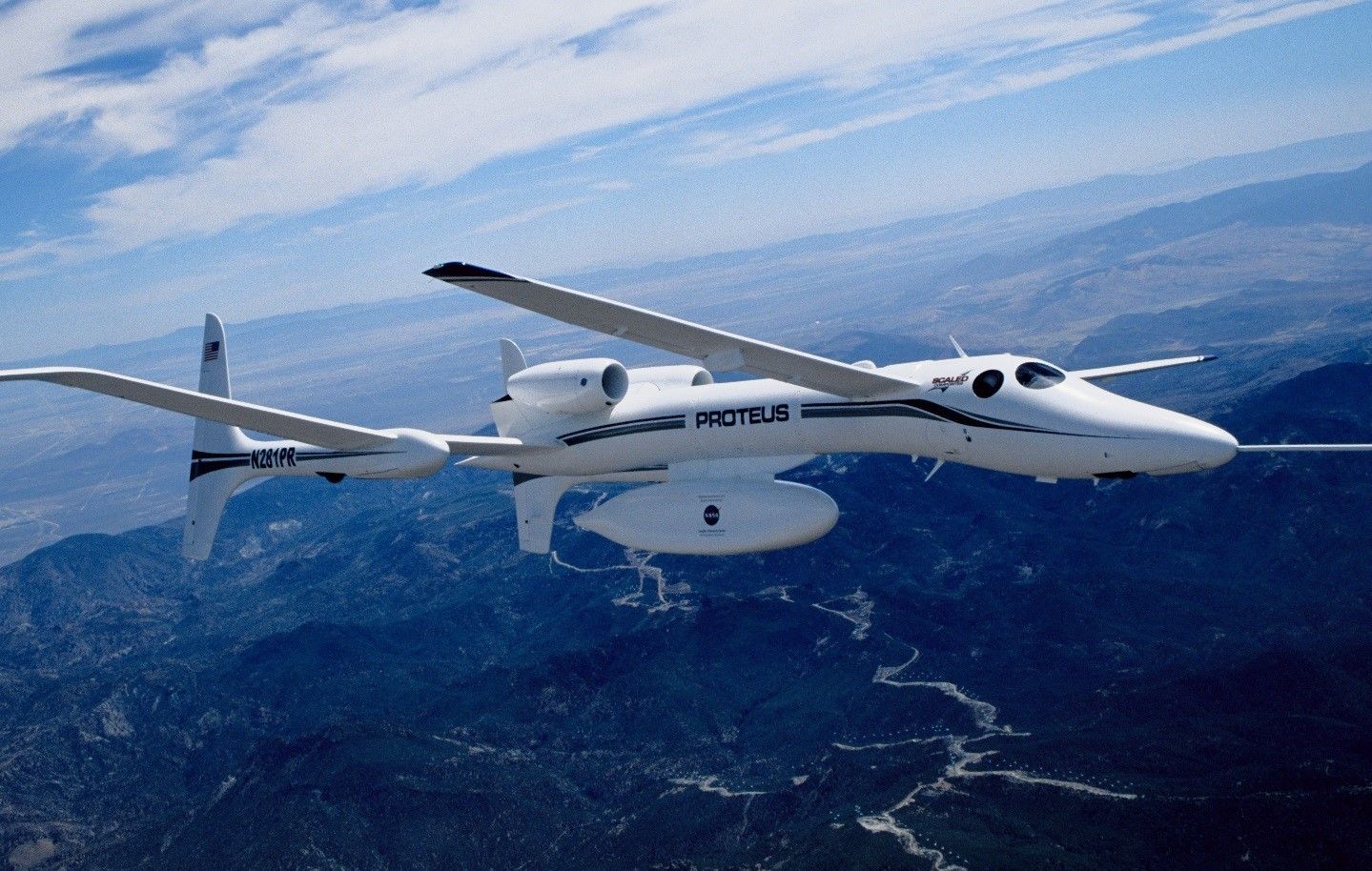
-
 Main AdminA U.S. Air Force F-35 Lightning II assigned to the 56th Fighter Wing, Luke Air Force Base, Arizona, is refueled by a KC-135 Stratotanker from the 141st Air Refueling Wing, Fairchild Air Force Base, Washington, over the skies of Oregon during an afternoon training mission, Aug. 22, 2018, with other fighter jets from the 142nd Fighter Wing, Portland Air National Guard Base, Oregon. The 56th FW has been conducting Dissimilar Air Combat Training with the 142nd Fighter Wing?s F-15 Eagles over the past two weeks. (U.S. Air National Guard photo by Master Sgt. John Hughel, 142nd Fighter Wing Public Affairs)
Main AdminA U.S. Air Force F-35 Lightning II assigned to the 56th Fighter Wing, Luke Air Force Base, Arizona, is refueled by a KC-135 Stratotanker from the 141st Air Refueling Wing, Fairchild Air Force Base, Washington, over the skies of Oregon during an afternoon training mission, Aug. 22, 2018, with other fighter jets from the 142nd Fighter Wing, Portland Air National Guard Base, Oregon. The 56th FW has been conducting Dissimilar Air Combat Training with the 142nd Fighter Wing?s F-15 Eagles over the past two weeks. (U.S. Air National Guard photo by Master Sgt. John Hughel, 142nd Fighter Wing Public Affairs)
U.S. Air Force F-16C Fighting Falcons from the New Jersey National Guard?s 177th Fighter Wing fly overhead during the Thunder over the Boardwalk Air Show in Atlantic City, N.J., Aug. 22, 2018. (U.S. Air National Guard photo by Master Sgt. Matt Hecht)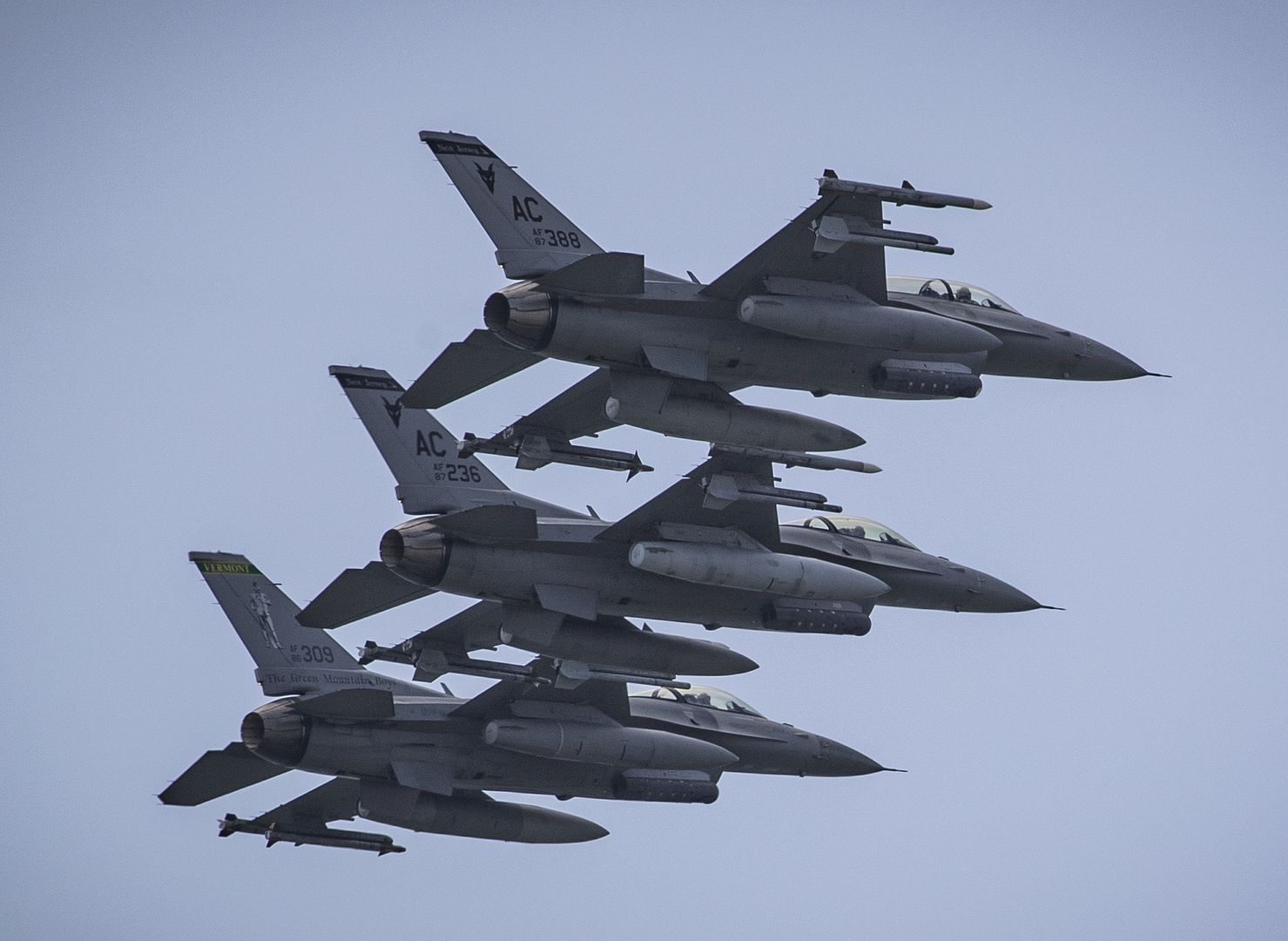
A 12th Combat Aviation Brigade CH-47 Chinook helicopter flies through the clear sky of the Juliet Drop Zone during airborne operation in Pordenone, Italy, August 22, 2018. The 173rd Airborne Brigade is the U.S. Army Contingency Response Force in Europe, capable of projecting ready forces anywhere in the U.S. European, Africa or Central Commands' areas of responsibility.. (U.S. Army photo by Paolo Bovo)
Staff Sgt. Tanner Apple, 309th Aircraft Maintenance Unit dedicated crew chief, runs an engine test on his F-16 Fighting Falcon, Aug. 20, 2018, at Luke Air Force Base, Ariz. Tanner was awarded the 2017 Thomas M. Barnes award for the best dedicated crew chief in the Air Force. (U.S. Air Force photo by Senior Airman Ridge Shan)
ATLANTIC OCEAN (Aug. 21, 2018) A "Growler" approaches the flight deck of the Nimitz-class aircraft carrier USS Abraham Lincoln (CVN 72). Abraham Lincoln is underway conducting carrier qualifications. (U.S. Navy photo by Mass Communication Specialist 2nd Class Mark Andrew Hays/Released)
Fort Worth, TX (August, 2018) ? Bell Helicopter, a Textron Inc. (NYSE: TXT) company, announced today the delivery of two Bell 429s to the Jamaica Defence Force (JDF). A third Bell 429 is scheduled for delivery to the JDF next year. The three aircraft will be used to complete a range of missions including, search and rescue, medical evacuations, natural disaster relief, national security and military training.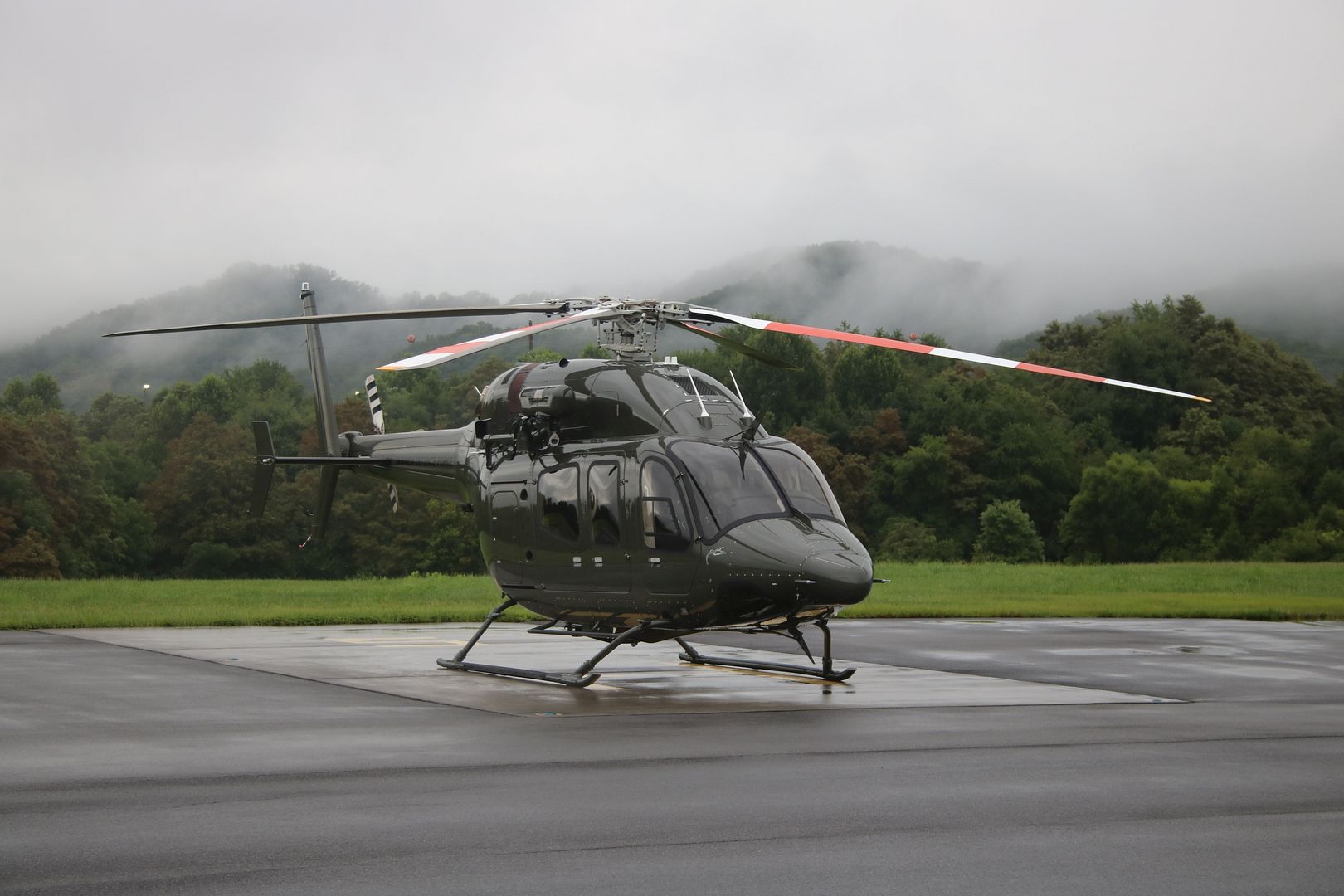
-
6 years agoFri Aug 24 2018, 08:13pm
 Main AdminJim Beasley Jr., Air Force Heritage Flight Foundation founding member/pilot, flies his SNJ-5 Texan at the 2018 Atlantic City International Airshow ?16th Annual Thunder Over The Boardwalk? at Atlantic City, N.J., Aug. 22, 2018. The SNJ-5 is a variant of the T-6 Texan advanced trainer aircraft used to train pilots from World War II until the 1970s. (New Jersey National Guard photo by Mark C. Olsen)
Main AdminJim Beasley Jr., Air Force Heritage Flight Foundation founding member/pilot, flies his SNJ-5 Texan at the 2018 Atlantic City International Airshow ?16th Annual Thunder Over The Boardwalk? at Atlantic City, N.J., Aug. 22, 2018. The SNJ-5 is a variant of the T-6 Texan advanced trainer aircraft used to train pilots from World War II until the 1970s. (New Jersey National Guard photo by Mark C. Olsen)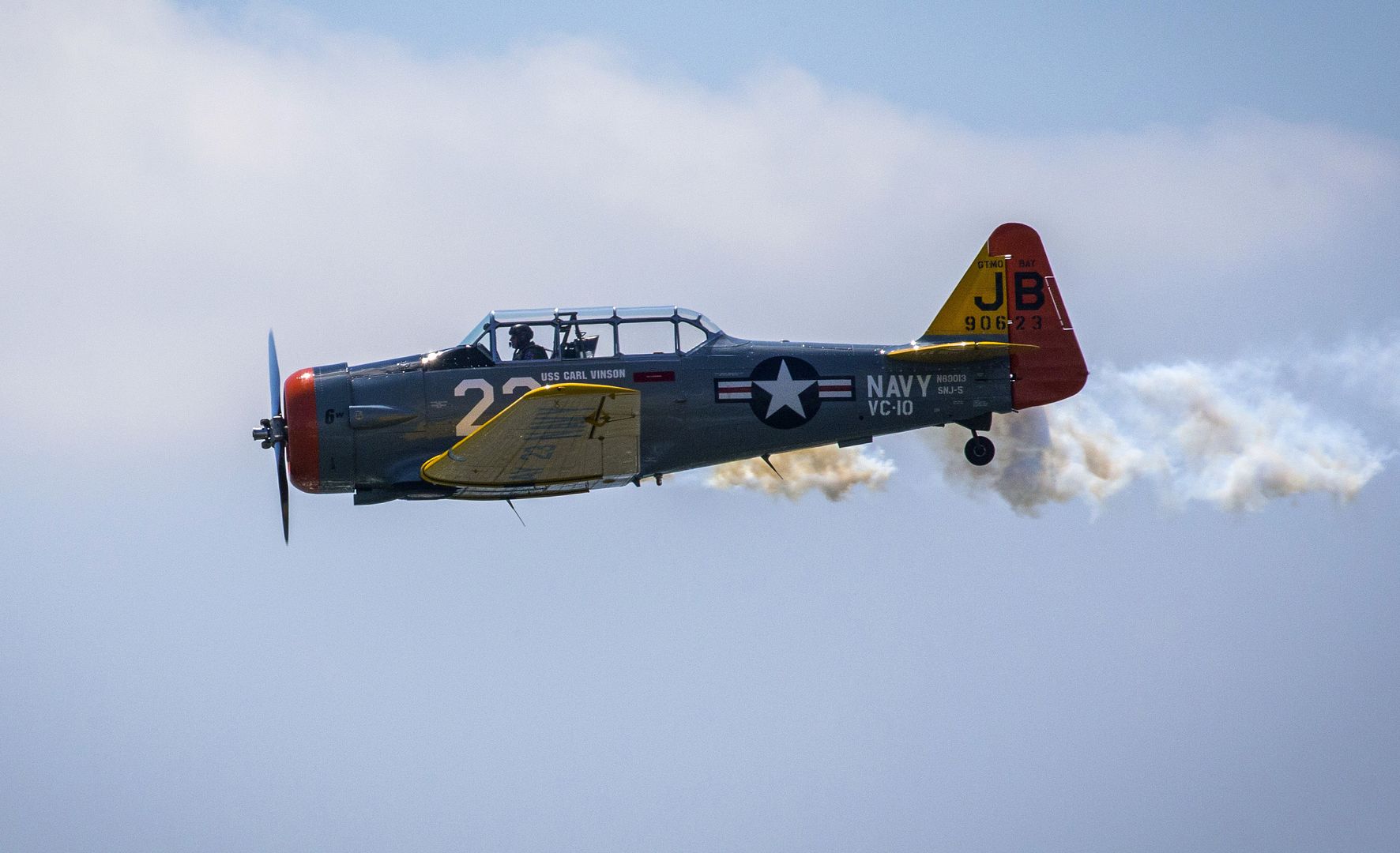
Jim Beasley Jr., Air Force Heritage Flight Foundation founding member/pilot, flies his P-51D Mustang at the 2018 Atlantic City International Airshow ?16th Annual Thunder Over The Boardwalk? at Atlantic City, N.J., Aug. 22, 2018. (New Jersey National Guard photo by Mark C. Olsen)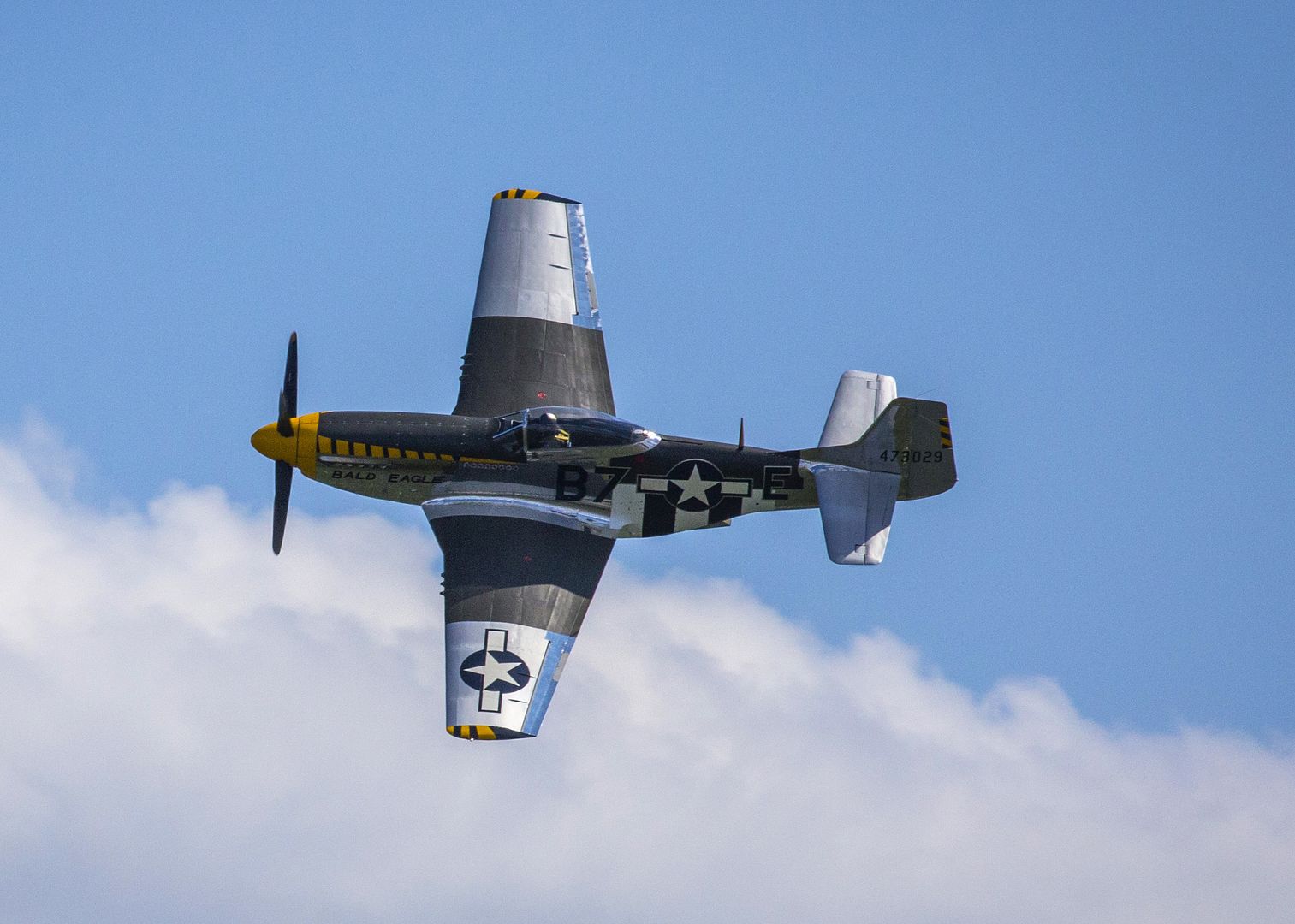
-
 Main AdminA Coast Guard MH-65 Dolphin helicopter aircrew takes off at Air Station Barbers Point, Hawaii, Aug. 25, 2018. The Dolphin was conducting an assessment of the damage caused by Hurricane Lane. (U.S. Coast Guard photo by Petty Officer 3rd Class Matthew West/Released)
Main AdminA Coast Guard MH-65 Dolphin helicopter aircrew takes off at Air Station Barbers Point, Hawaii, Aug. 25, 2018. The Dolphin was conducting an assessment of the damage caused by Hurricane Lane. (U.S. Coast Guard photo by Petty Officer 3rd Class Matthew West/Released)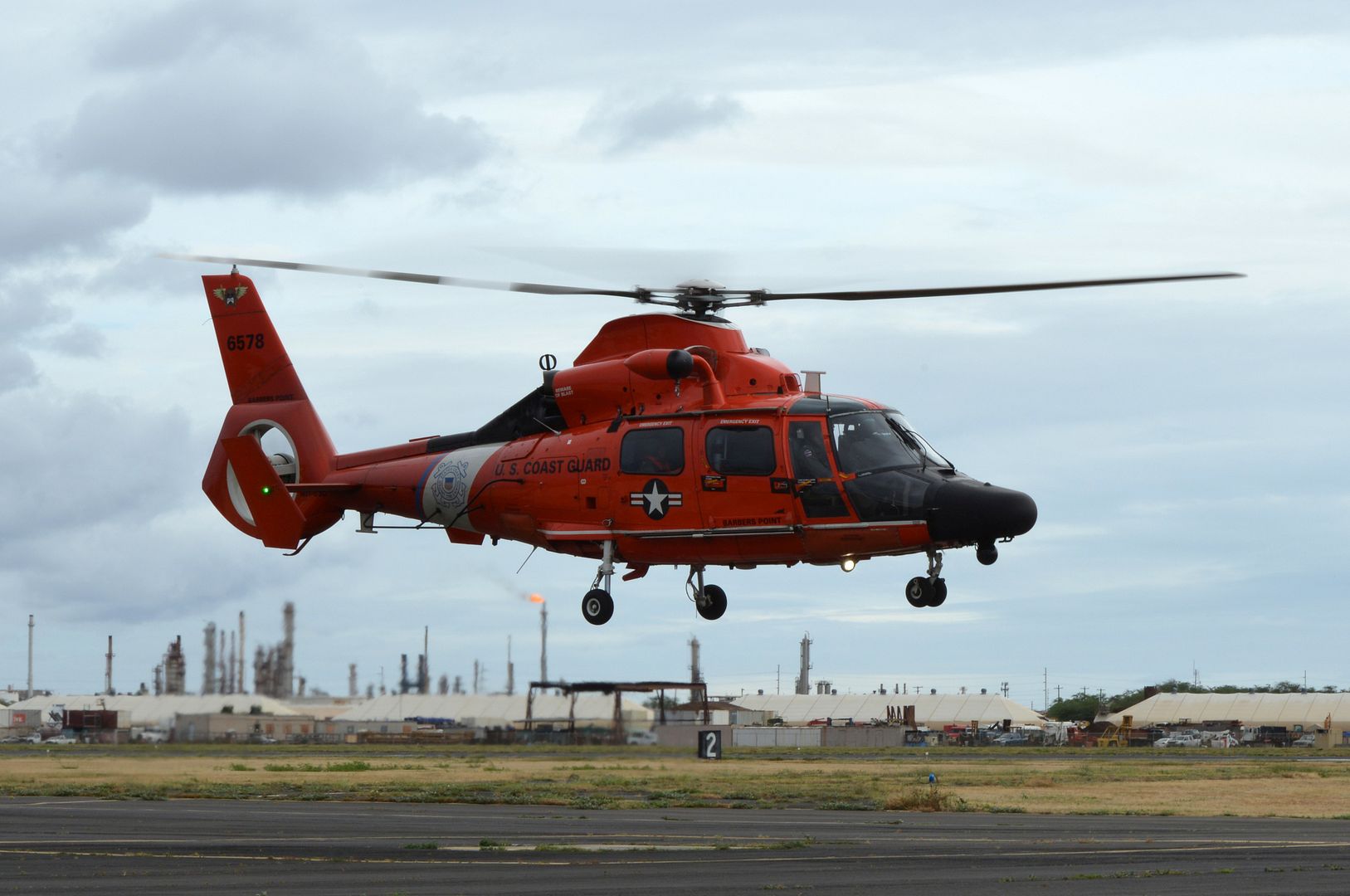
A P-40 Warhawk, piloted by Missouri Congressman Sam Graves, flies overhead during the Sound of Speed Airshow at Rosecrans Air National Guard Base, St. Joseph, August 26, 2018. The air show was hosted by the 139th Airlift Wing, Missouri Air National Guard and the city of St. Joseph to the thank the community for their support. The air show committee estimated 45,000 people attended the Saturday performance. (U.S. Air National Guard photo by Staff Sgt. Patrick Evenson)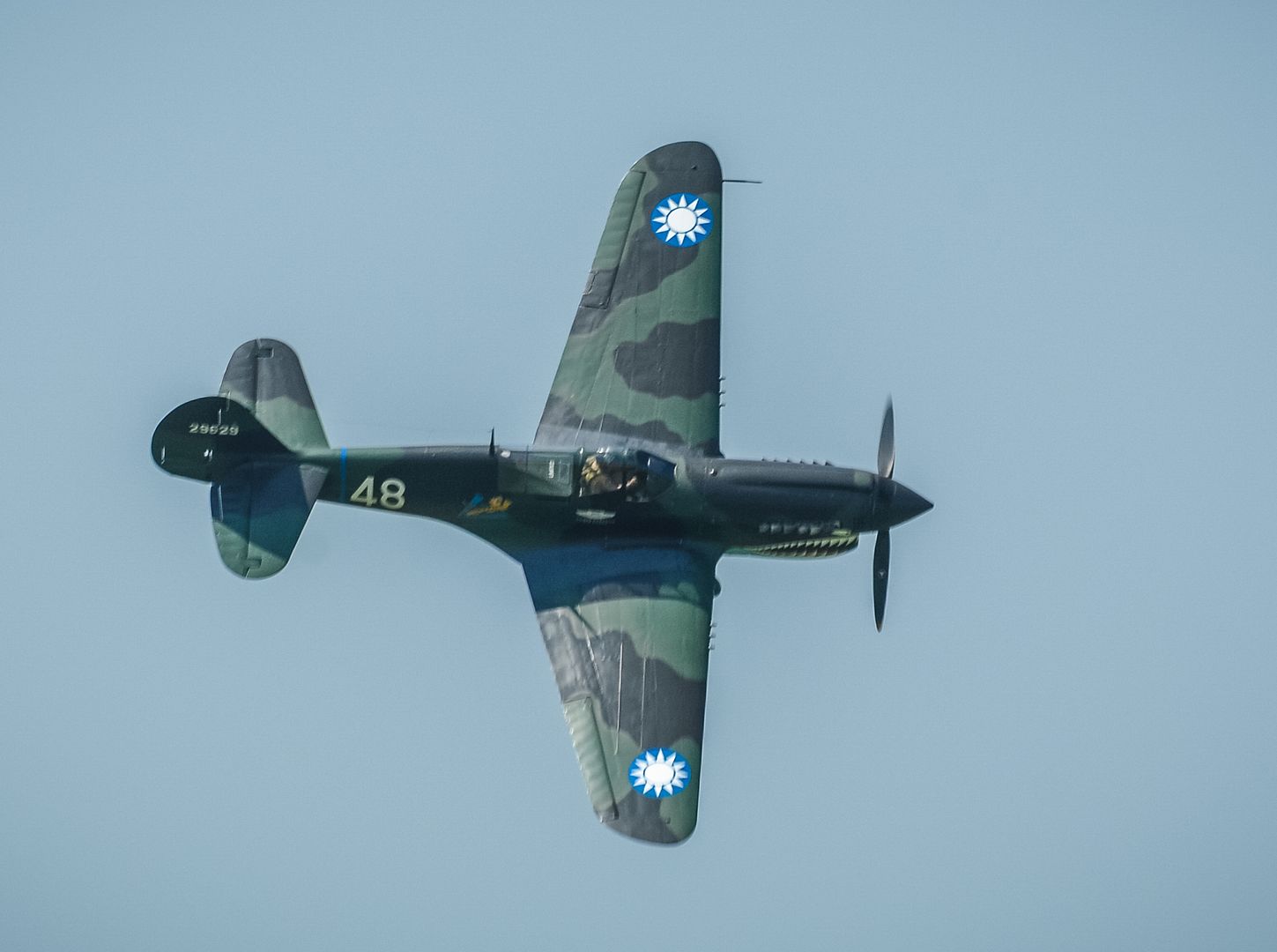
A U.S. Air Force F-16 Fighting Falcon aircraft, assigned to the F-16 Viper Demo Team performs a routine during the Sound of Speed Airshow at Rosecrans Air National Guard Base, St. Joseph, August 26, 2018. The air show was hosted by the 139th Airlift Wing, Missouri Air National Guard and the city of St. Joseph to the thank the community for their support. The air show committee estimated 45,000 people attended the Saturday performance. (U.S. Air National Guard photo by Staff Sgt. Patrick Evenson)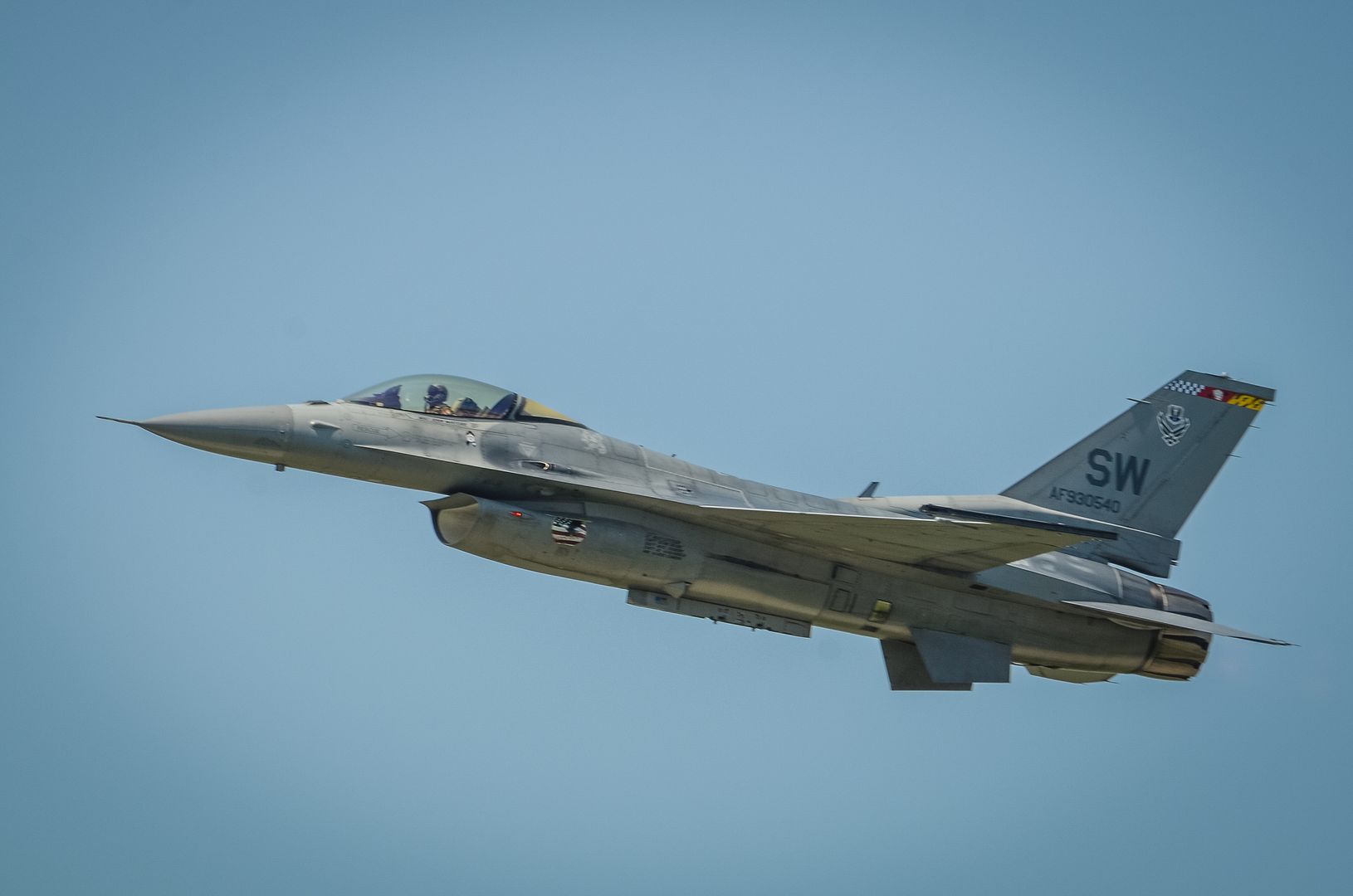
A T-33 Shooting Star aircraft flies overhead during the Sound of Speed Airshow at Rosecrans Air National Guard Base, St. Joseph, August 26, 2018. The air show was hosted by the 139th Airlift Wing, Missouri Air National Guard and the city of St. Joseph to thank the community for their support. The air show committee estimated 45,000 people attended the Saturday performance. (U.S. Air National Guard photo by Staff Sgt. Patrick Evenson)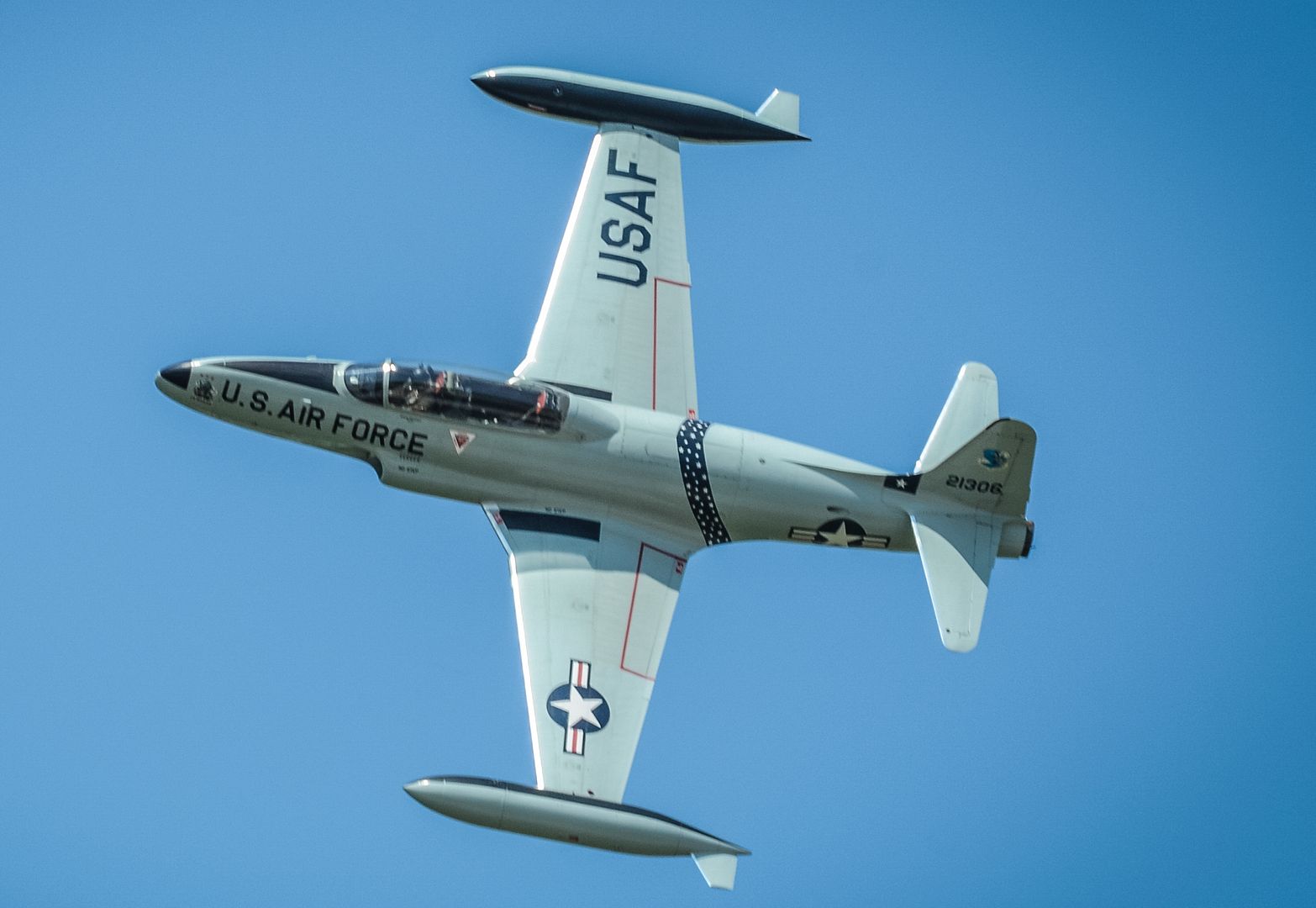
RAF LAKENHEATH, England (AFNS) -- The U.S. Air Force?s 492nd Fighter Squadron sent several F-15E Strike Eagles to support the Royal Air Force?s premier air combat training exercise, Typhoon Warrior, Aug. 14-23, at RAF Coningsby, England.
The squadron?s participation provided a valuable training experience for RAF personnel, allowing them to study best practices integrating with U.S. platforms, officials said.
?As long-standing allies on operations, it is critical for the RAF to understand how best to work together with U.S. assets,? said RAF Squadron Leader James Fordham, 29 Squadron. ?Working with the 492nd Fighter Squadron is a fantastic opportunity for the Typhoon Qualified Weapons Instructor Course and wider Typhoon force.?
The RAF?s Typhoon QWIC served as the cornerstone of the training, with a focus on defensive and offensive counter-air operations, dynamic targeting, air interdiction, close air support and joint personnel recovery. Exercise staff at RAF Coningsby coordinate annual fighter, tanker and various support participation from RAF Lakenheath, Mildenhall, Cobham, Spadeadam and Scampton, to provide Typhoon FGR4 aircrews with the best training available.
"With the Typhoon Force expanding, integrating new weapons and developing new capabilities, QWIs have to be at the top of their game; working with our U.S. allies is one of the ways we reach, and maintain that standard," Fordham said.
For the 48th Fighter Wing, Typhoon Warrior allowed F-15E aircrews an opportunity to leverage their skill and knowledge with RAF aviators, while sharpening air interoperability tactics for potential contingencies.
?It is a huge honor to participate in the Typhoon Warrior,? said U.S. Air Force Maj. Eric Joachim, 48th Operations Support Squadron chief of wing weapons. ?As threats to the security of our two nations continue to morph, it is vitally important that we advance our techniques, tactics and procedures to counter them.?
Integrated exercises such as Typhoon Warrior increase the level of camaraderie within the fighter community, serving as just one example of the U.S. and England?s unwavering commitment to collective defense, a unique and enduring principle that binds U.S. and British airmen together.
?RAF and United States Air Force fighter pilots are kindred spirits,? Fordham said. ?The camaraderie between RAF and U.S. fighter pilots pre-dates the formation of the (U.S. Air Force), and is as strong as ever today."
(U.S. Air Force photo by Tech. Sgt. Matthew Plew)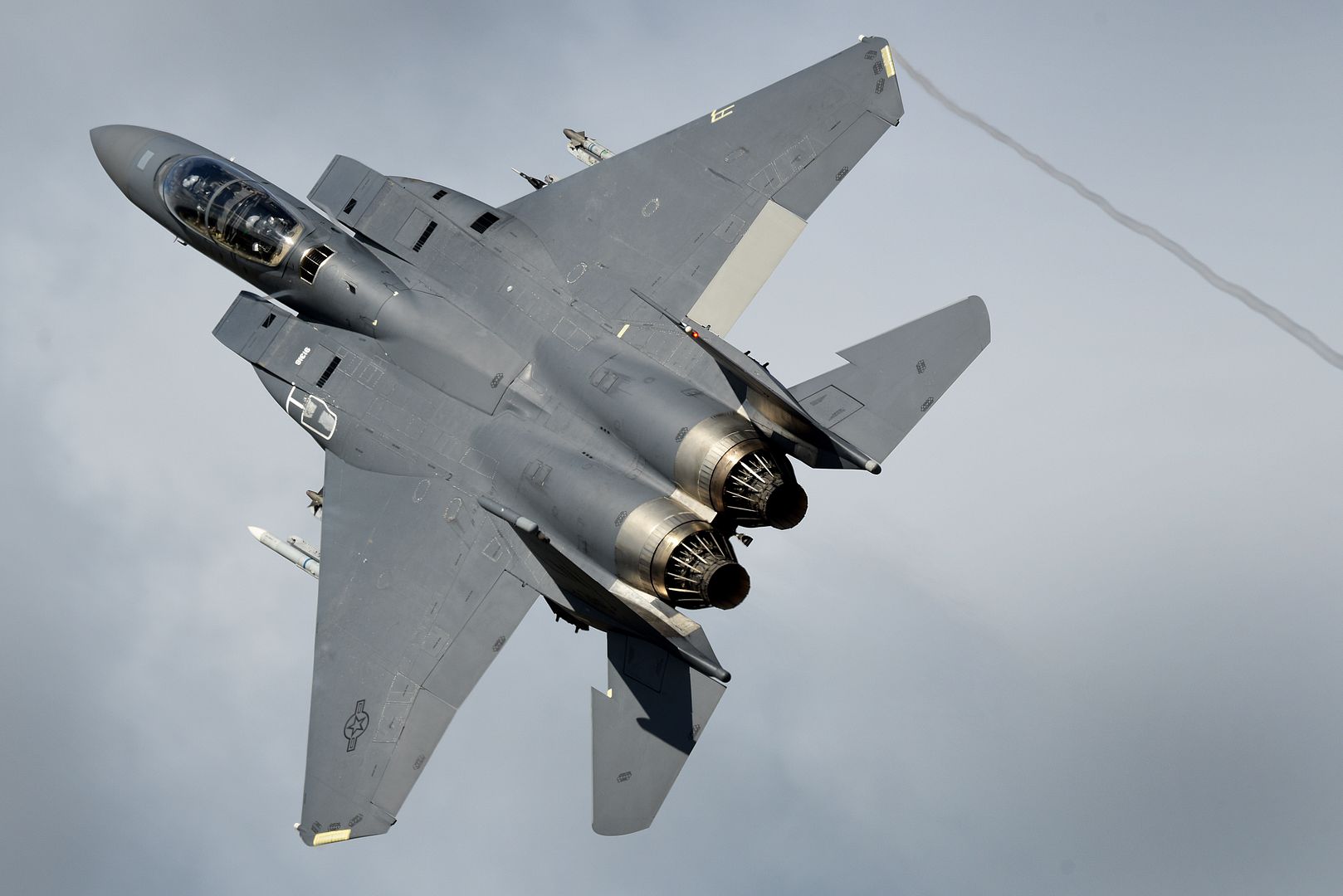
PACIFIC OCEAN (Aug. 24, 2018) An F/A-18F Super Hornet assigned to Strike Fighter Squadron (VFA) 41 sits chocked and chained on the flight deck aboard the Nimitz-class aircraft carrier USS John C. Stennis (CVN 74). John C. Stennis is underway conducting routine operations in the U.S. 3rd Fleet area of operations. (U.S. Navy photo by Mass Communication Specialist Seaman Apprentice Joshua L. Leonard/Released)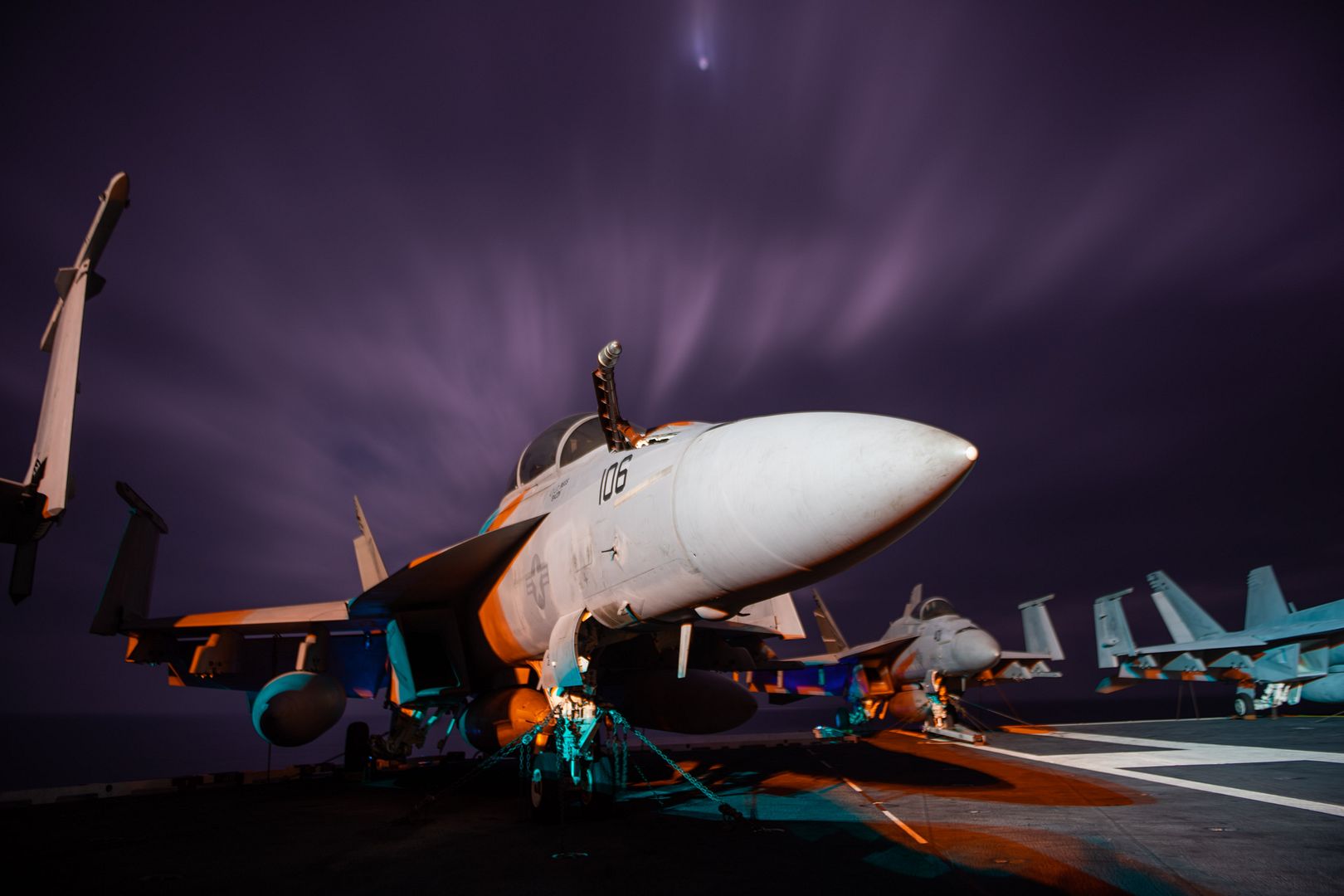
PACIFIC OCEAN (Aug. 24, 2018) An F/A-18E Super Hornet with Strike Fighter Squadron (VFA) 97 sits chocked and chained on the flight deck aboard the Nimitz-class aircraft carrier USS John C. Stennis (CVN 74). John C. Stennis is underway conducting routine operations in the U.S. 3rd Fleet area of operations. (U.S. Navy photo by Mass Communication Specialist Seaman Apprentice Joshua L. Leonard/Released)
PACIFIC OCEAN (Aug. 24, 2018) Sailors observe an F/A-18E Super Hornet assigned to Strike Fighter Squadron (VFA) 14 after a wash down on the flight deck aboard the Nimitz-class aircraft carrier USS John C. Stennis (CVN 74). John C. Stennis is underway conducting routine operations in the U.S. 3rd Fleet area of operations. (U.S. Navy photo by Mass Communication Specialist 3rd Class William Rosencrans/Released)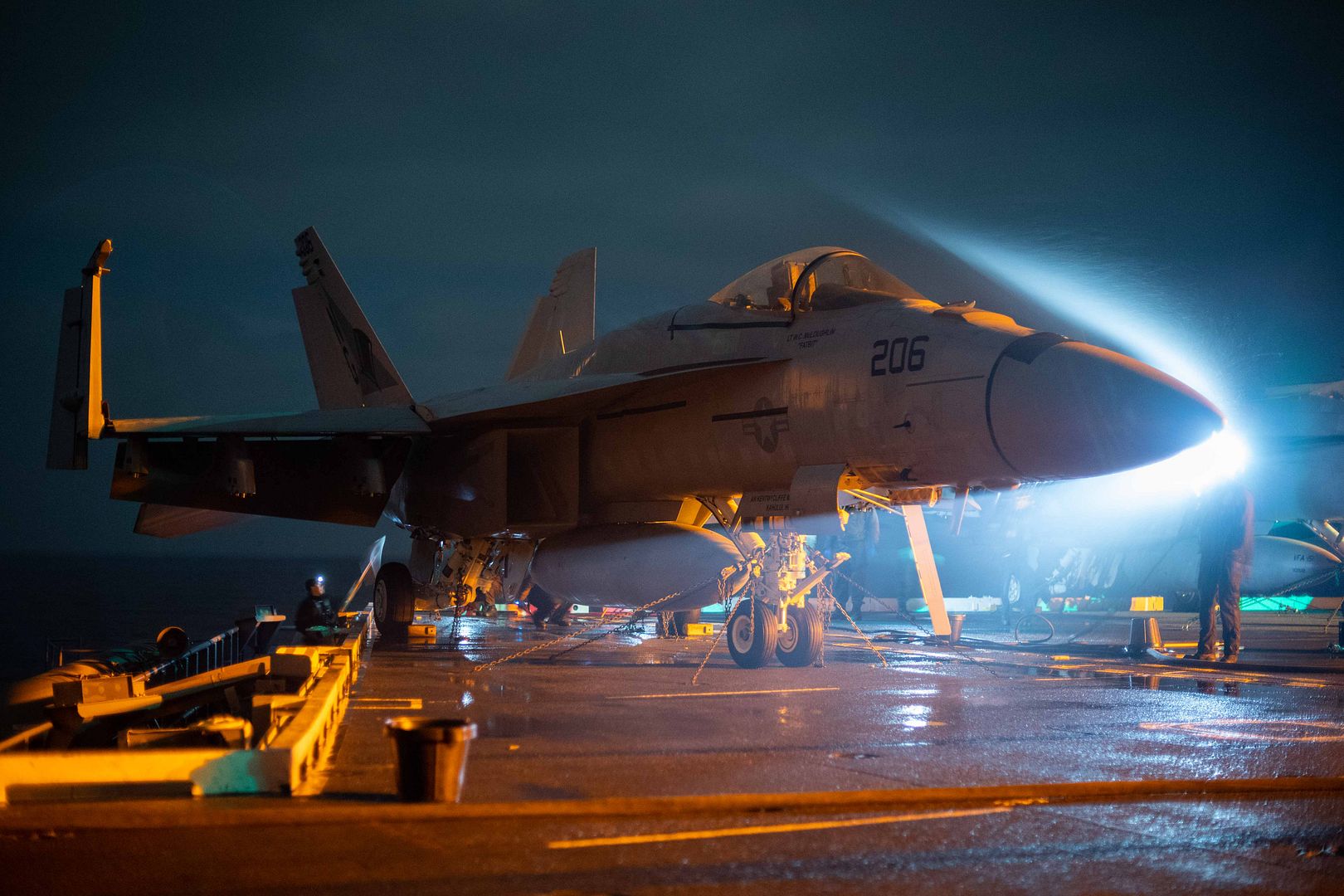
SOUTH CHINA SEA (Aug. 24, 2018) An F-35B Lightning II attached to the Avengers of Marine Fighter Attack Squadron (VMFA) 211 launches from the flight deck of Wasp-class amphibious assault ship USS Essex (LHD 2) during a scheduled deployment of the Essex Amphibious Ready Group (ARG) and 13th Marine Expeditionary Unit (MEU). The Essex ARG/13th MEU is a capable and lethal Navy-Marine Corps team deployed to the 7th fleet area of operations to support regional stability, reassure partners and allies and maintain a presence postured to respond to any crisis ranging from humanitarian assistance to contingency operations. The Essex ARG and 13th MEU is the first continental U.S. Navy/Marine Corps team to deploy with the new and increased multi-mission capabilities of the F-35B Lightning II, ultimately increasing the lethality and survivability of the amphibious force. (U.S. Navy photo by Mass Communication Specialist 2nd Class Chandler Harrell/Released)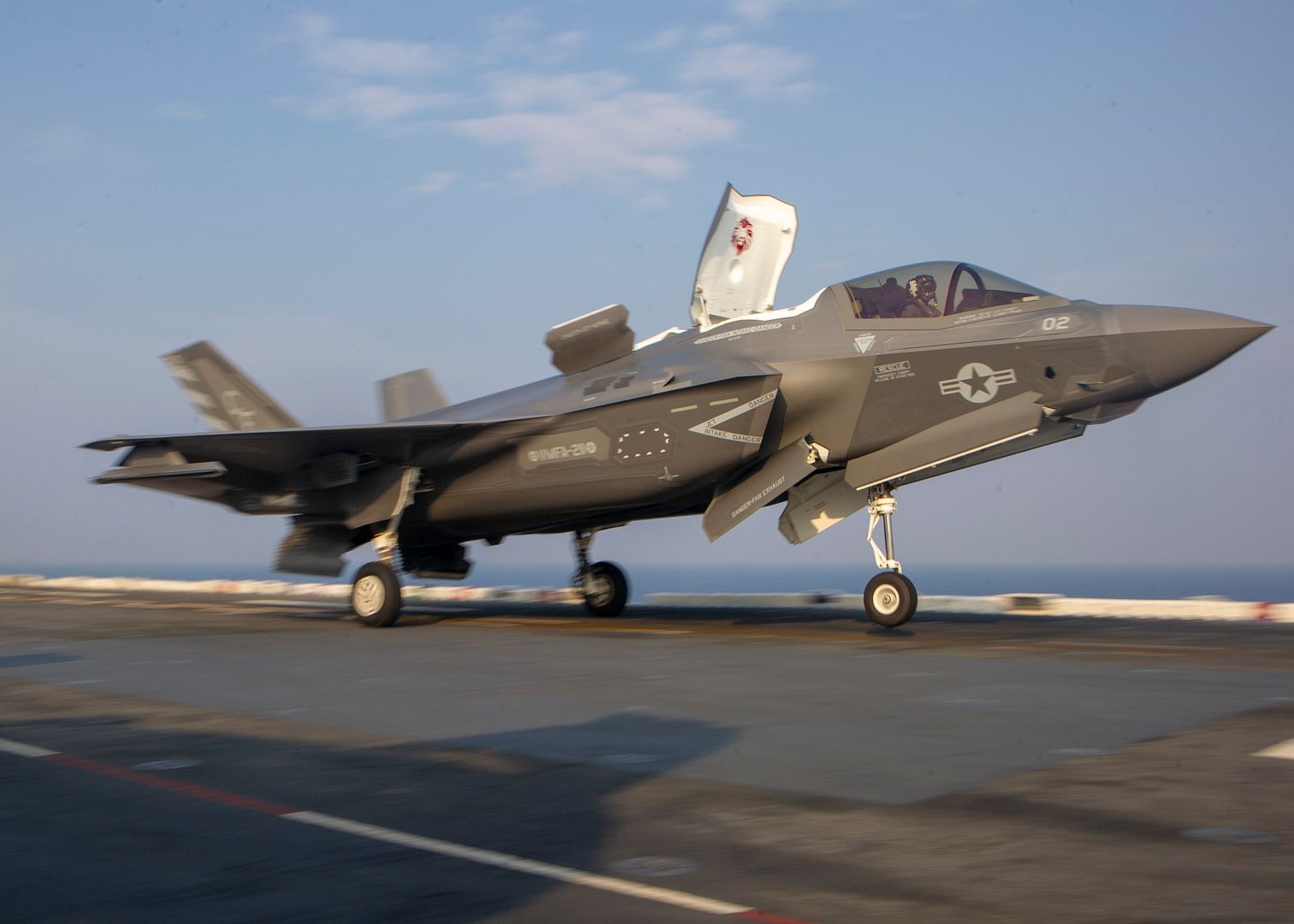
Airbus Perlan Mission II, the world?s first initiative to pilot an engineless aircraft to the edge of space, made history again yesterday in El Calafate, Argentina, by soaring in the stratosphere to a pressure altitude of over 62,000 feet (60,669 feet GPS altitude). This set a new gliding altitude world record, pending official validation.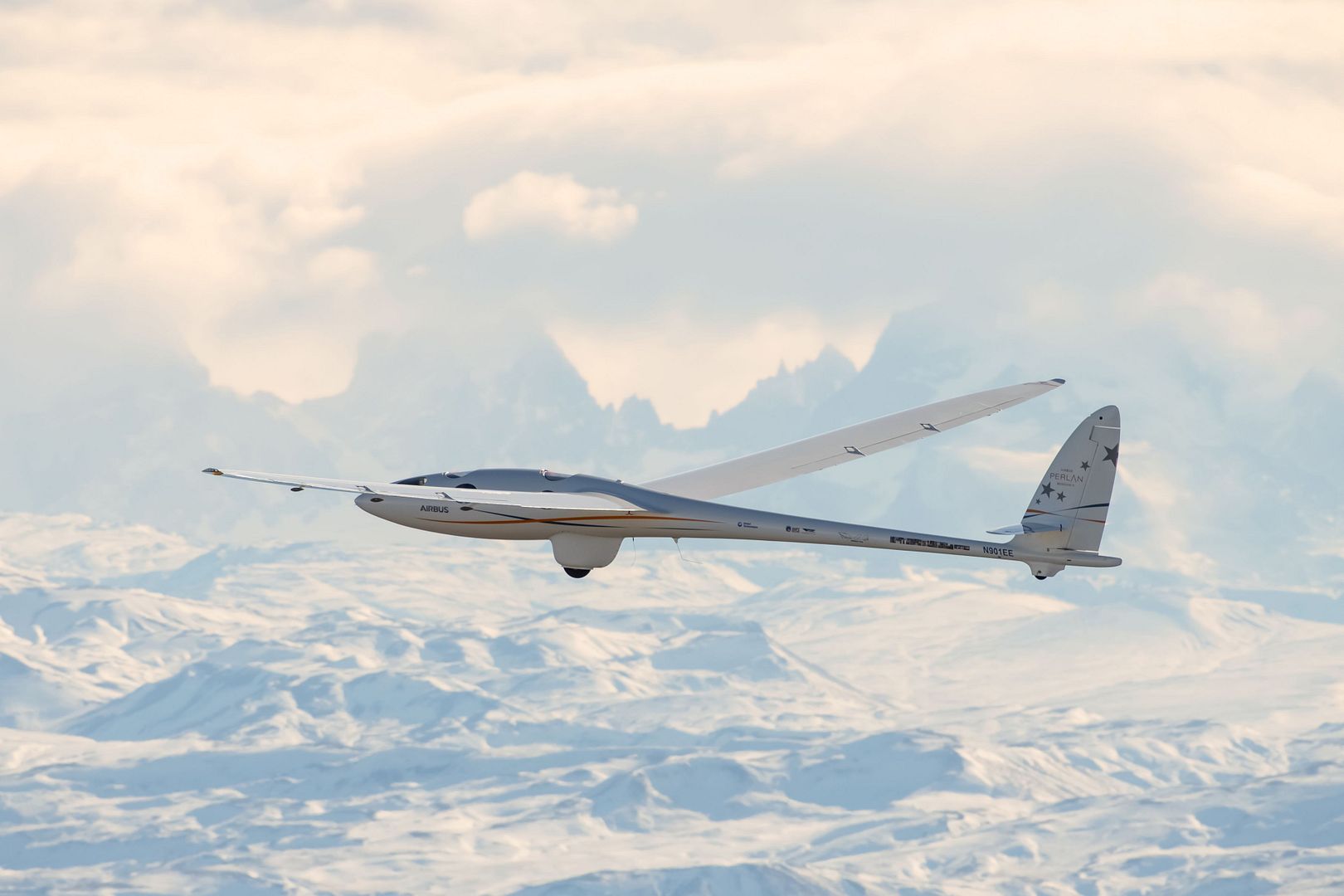
The pressurized Perlan 2 glider, which is designed to soar up to 90,000 feet, passed the Armstrong Line, the point in the atmosphere above which an unprotected human?s blood will boil if an aircraft loses pressurization.
This marks a second glider altitude world record for Jim Payne and Morgan Sandercock, the same two Perlan Project pilots who soared the Perlan 2 to 52,221 feet GPS altitude on Sept. 3, 2017, in the same remote region of Argentine Patagonia. The 2017 record broke a previous record that was set in 2006, in the unpressurized Perlan 1, by Perlan Project founder Einar Enevoldson and Steve Fossett.
?This is a tremendous moment for all the volunteers and sponsors of Airbus Perlan Mission II who have been so dedicated to making our nonprofit aerospace initiative a reality,? said Ed Warnock, CEA of The Perlan Project. ?Our victory today, and whatever other milestones we achieve this year, are a testament to a pioneering spirit of exploration that runs through everyone on the project and through the organizations that support us.?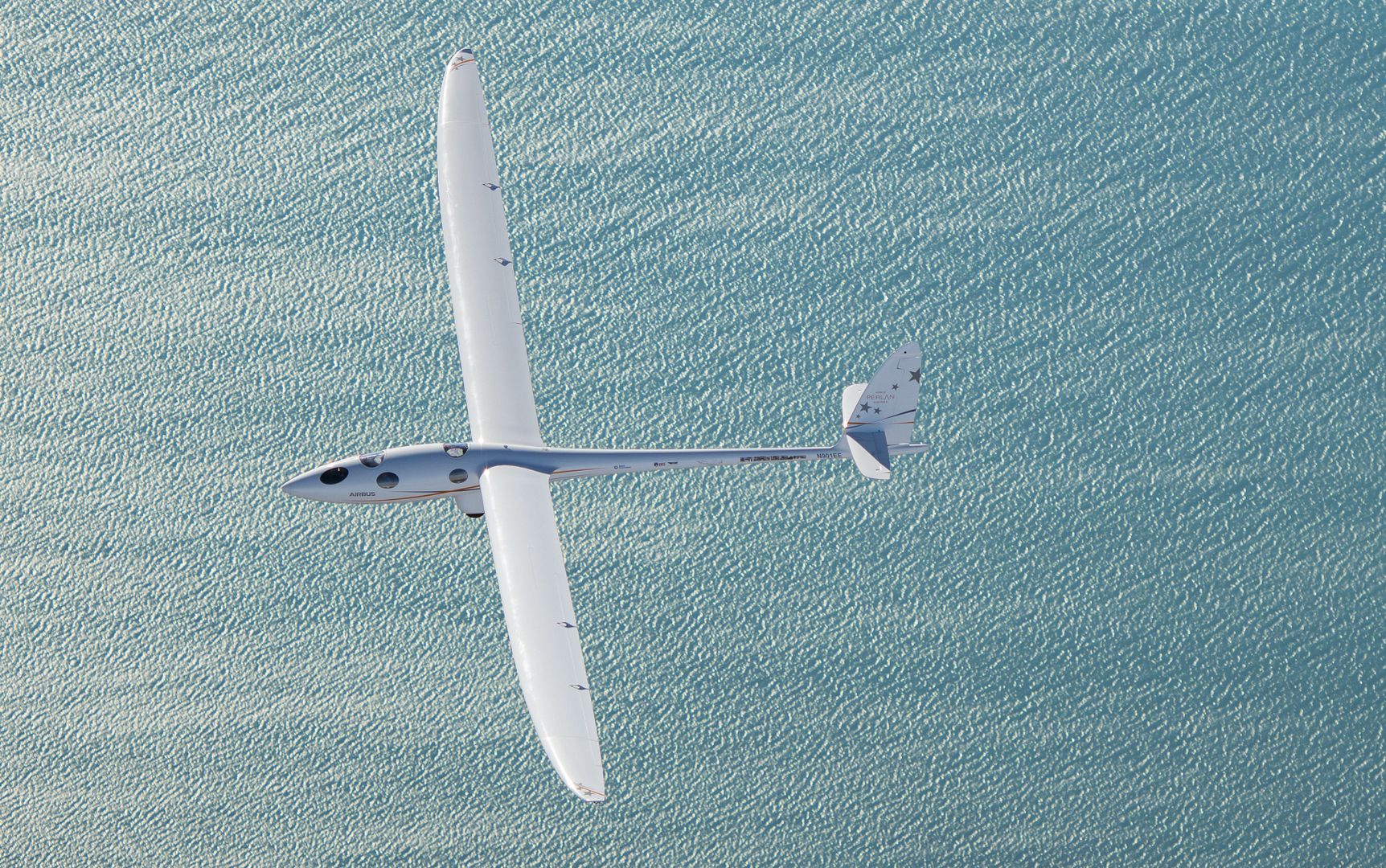
?Innovation is a buzzword in aerospace today, but Perlan truly embodies the kind of bold thinking and creativity that are core Airbus values,? said Tom Enders, Airbus CEO. ?Perlan Project is achieving the seemingly impossible, and our support for this endeavor sends a message to our employees, suppliers and competitors that we will not settle for being anything less than extraordinary.?
Another first-of-its kind achievement this year for the Perlan Project was the use of a special high-altitude tow plane rather than a conventional glider tow plane. During yesterday?s flight, Perlan 2 was towed to the base of the stratosphere by a Grob Egrett G520 turboprop, a high-altitude reconnaissance plane that was modified for the task earlier this summer. Operated by AV Experts, LLC, and flown by chief pilot Arne Vasenden, the Egrett released Perlan 2 at around 42,000 feet, the approximate service ceiling of an Airbus A380.
To soar into the highest areas of Earth?s atmosphere, Perlan 2 pilots catch a ride on stratospheric mountain waves, a weather phenomenon created when rising air currents behind mountain ranges are significantly strengthened by the polar vortex. The phenomenon occurs only for a brief period each year in just a few places on earth. Nestled within the Andes Mountains in Argentina, the area around El Calafate is one of those rare locations where these rising air currents can reach to 100,000 feet or more.
Built in Oregon and home-based in Minden, Nevada, the Perlan 2 glider incorporates a number of unique innovations to enable its ambitious mission: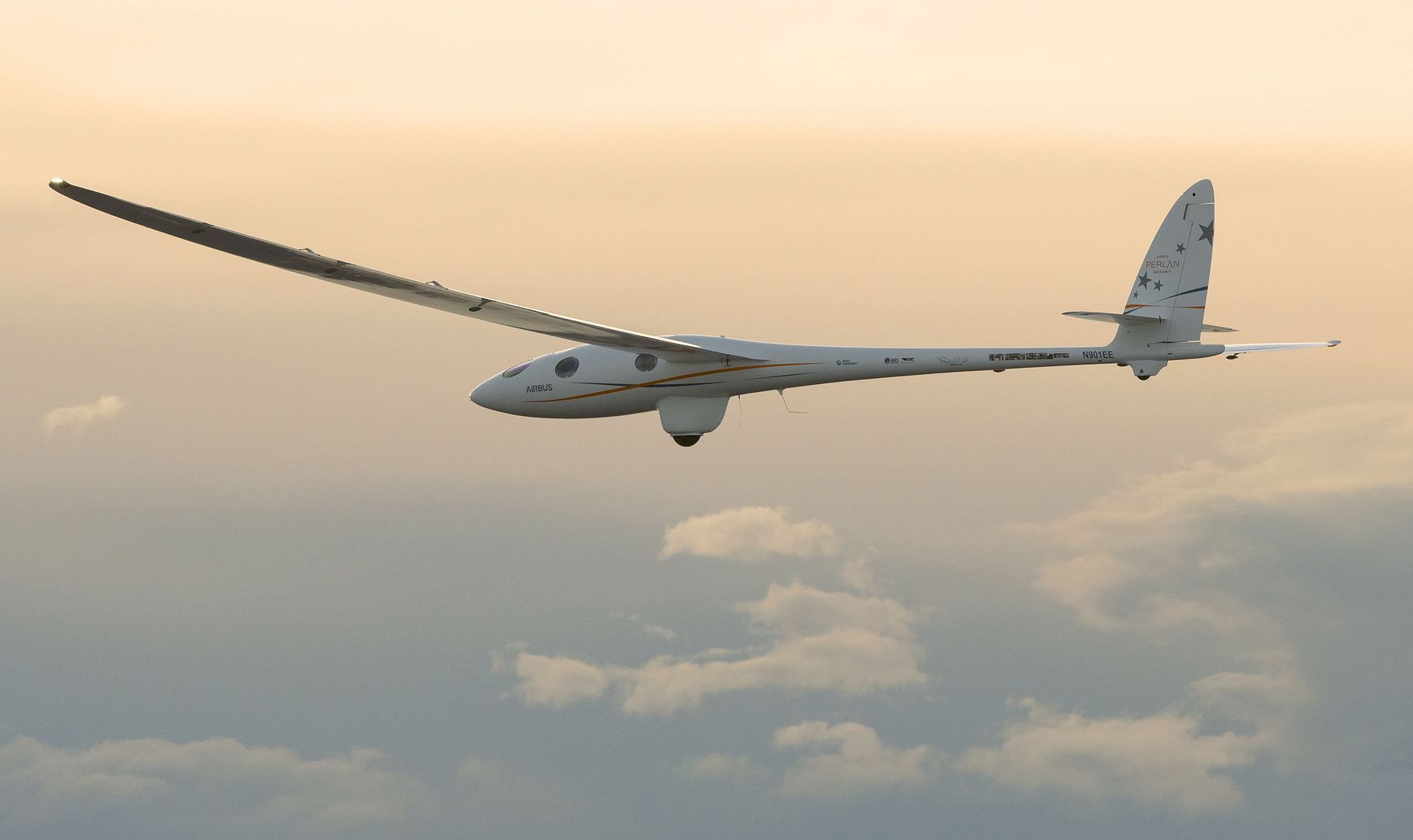
A carbon-fiber capsule with a unique high-efficiency, passive cabin pressurization system that eliminates the need for heavy, power-hungry compressors.
A unique closed-loop rebreather system, in which the only oxygen used is what the crew metabolizes. It is the lightest and most efficient system for a sealed cabin, and its design has applications for other high-altitude aircraft.
An onboard ?wave visualization system? that graphically displays areas of rising and sinking air in cockpits. For commercial flights, following lines of rising air would allow faster climbs and save fuel, while also helping aircraft avoid dangerous phenomena such as wind shear and severe downdrafts.
Unlike powered research aircraft, Perlan 2 does not affect the temperature or chemistry of the air around it, making it an ideal platform to study the atmosphere. The experiments carried aloft in its instrument bay are yielding new discoveries related to high-altitude flight, weather and climate change.
This season, Perlan 2 is flying with experiments developed by The Perlan Project?s science and research committee, as well as projects created in collaboration with organizations and schools in the U.S. and Argentina. Perlan 2 research projects currently include:
- An experiment measuring radiation effects at high altitudes, designed by students from Cazenovia Central School & Ashford School in Connecticut. This project is in coordination with Teachers in Space, Inc., a nonprofit educational organization that stimulates student interest in science, technology, engineering and mathematics;
- A flight data recorder, developed by Argentina?s Instituto de Investigaciones Cient?ficas y T?cnicas para la Defensa (CITEDEF);
- A second flight data recorder, designed by students at Argentina?s La Universidad Tecnol?gica Nacional (UTN);
- A space weather (radiation) instrument;
- An experiment titled ?Marshmallows in Space,? developed by the Oregon Museum of Science & Discovery to teach the scientific process to preschoolers.
- Two new environmental sensors, developed by The Perlan Project.
The Perlan 2 will continue to pursue higher altitude flights and conduct research in the stratosphere as weather and winds permit through the middle of September.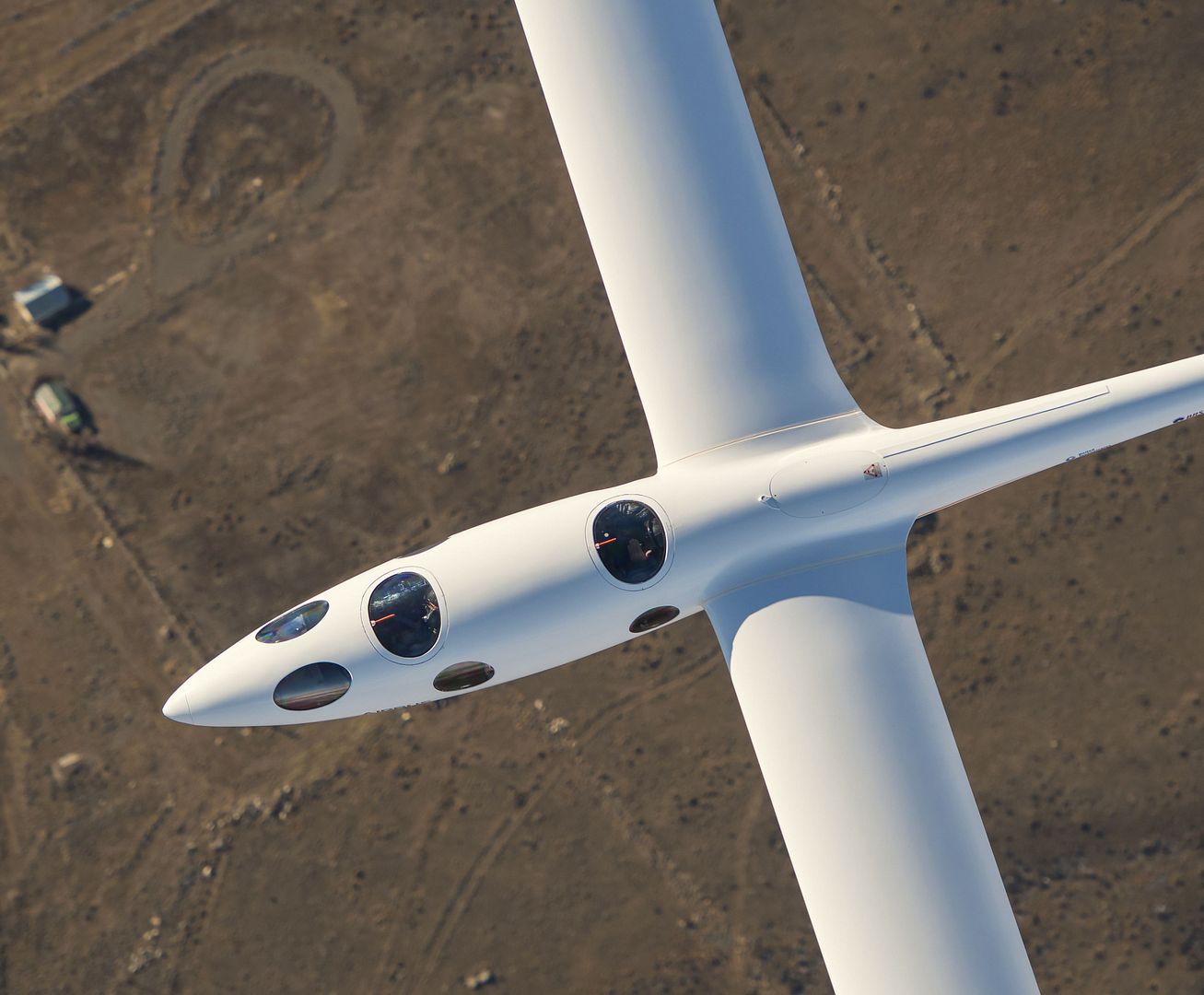
-
 Main AdminA Romanian air force IAR-330 Puma helicopter takes off after simulating a rescue mission with U.S. Air Force 37th Airlift Squadron pilots during a Survival, Evasion, Rescue, and Escape scenario in Bolovani, Romania, Aug. 24, 2018. The training gave the 37th AS pilots refresher training while providing rescue scenarios for the Romanian air force pilots to practice on. (U.S. Air Force photo by Senior Airman Devin Boyer)
Main AdminA Romanian air force IAR-330 Puma helicopter takes off after simulating a rescue mission with U.S. Air Force 37th Airlift Squadron pilots during a Survival, Evasion, Rescue, and Escape scenario in Bolovani, Romania, Aug. 24, 2018. The training gave the 37th AS pilots refresher training while providing rescue scenarios for the Romanian air force pilots to practice on. (U.S. Air Force photo by Senior Airman Devin Boyer)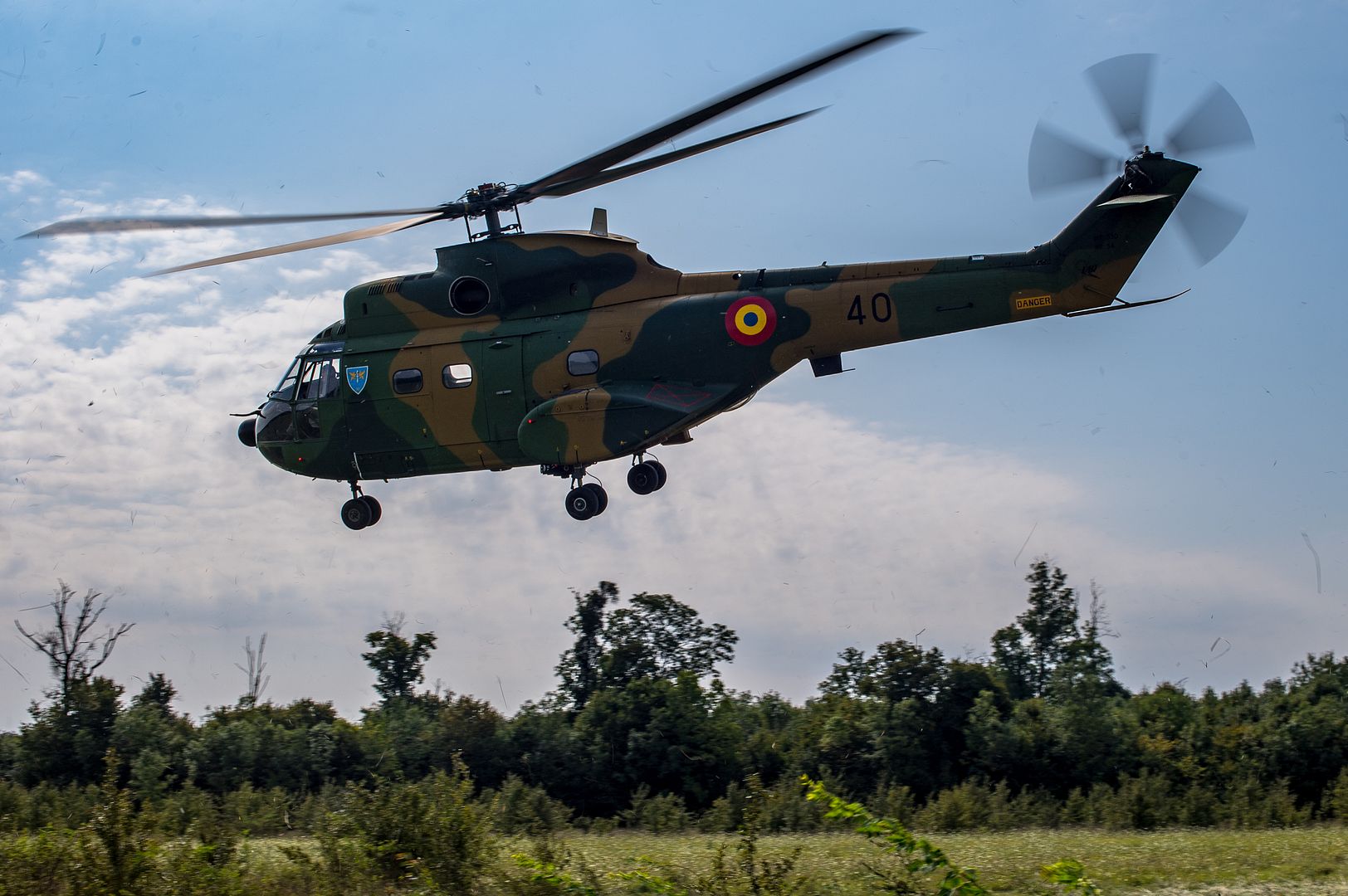
Two MH-60S Seahawks take off from a flight deck of the U.S.S. Kearsarge to observe and conduct a visit, board, search and seizure evolution at sea Aug. 27, 2018. Lt. Gen. Robert F. Hedelund, II Marine Expeditionary Force commanding general, and Vice Adm. Andrew Lewis, commander U.S. 2nd Fleet, were aboard to observe and discuss the joint partnership between II MEF and the 2nd Fleet. (U.S. Marine Corps photo by Pfc. Nicholas Guevara)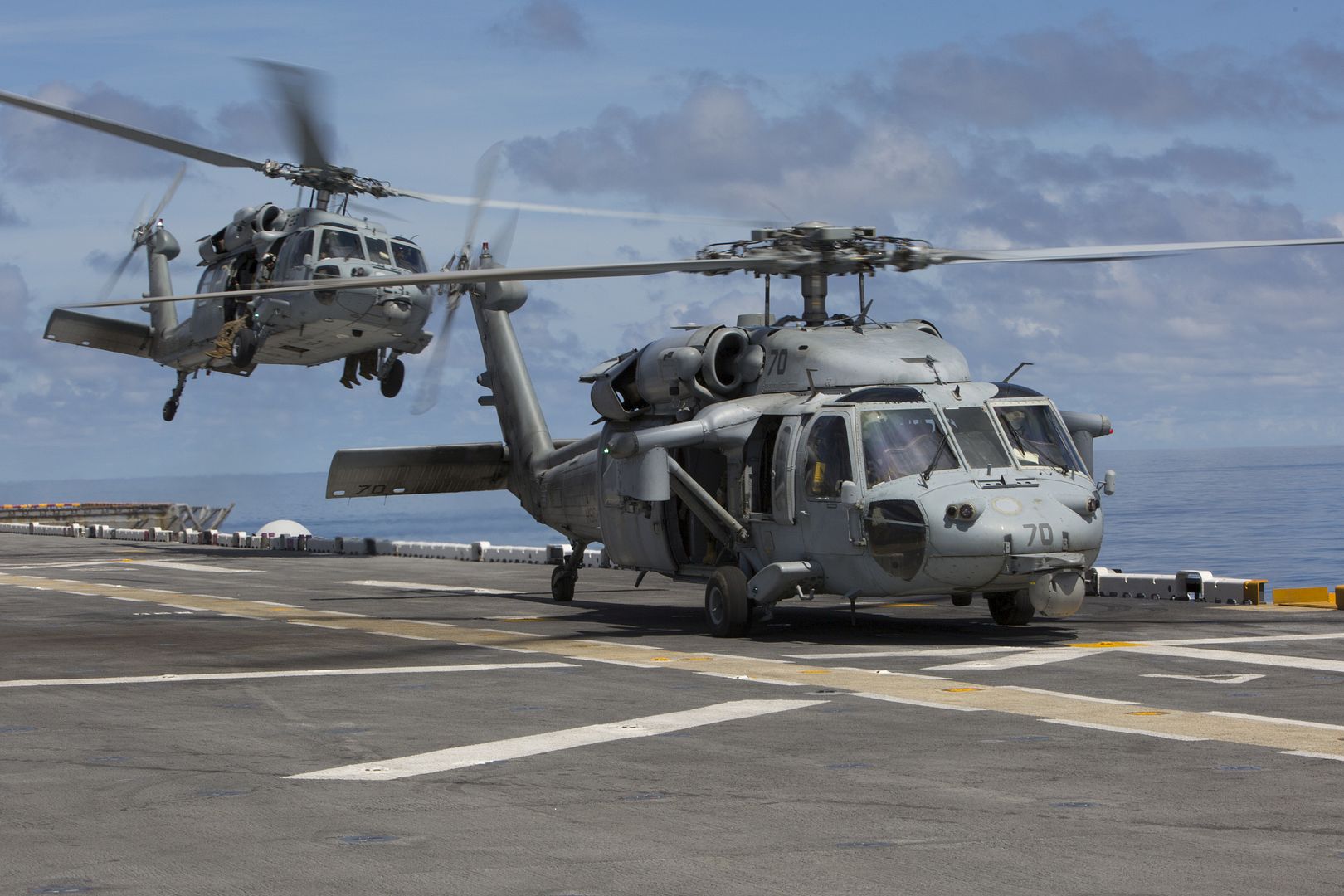
A U.S. Air Force F-16C Fighting Falcon from the 177th Fighter Wing, takes off for a practice run for the "Thunder over the Boardwalk" Air Show in Atlantic City, N.J., Aug. 21, 2018. Now celebrating its 16th year, the Atlantic City Airshow returned to the skies above the free beaches and Boardwalk in Atlantic City with a multitude of performers and acts. (U.S. Air National Guard photo by Senior Airman Cristina J. Allen)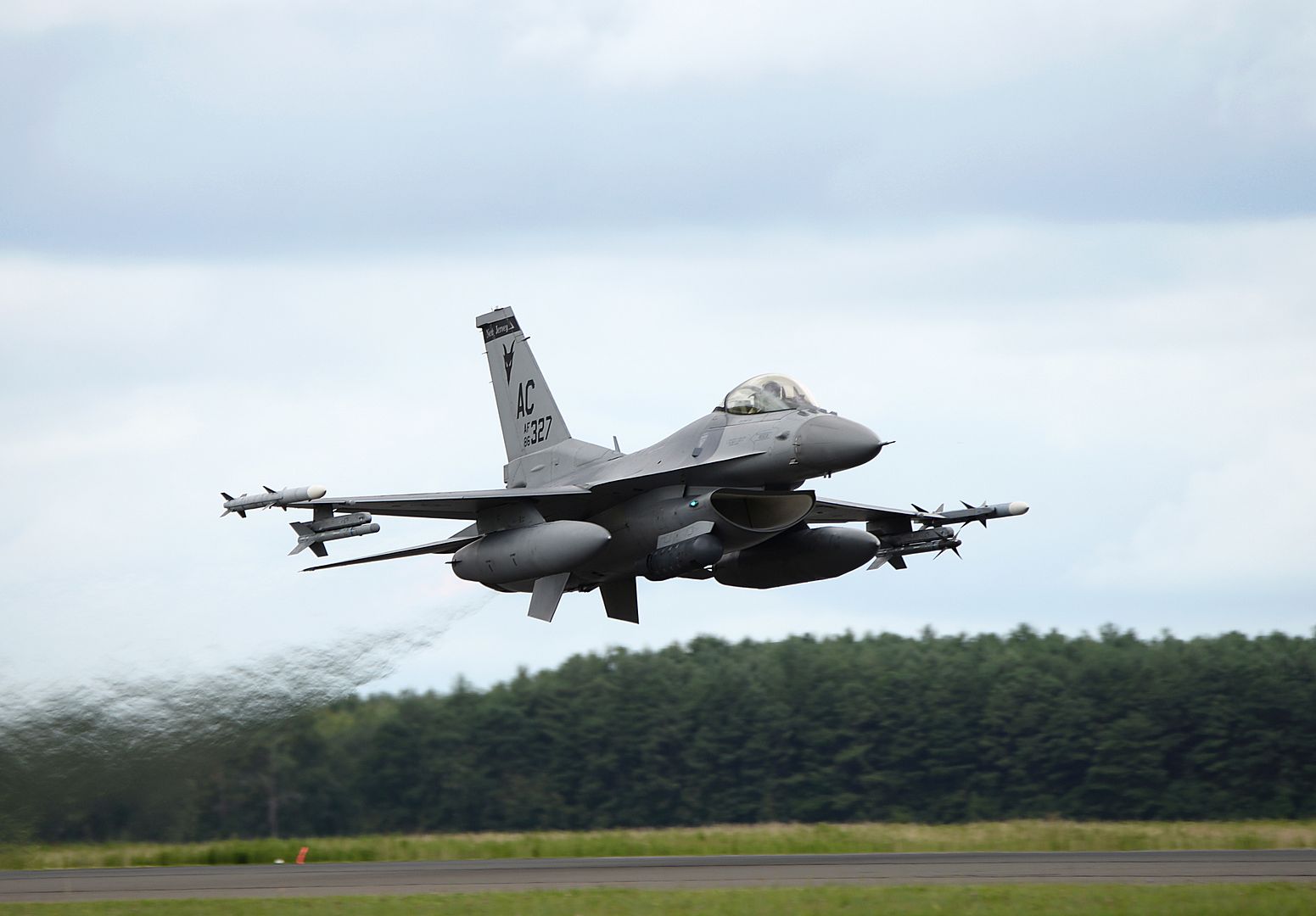
ATLANTIC OCEAN (Aug. 22, 2018)
A naval aviator taxies an F-35C Lightning II from the Rough Raiders of Strike Fighter Squadron (VFA) 125 on the flight deck after landing aboard the Nimitz-class aircraft carrier USS Abraham Lincoln (CVN 72). U.S. Navy photo by Mass Communication Specialist 3rd Class Jeff Sherman (Released)
ATLANTIC OCEAN (Aug. 20, 2018) An F-35C Lightning II assigned to the Rough Raiders of Strike Fighter Squadron (VFA) 125 performs a touch-and-go landing on the flight deck of the Nimitz-class aircraft carrier USS Abraham Lincoln (CVN 72). (U.S. Navy photo by Mass Communication Specialist 1st Class Brian M. Wilbur/Released)
PACIFIC OCEAN (Aug. 24, 2018) An MH-60S Sea Hawk helicopter assigned to Helicopter Sea Combat Squadron (HSC) 14 sits chocked and chained on the flight deck aboard the Nimitz-class aircraft carrier USS John C. Stennis (CVN 74). John C. Stennis is underway conducting routine operations in the U.S. 3rd Fleet area of operations. (U.S. Navy photo by Mass Communication Specialist 3rd Class William Rosencrans/Released)
DENVER, Aug. 28, 2018 /PRNewswire/ -- Technicians have completed construction on the spacecraft capsule structure that will return astronauts to the Moon, and have successfully shipped the capsule to Florida for final assembly into a full spacecraft. The capsule structure, or pressure vessel, for NASA's Orion Exploration Mission-2 (EM-2) spacecraft was welded together over the last seven months by Lockheed Martin (NYSE: LMT) technicians and engineers at the NASA Michoud Assembly Facility near New Orleans.
Orion is the world's only exploration-class spaceship, and the EM-2 mission will be its first flight with astronauts on board, taking them farther into the solar system than ever before.
"It's great to see the EM-2 capsule arrive just as we are completing the final assembly of the EM-1 crew module," said Mike Hawes, Lockheed Martin vice president and program manager for Orion. "We've learned a lot building the previous pressure vessels and spacecraft and the EM-2 spacecraft will be the most capable, cost-effective and efficient one we've built."
Orion's pressure vessel is made from seven large, machined aluminum alloy pieces that are welded together to produce a strong, light-weight, air-tight capsule. It was designed specifically to withstand the harsh and demanding environment of deep space travel while keeping the crew safe and productive.
"We're all taking extra care with this build and assembly, knowing that this spaceship is going to take astronauts back to the Moon for the first time in four decades," said Matt Wallo, senior manager of Lockheed Martin Orion Production at Michoud. "It's amazing to think that, one day soon, the crew will watch the sun rise over the lunar horizon through the windows of this pressure vessel. We're all humbled and proud to be doing our part for the future of exploration."
The capsule was shipped over the road from New Orleans to the Kennedy Space Center, arriving on Friday, Aug. 24. Now in the Neil Armstrong Operations and Checkout Building, Lockheed Martin technicians will immediately start assembly and integration on the EM-2 crew module.
August 28, 2018 Montr?al Commercial Aircraft, Press Release
Bombardier Commercial Aircraft and Industrial Bank Financial Leasing Co., Ltd (CIB Leasing) announced today that the parties have agreed to convert a previously announced order for 10 Bombardier CRJ Series aircraft to five 90-seat Bombardier Q400 turboprops, and five Bombardier CRJ900 regional jets.
?As we work alongside CIB Leasing to explore market opportunities for regional fleet growth and network expansion in Asia, we are pleased to see that more 90-Seat Q400 turboprop will be available in the region,? said Fred Cromer, President, Bombardier Commercial Aircraft. ?With 15 percent lower cost per seat than the 78-seat version, our 90-seat turboprop aircraft has unique capabilities and unbeatable productivity, and we are confident that our leasing partner and potential operators will extract tremendous value from it.?
This converted purchase agreement, based on list price, is valued at about US$ 420 million.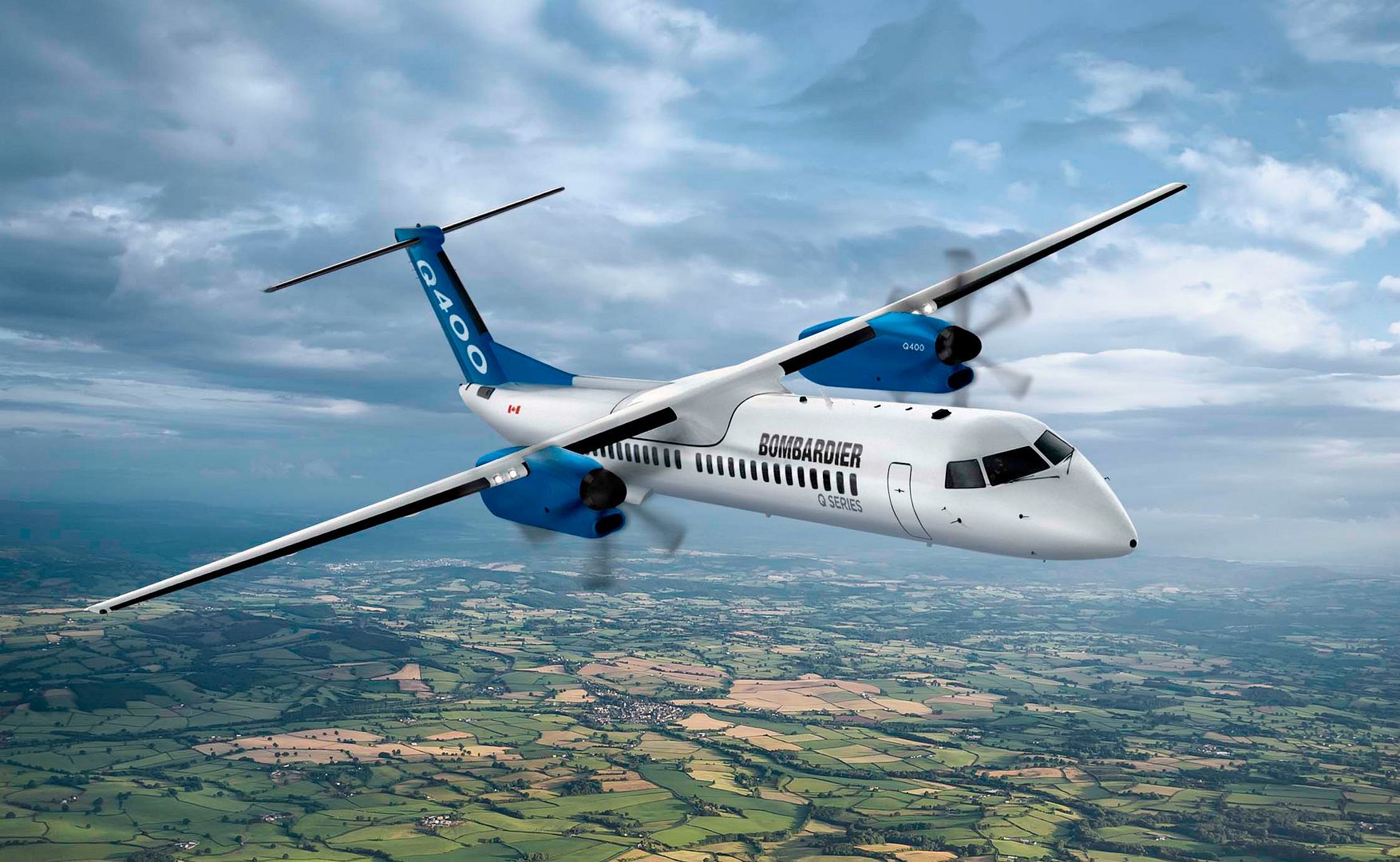
-
 Main Admin(Source: US Navy; issued Aug 28, 2018)
Main Admin(Source: US Navy; issued Aug 28, 2018)
ATLANTIC OCEAN --- F-35C Lightning II aircraft from Strike Fighter Squadron (VFA) 125 are conducting their Operational Test-1 (OT-1) with Carrier Air Wing (CVW) 7 and Carrier Strike Group 12 aboard the Nimitz-class aircraft carrier USS Abraham Lincoln (CVN 72).
OT-1 evaluates the full spectrum of the F-35C?s suitability for operation within a carrier air wing and mission effectiveness to the maximum extent possible.
?The F-35C brings stealth, enhanced electronic capabilities and a different sustainment model,? said Rear Adm. Dale Horan, director, Joint Strike Fighter Fleet Integration Office. ?Operating this new generation of aircraft out on the aircraft carrier brings a different set of tools, techniques and procedures, and we?re learning how to integrate them into the battle group.?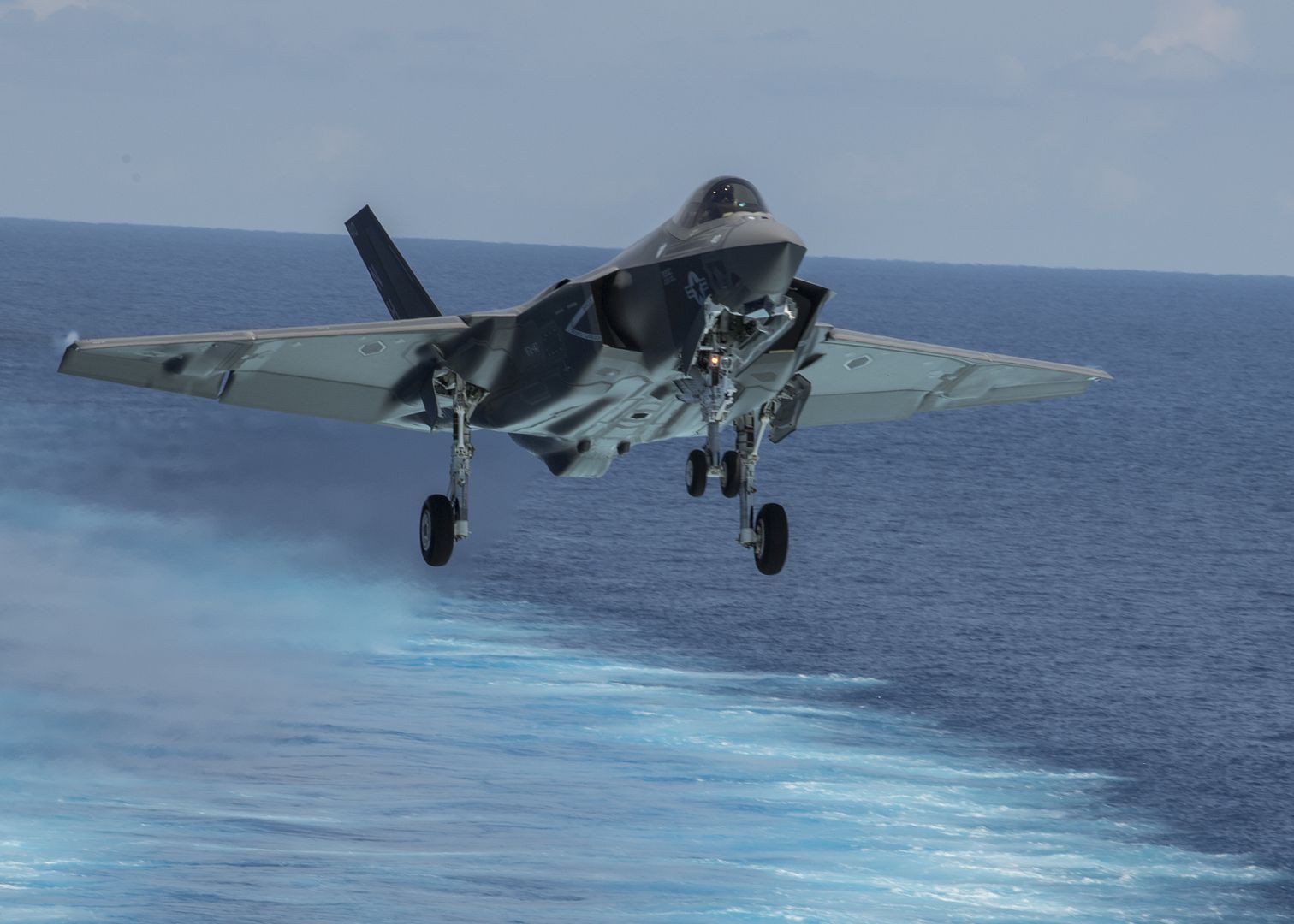
The F-35C has the ability to pass on the information it collects not only to other F-35s in the air, but to legacy aircraft, carrier air wings, strike groups and troops on ground, enhancing the warfighting potential of the fleet.
Evaluators have been assessing the suitability of the F-35C aboard carriers by defining how well it performs with other aircraft and incorporates into an air plan, monitoring maintenance and identifying its logistics footprint.
?We hope to see how it integrates onboard the ship,? said Horan. ?Can we maintain it? Can we get the parts? Can we get it airborne? Can we repair it if it has a problem? Those are the kinds of things [we are looking for].?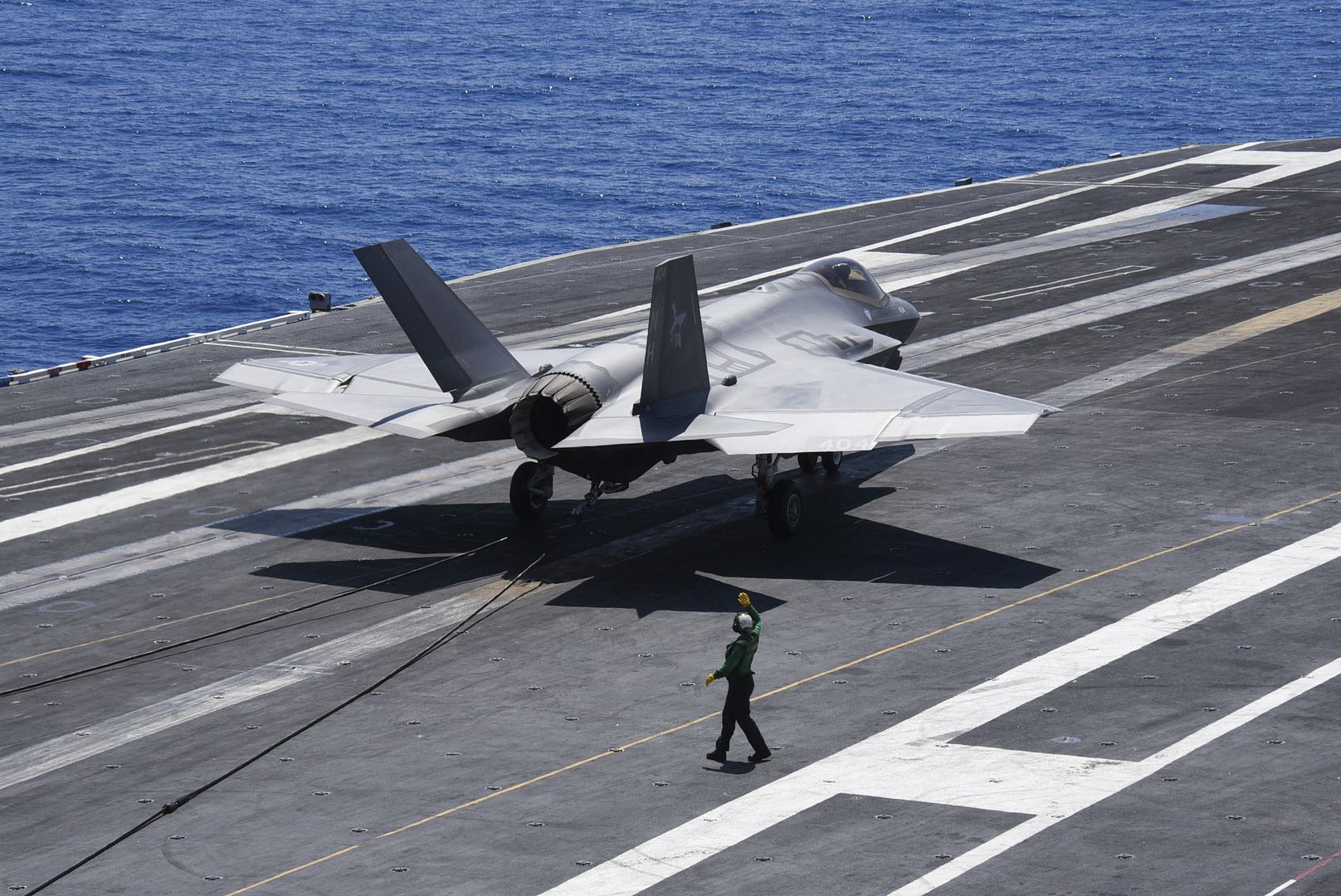
In addition to assessing the suitability of the F-35C on a Nimitz-class class aircraft carrier, OT-1 evaluators observed the effectiveness of the F-35C in real-world scenarios.
?The effectiveness piece is what we?re doing when we?re airborne and executing missions,? said Capt. Matt Norris, from the Joint Strike Fighter Operational Test Team. ?We?ve been integrating with the strike group and accomplishing many missions like defensive counter air and anti-submarine warfare, for instance.?
Previously, F-35C and F/A-18 Super Hornet pilots have only conducted carrier qualifications together, so OT-1 marks the first time the F-35Cs have joined a carrier air wing to perform in a cyclic operations environment.
During cyclic operations, aircraft simulate missions, practice aerial maneuvers and take off and land continuously with brief pauses to allow for maintenance, fuel and ordnance changes.
Aboard Abraham Lincoln, the F-35C has been flying cyclic operations with F/A-18 Super Hornets, E-2D Hawkeyes and EA-18G Growlers, conducting missions it would execute in combat if required. The addition of the F-35C brings advanced capabilities that transform the way an air wing conducts operations.
Operational Test-1 helps give the Navy an assessment of how the aircraft would perform on deployment. As adversaries advance and legacy aircraft age, the F-35C is critical to maintaining air dominance.
?This is the first time we really see how the aircraft works on the aircraft carrier; how we do maintenance and sustain it while we?re at sea; how it integrates with the ship; how it interoperates with communications, datalinks, the other aircraft; and how we conduct missions and tie in to other aircraft when we conduct missions,? said Horan.
And while pilots adapted to the new aircraft, the crew of Abraham Lincoln also adjusted to the F-35s. From Aviation Boatswain?s Mates to Air-traffic Controllers, each Sailor learned to manage the aircraft with its unique attributes and capabilities.
?The level of planning that is required to execute an evolution like we did for OT-1 is huge, so everyone aboard Abraham Lincoln should be proud of the level of effort that they put in and how well they executed,? said Norris. ?We can?t fly this aircraft without everything the ship does for us, and the Lincoln has been an impressive ship.?
With the successful completion of OT-1, the fifth-generation aircraft is one step closer to becoming deployable in the Navy fleet.
?The aircraft looks like a naval aircraft on the flight deck. From that perspective, the big picture looks pretty good,? said Horan.
Data and lessons learned during OT-1 will lay the groundwork for future F-35C deployments aboard U.S. Navy aircraft carriers following the Navy?s F-35C initial operating capability declaration.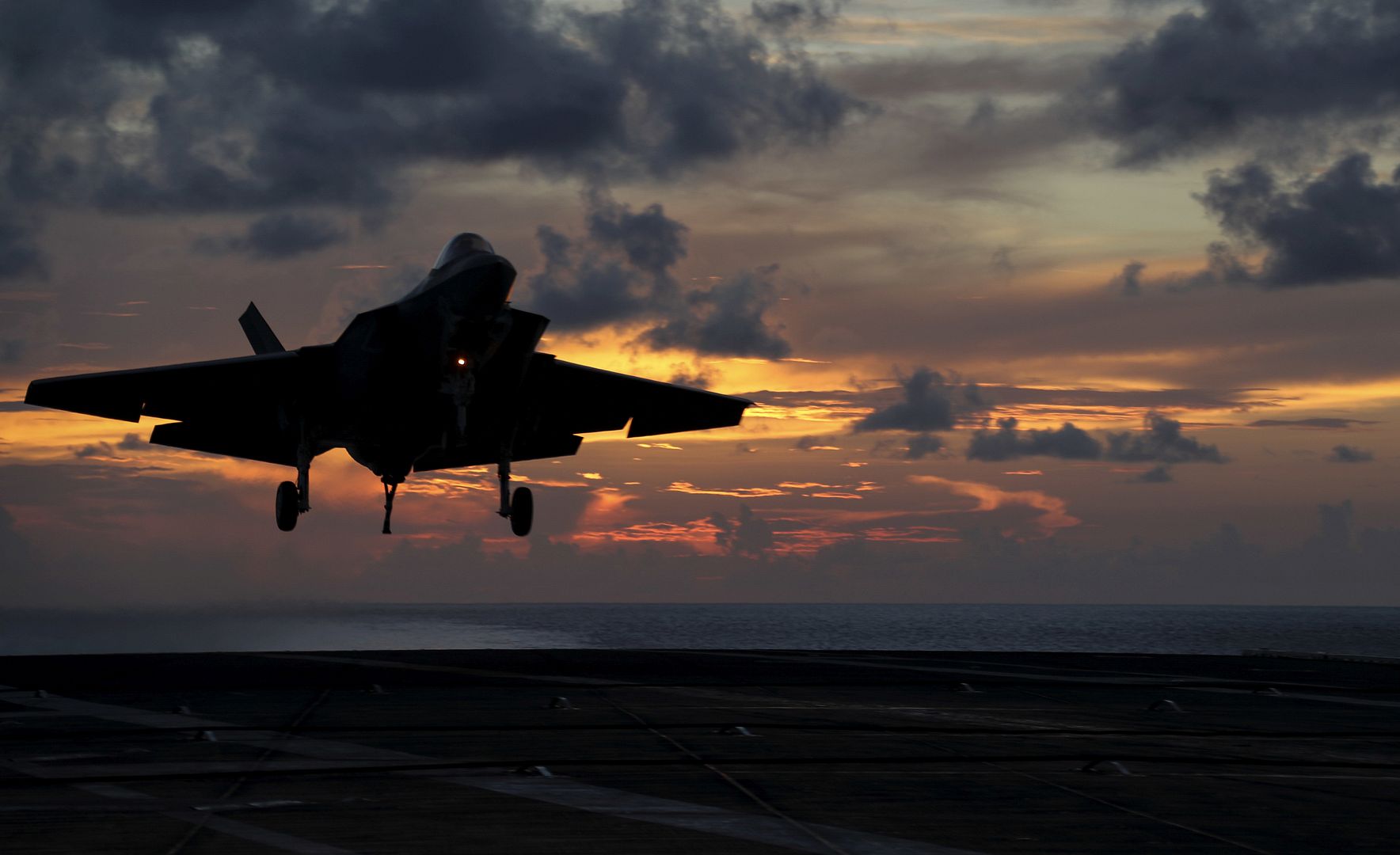
SEATTLE, Aug. 29, 2018 /PRNewswire/ -- Boeing [NYSE:BA] and the Virgin Australia Group [ASX:VAH] announced the airline is adding the largest and most efficient member of the 737 MAX family to its growing single-aisle fleet. The carrier has converted ten orders for the 737 MAX 8 for the larger MAX 10 variant.
The airline, which has a number of 737 MAX 8s on order, said it saw the value of adding the MAX 10 to the mix as the aircraft will provide additional capacity and flexibility.
Virgin Australia Group Chief Financial Officer Geoff Smith said, "We are pleased to be welcoming the 737 MAX 10 aircraft into our expanding fleet in 2022. The addition of the 737 MAX 10 will provide us with additional flexibility and capability to support our network and operations. We are proud to become Australia's first operator of the 737 MAX and we look forward to the opportunities that operating this type of aircraft will open up to us."
With its headquarters in Brisbane, Australia, the Virgin Australia Group is the country's second-largest airline with a fleet of more than 130 aircraft. The Next-Generation 737 has formed the backbone of the Group's fleet with more than 80 currently in operation and the 737 MAX is expected to bolster the Group's fleet.
"We are excited to expand our partnership with the Virgin Australia Group as they look to introduce the 737 MAX 10 in to their world-class fleet," said Ihssane Mounir, senior vice president of Commercial Sales and Marketing, The Boeing Company. "The MAX 10 will provide the airline with added capabilities, especially with the extended range and efficiency, to better support their fleet and network."
The MAX 10 is the largest member of the 737 MAX aircraft family. The airplane will offer operators the lowest cost per seat mile of any commercial aircraft[1] and fly 400 nautical miles (370.4 km) farther than today's Next-Generation 737s. This extended range means that the 737 MAX 10 will be able to cover 99 percent of single-aisle routes around the world.
Virgin Australia joins more than 20 customers who have placed over 500 orders and commitments for the MAX 10. In all, the 737 MAX is the fastest-selling airplane family in Boeing history, having attracted more than 100 customers and nearly 4,700 orders. For more information and feature content, visit - www.boeing.com/commercial/737max.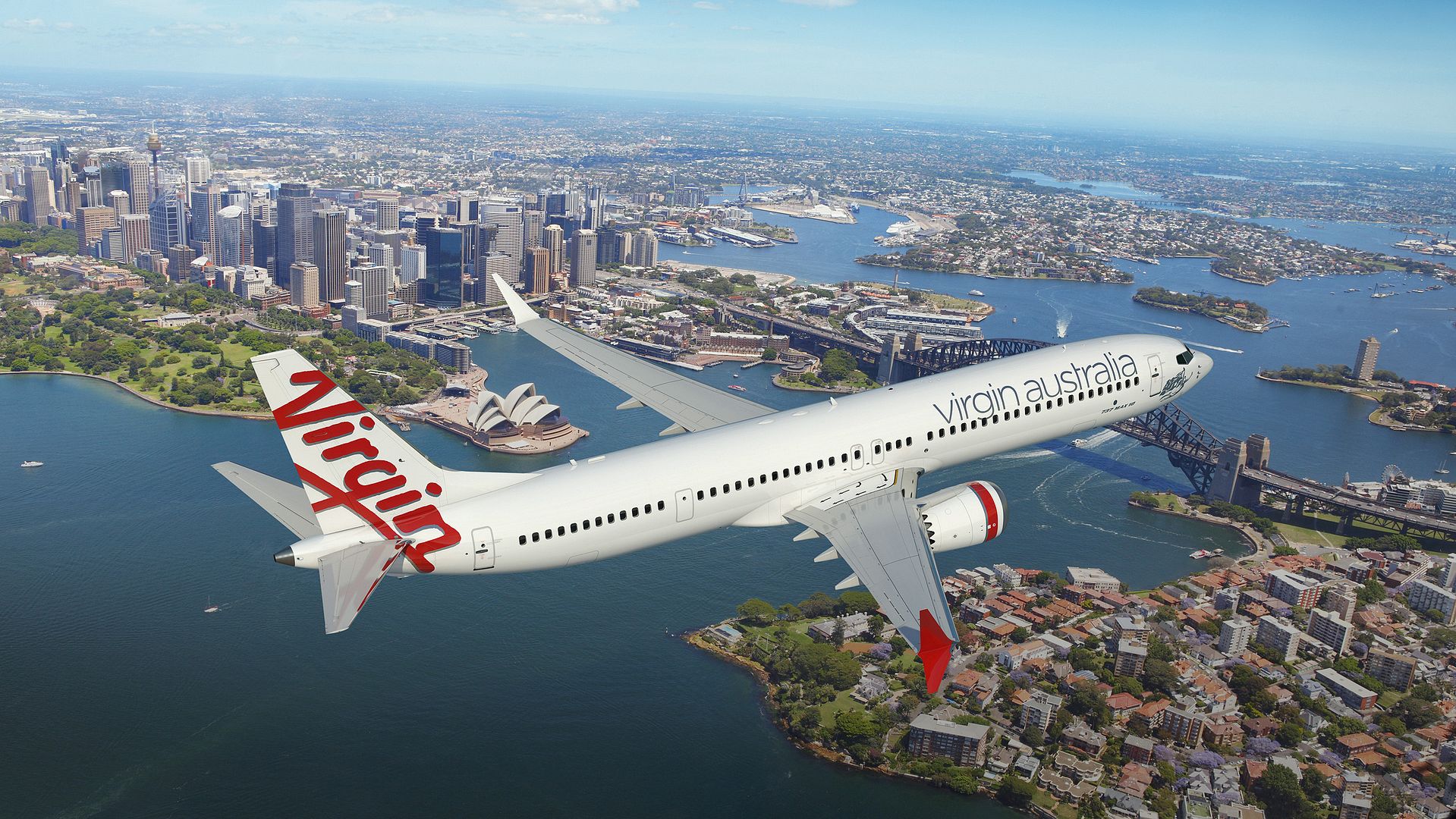
SAO PAULO, Aug. 29, 2018 /PRNewswire/ -- Boeing (NYSE: BA) and GOL Linhas A?reas Inteligentes (NYSE: GOL and B3: GOLL4) today celebrated the unveiling of the carrier's newly outfitted 737 MAX 8 during a celebration in Sao Paulo. The leading Brazilian carrier also announced plans to fly the more fuel-efficient and longer-range 737 airplane on international routes.
"Today is an exciting day for the entire GOL team, we are happy to welcome the 737 MAX 8. We can further improve our operational efficiency by flying a young, modern and safe fleet, while also lowering the cost of air travel and expanding our network to new international destinations," said Paulo Kakinoff, Chief Executive Officer of GOL.
The Brazilian airline took delivery of its first 737 MAX 8 this year and has been improving onboard products and services, such as adding wireless internet to the popular Boeing Sky Interior cabin. The airline is now outfitting its second 737 MAX airplane ? which it received last week ? with the same cabin amenities.
As part of its strategic fleet renewal program, GOL has placed multiple orders for the 737 MAX, including a new order last month at the Farnborough International Airshow. In all, GOL is on track to become the largest MAX operator in Latin America with a fleet of 135 MAX airplanes.
The first MAX airplanes arriving at GOL are the MAX 8 variant, which seats up to 186 passengers in GOL's configuration. The airplane will reduce GOL's fuel use and emissions by 15 percent compared to today's single-aisle airplanes, and can fly farther than its predecessor. With the additional range, GOL said it will begin regular service from Brazil's capital Brasilia and Fortaleza to Miami and Orlando. GOL also plans new international routes to Quito, the capital of Ecuador, with the MAX.
Thirty of GOL's new airplanes will be for the larger MAX 10, which will enable GOL to comfortably serve more than 30 additional passengers. GOL and more than 20 customers have placed over 500 orders and commitments for the MAX 10, which will offer operators the lowest cost per seat mile of any commercial aircraft in service. In all, the 737 MAX family has attracted more than 100 customers and nearly 4,700 orders. For more information and feature content, visit www.boeing.com/commercial/737max.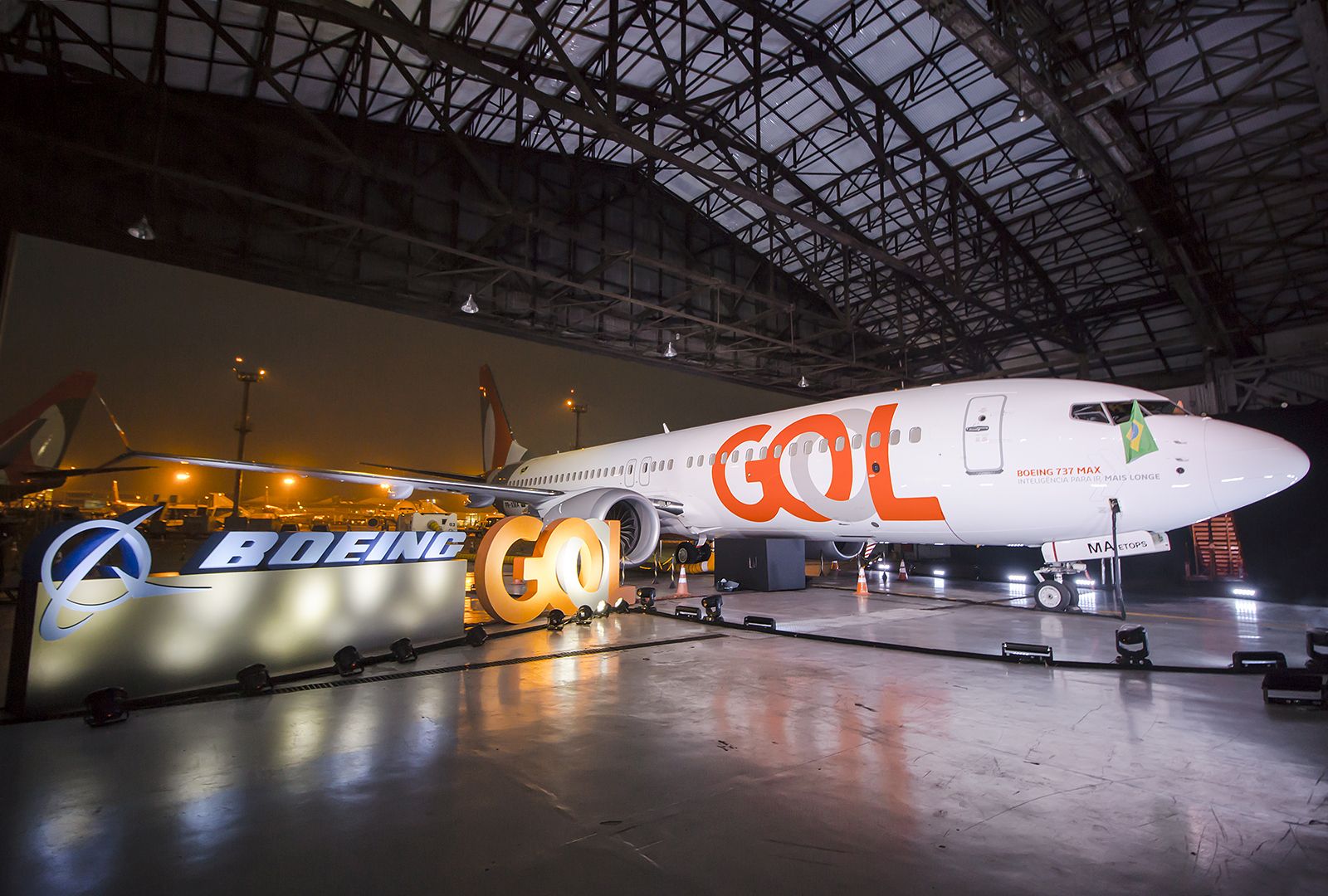
The Chief of the Air Staff Sir Stephen Hillier has marked the conclusion of this year?s RAF NATO deployment to conduct enhanced Air Policing.
Personnel and aircraft from RAF Lossiemouth?s Number 1 (Fighter) Squadron and Number 2 (Army Cooperation) Squadron have conducted the NATO enhanced Air Policing mission in Romania since April.
During the deployment, the RAF conducted eight scrambles in response to a total of 20 Russian aircraft flying towards Romanian air space.
Sir Stephen said: ?This deployment is an example of the UK and the RAF standing by its NATO allies following the NATO Warsaw Summit of 2014, which introduced the Alliance?s assurance measures for Eastern Allies.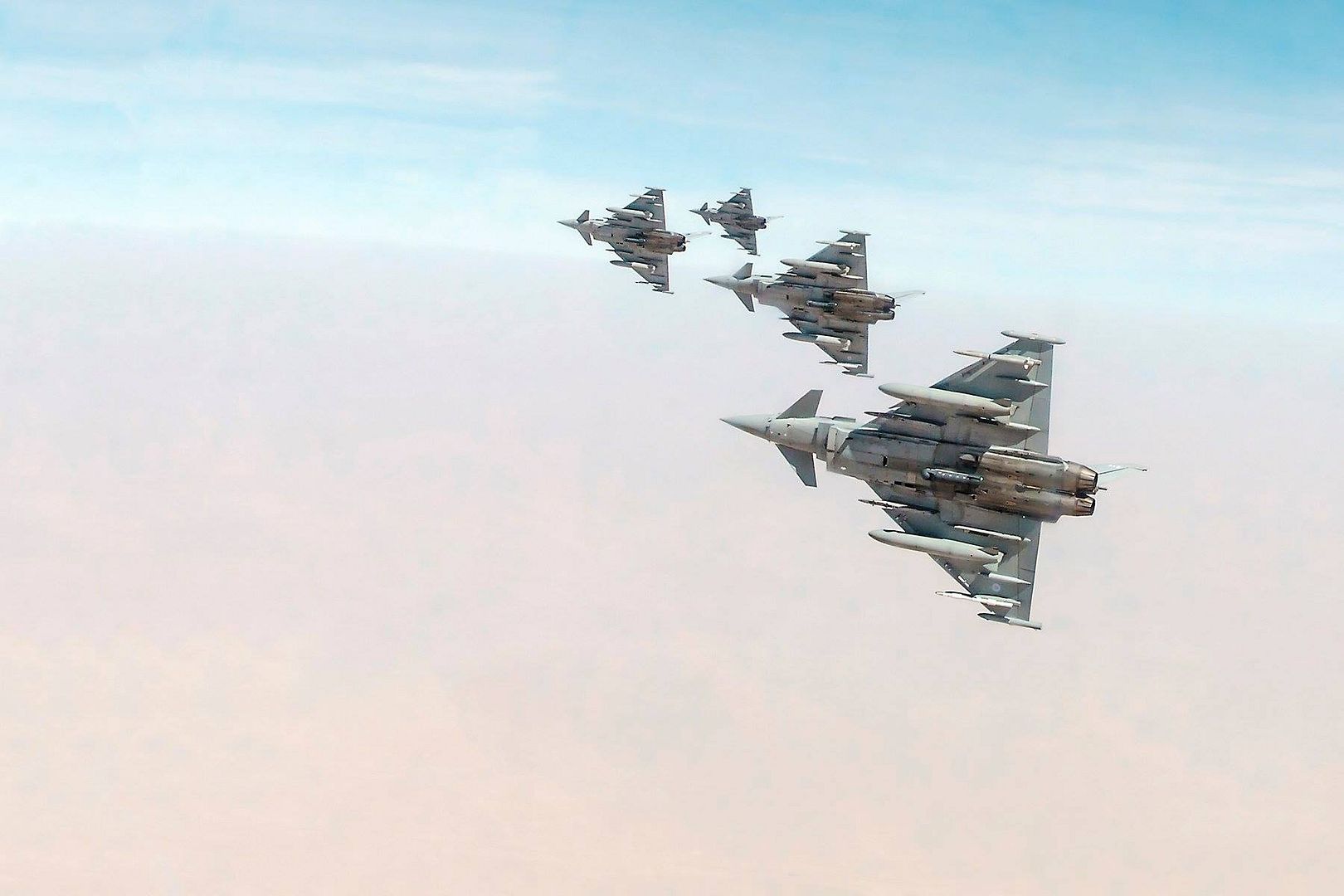
?This operation demonstrates the collective resolve of the Allies, and the defensive nature of their joint effort to deter Russia aggression.?
During his visit to the Scottish air station, Sir Stephen had the opportunity to thank the RAF personnel who deployed this year to Romania.
Sir Stephen said: ?Earlier this year I visited the RAF detachment in Romania and saw for myself the professionalism and hard work of our deployed personnel.?
The RAF detachment has also conducted exercises with Romanian, US, Bulgarian, Hungarian and Croatian military forces. These exercises have allowed air to air, air/land and air/maritime integration training to be carried out with our NATO allies in the region.
For the RAF, this NATO Air Policing mission has now ended, but the Secretary of State for Defence has recently announced that the RAF will be deploying to Estonia and Iceland next year to conduct further NATO Air Policing missions.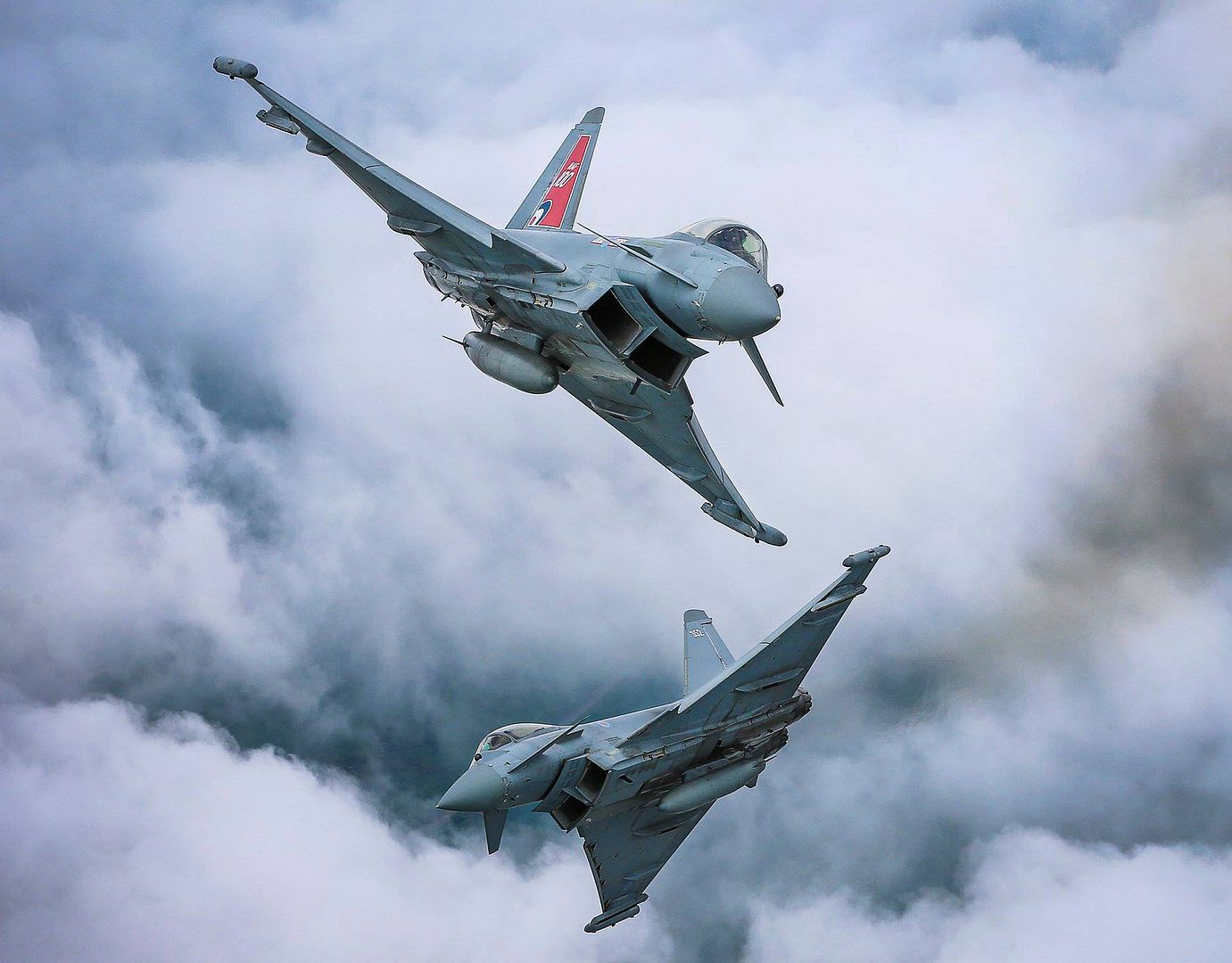
-
 Main Admin33rd Aircraft Maintenance Squadron weapons load crew members stand in front of an F-35A Lightning II Aug. 29, 2018, at Eglin Air Force Base, Fla. Weapons crews regularly load Guided Bomb Units (GBU) to support pilot training at the 33rd Fighter Wing. They load inert and live bombs, depending on the request, to give pilots real-world experience when flying in the F-35. Consistently executing these weapon loading maneuvers helps to ensure they can safely and quickly provide munitions as needed. (U.S. Air Force photo by Staff Sgt. Peter Thompson)
Main Admin33rd Aircraft Maintenance Squadron weapons load crew members stand in front of an F-35A Lightning II Aug. 29, 2018, at Eglin Air Force Base, Fla. Weapons crews regularly load Guided Bomb Units (GBU) to support pilot training at the 33rd Fighter Wing. They load inert and live bombs, depending on the request, to give pilots real-world experience when flying in the F-35. Consistently executing these weapon loading maneuvers helps to ensure they can safely and quickly provide munitions as needed. (U.S. Air Force photo by Staff Sgt. Peter Thompson)
Airmen from the 179th Airlift Wing Maintenance Group prepare the C-130H Hercules by completing routine operations August 30, 2018, at the 179th Airlift Wing, Mansfield, Ohio. Routine operations performed on the C-130H Hercules ensures that the aircraft are mission ready at all times. (U.S. Air National Guard photo by Airman Alexis Wade)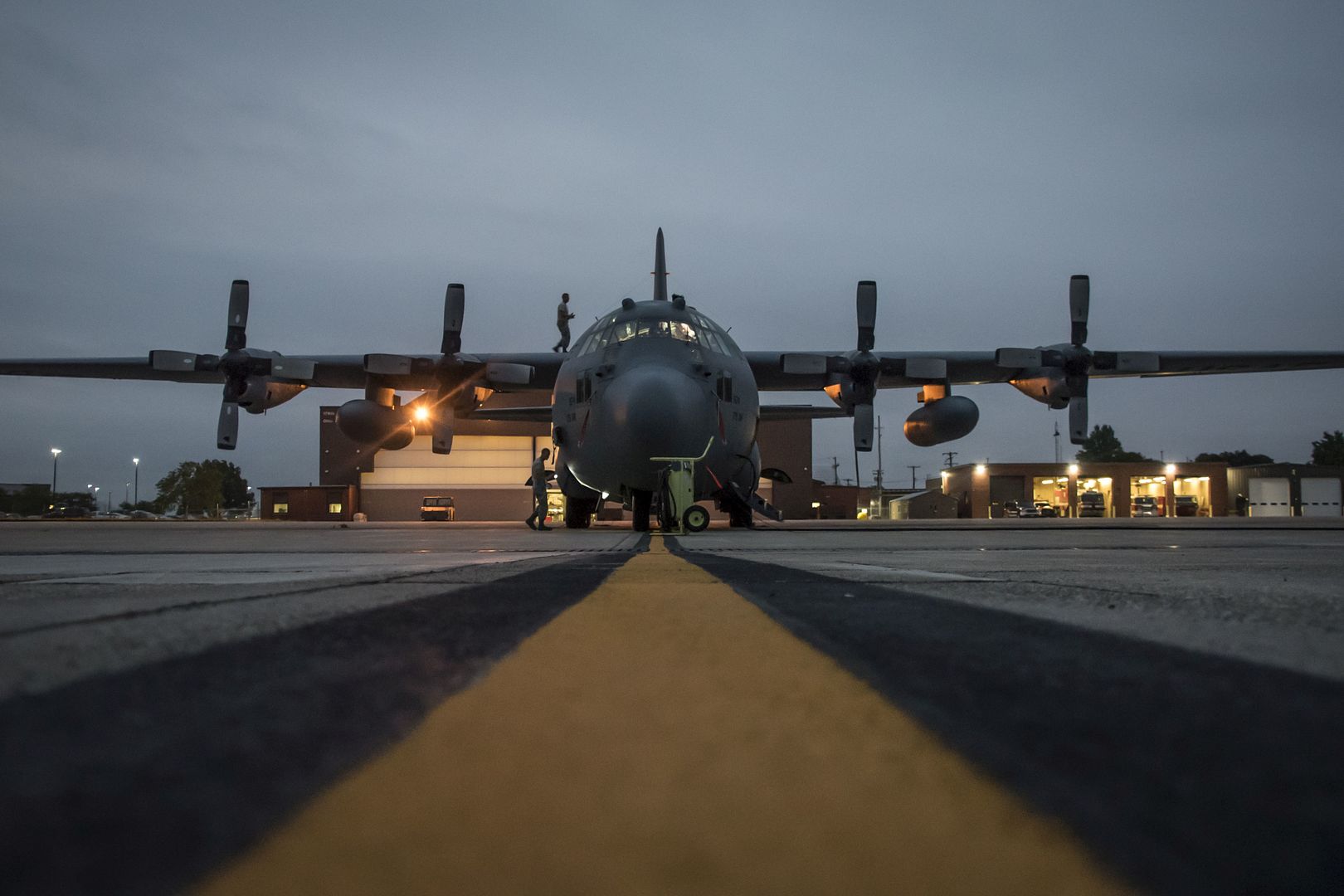
INDIAN OCEAN (Aug. 28, 2018) ? An F-35B Lightning II, attached the ?Avengers? of Marine Fighter Attack Squadron (VMFA) 211, prepares to land on the flight deck of Wasp-class amphibious assault ship USS Essex (LHD 2) during a regularly scheduled deployment of the Essex Amphibious Ready Group (ARG) and Marine Expeditionary Unit (MEU). The Essex ARG/13th MEU is a capable and lethal Navy-Marine Corps team deployed to the 7th fleet area of operations to support regional stability, reassure partners and allies and maintain a presence postured to respond to any crisis ranging from humanitarian assistance to contingency operations. The Essex ARG and 13th MEU is the first continental U.S. Navy/Marine Corps team to deploy with the new and increased multi-mission capabilities of the F-35B Lightning II, ultimately increasing the lethality and survivability of the amphibious force. (U.S. Navy photo by Mass Communication Specialist 2nd Class Chandler Harrell)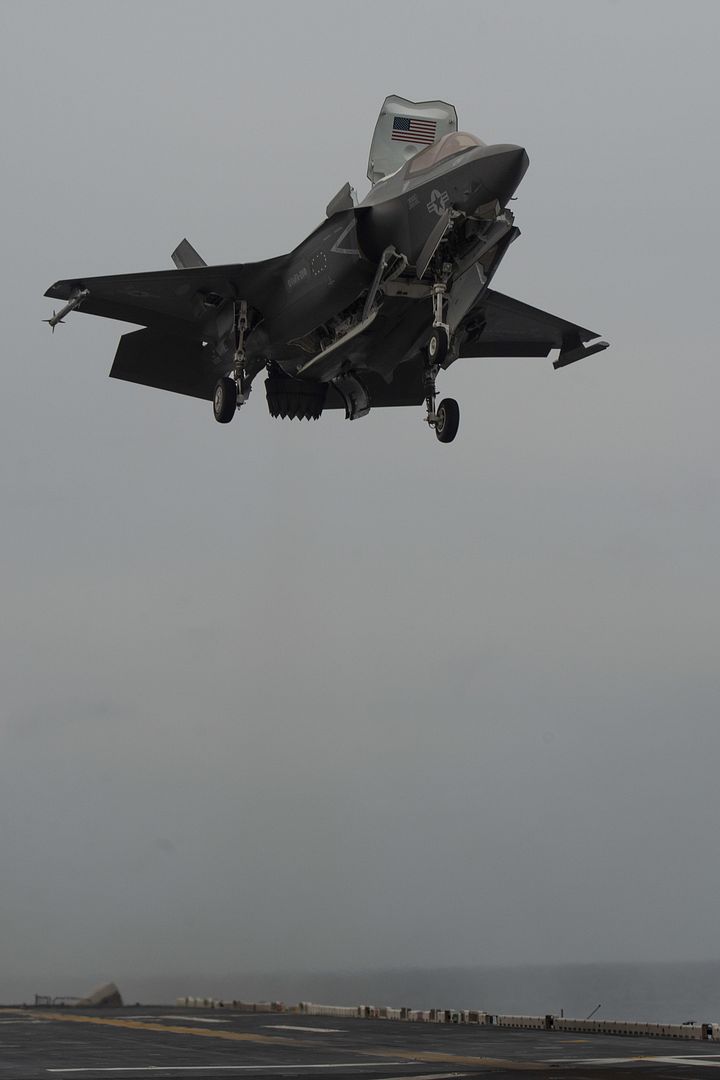
EDWARDS AIR FORCE BASE, Calif. --
In Greek mythology, a phoenix is an extraordinary bird that is born again, rising from the ashes of its predecessor.
A video aptly titled, ?The Phoenix Rises,? played at a ceremony held Aug. 27 in Hangar 1635 to celebrate the rebirth of one of the original F-22 Raptors ever built.
Base leadership joined the 411th Flight Test Squadron and F-22 Combined Test Force, along with Lockheed Martin and Boeing representatives, to welcome back to life Raptor #91-4006, which has been on the ground for almost six years.
The fifth-generation fighter was one of the first F-22 Raptors to have avionics installed for testing and has been at the 411th FLTS since it arrived in May 2001.
However, in November 2012, Raptor 4006 needed costly upgrades and the decision was made to put it into storage, possibly never to fly again due to the budget sequestration at the time, according to Lt. Col. Lee Bryant, 411th FLTS commander and F-22 CTF director.
?This was a gainfully employed airplane when she was working,? said Steve Rainey, Lockheed Martin F-22 chief test pilot and member of the F-22 CTF. Rainey also emceed the ceremony.
After eventually getting approval and funding from the Air Force to overhaul the Raptor, a ?purple? team of Air Force, Lockheed and Boeing personnel worked for 27 months here at Edwards to restore the jet back to flying status. This included 25,000 man-hours and almost 11,000 individual fixes/parts. The completed refurbishment extends the Raptor?s life from 2,000 flight hours to 4,000 FH and gives it newer avionics systems for testing.
Rainey was the first military F-22 Raptor pilot while in the Air Force and has worked on the Raptor program almost since its beginning. It was only fitting that the rise of the new phoenix was completed July 17 when Rainey took the newly refurbished Raptor to the sky for its ?second first flight.?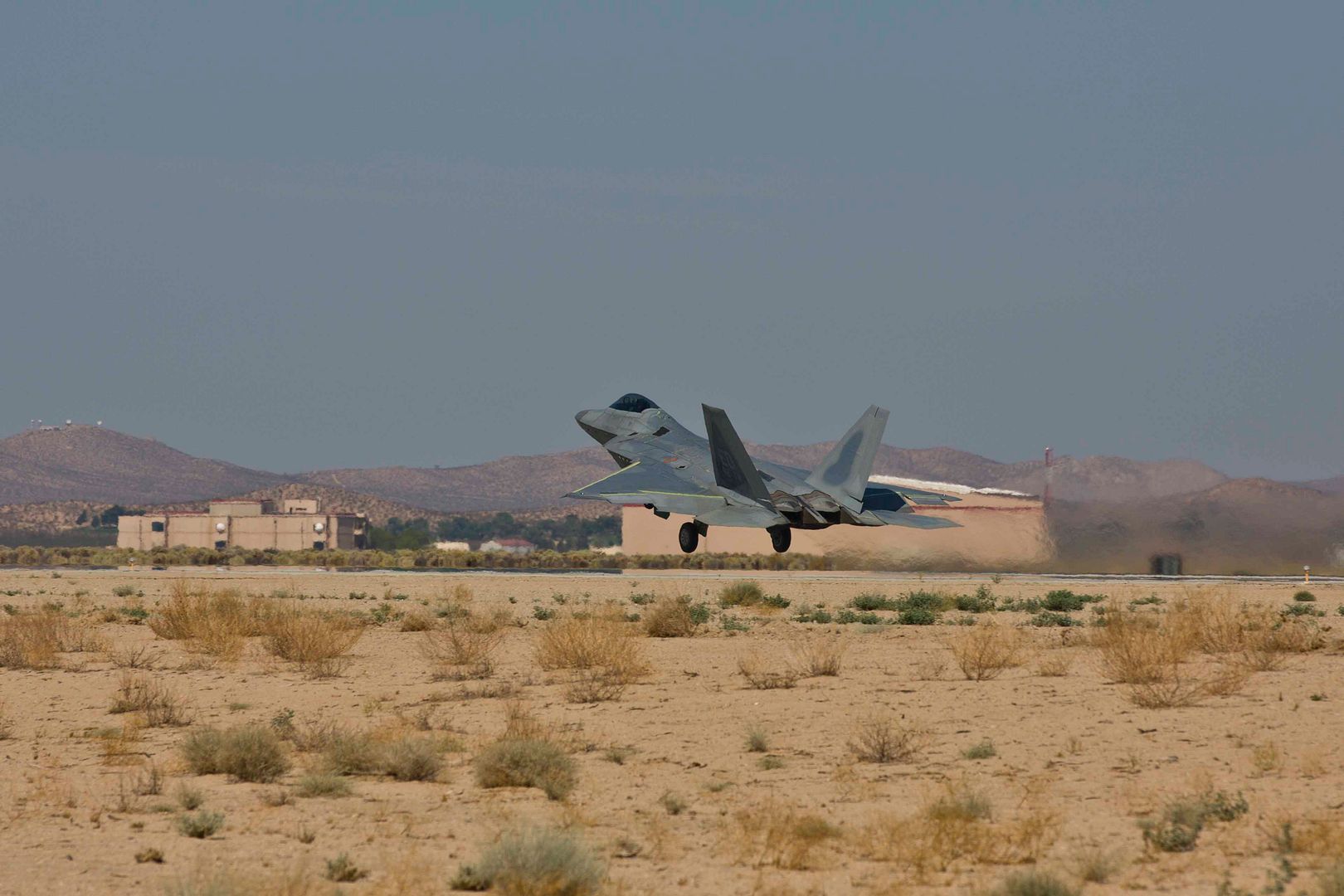
Raptor 4006 is currently the oldest flying F-22. It will now be used as a flight sciences aircraft, which will be an integral part of F-22 fleet modernization.
"It increases our test fleet from three to four giving us another flight sciences jet," said Bryant. "This will help us tackle the expanding F-22 modernization program."
Brig. Gen. E. John Teichert, 412th Test Wing commander, said he has flown 4006 numerous times when was assigned to the 411th FLTS as a project pilot and later as a squadron commander.
?Our warfighter needs her back flying again,? said Teichert.
Today, the Air Force has 183 Raptors in its inventory and boasts that the F-22 cannot be matched by any known or projected fighter aircraft.
The F-22 Raptor?s combination of stealth, supercruise capability, maneuverability and integrated avionics, coupled with improved supportability, represents an exponential leap in warfighting capabilities from previous generations of fighters. The Raptor performs both air-to-air and air-to-ground missions allowing full realization of operational concepts vital to the 21st century Air Force.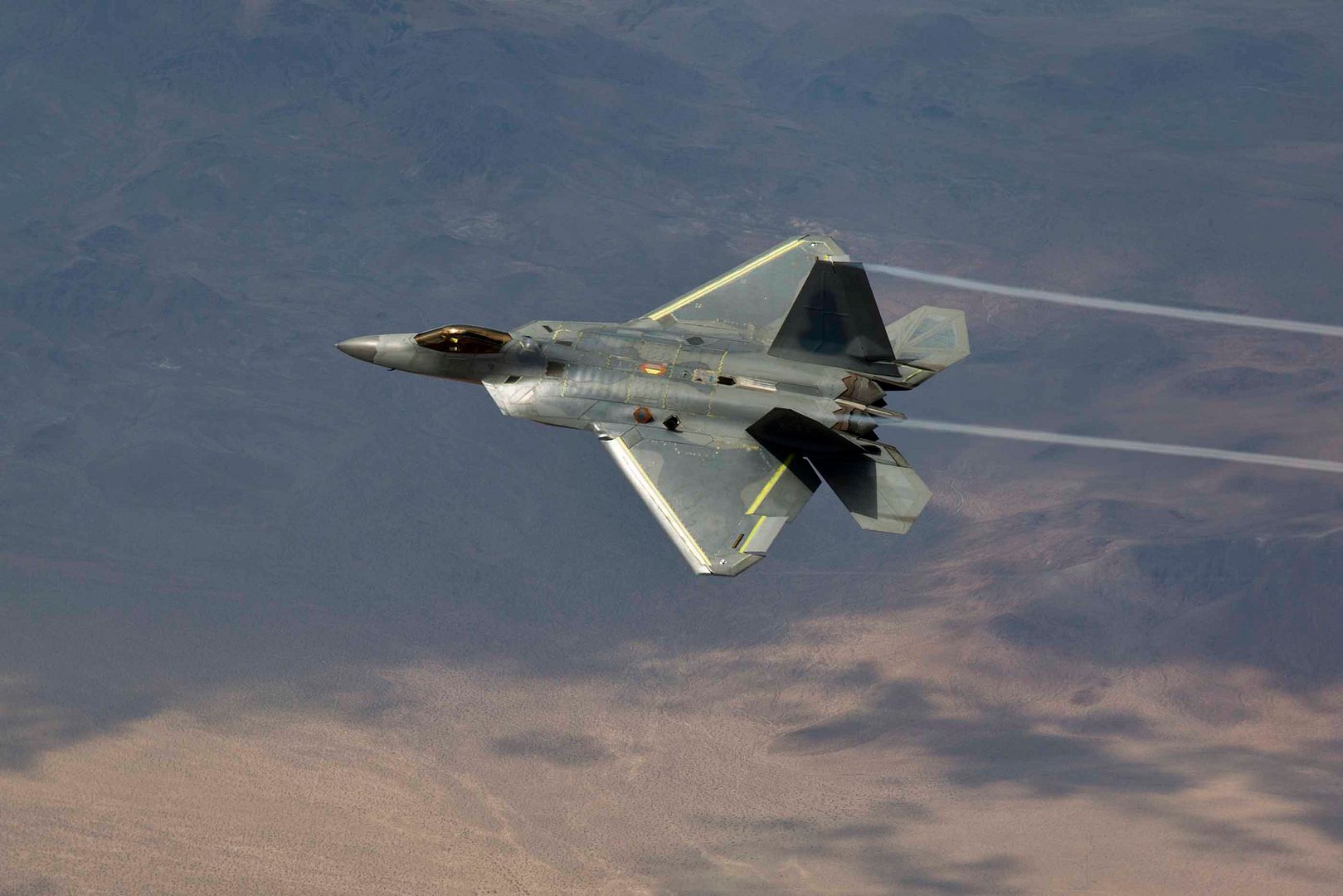
JOINT BASE PEARL HARBOR-HICKAM, Hawaii --
Two U.S. Air Force B-52H Stratofortress bombers, departed from Anderson Air Force Base, Guam and participated in routine training missions Aug. 27 and 30, 2018.
The bombers, assigned to the 96th Expeditionary Bomb Squadron (EBS), conducted training in the vicinity of the South China Sea before returning to Guam.
U.S. Indo-Pacific Command?s Continuous Bomber Presence (CBP) operations have been ongoing since March 2004; these recent missions are consistent with international law and United States? long-standing and well-known freedom of navigation policies.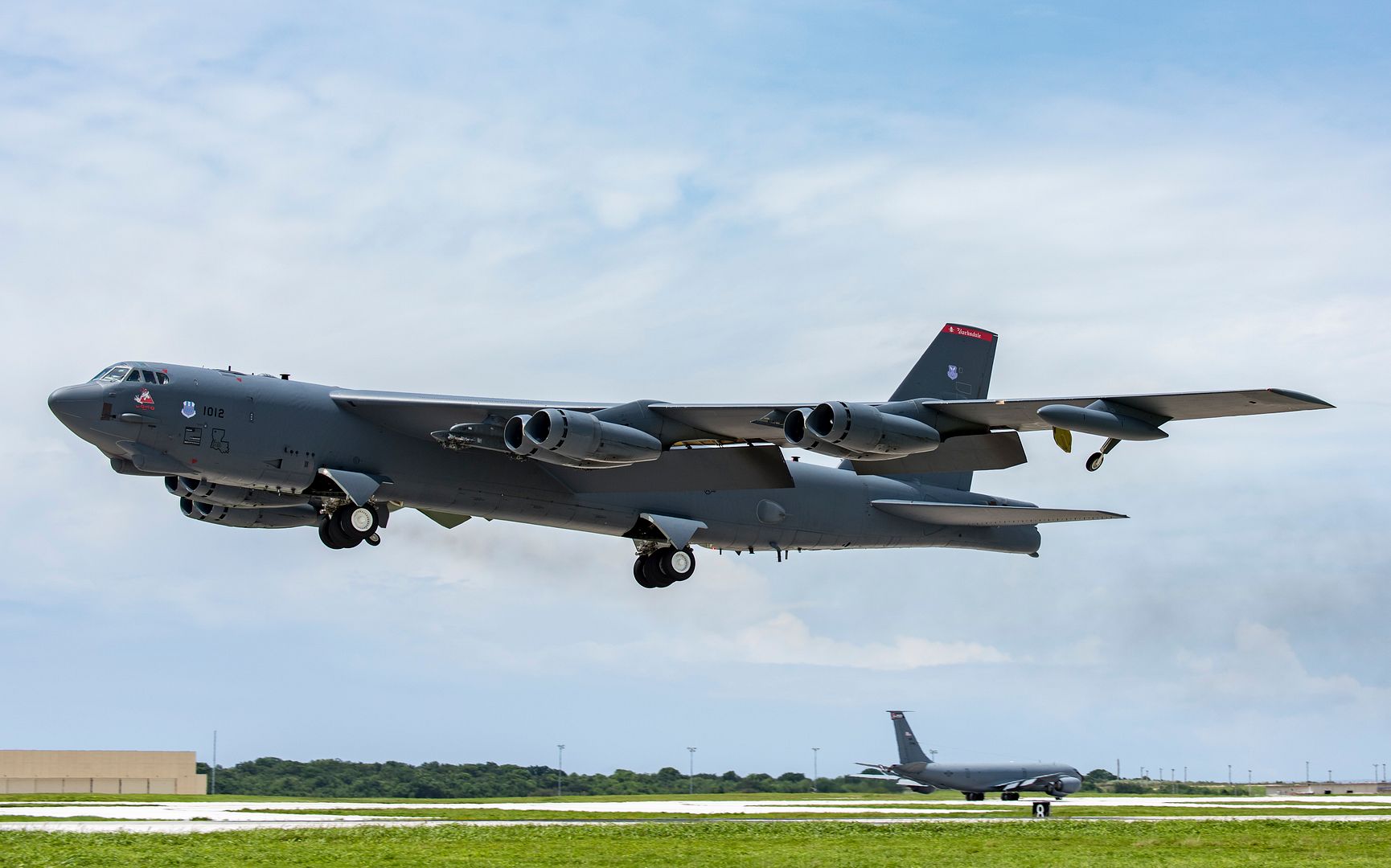
CBP operations demonstrate the United States' commitment to a free and open Indo-Pacific, help maintain the readiness of U.S. forces and improve coalition and joint service interoperability.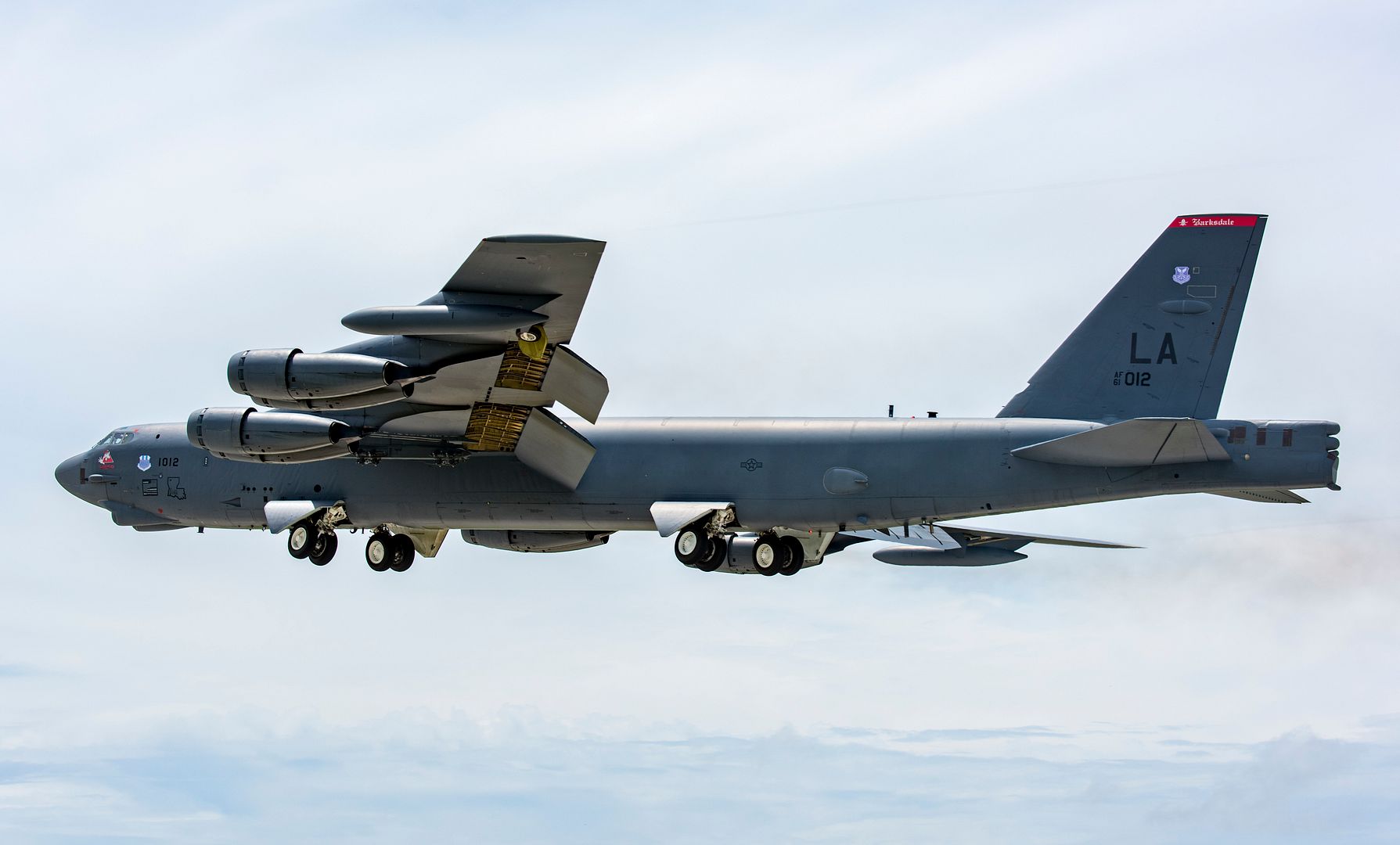
F-22 Raptor pilots graduate Tyndall?s B-Course
A 95th Fighter Squadron F-22 Raptor from Tyndall Air Force Base, Florida, sits on the flightline during exercise Stealth Guardian at Moody Air Force Base, Georgia, Aug. 10, 2017. In order to become a qualified F-22 pilot, Tyndall student pilots from the 43rd Fighter Squadron have to complete a vigorous course of instruction that included academics events, examinations, sorties and simulator missions. (U.S. Air Force photo by Airman 1st Class Isaiah J. Soliz)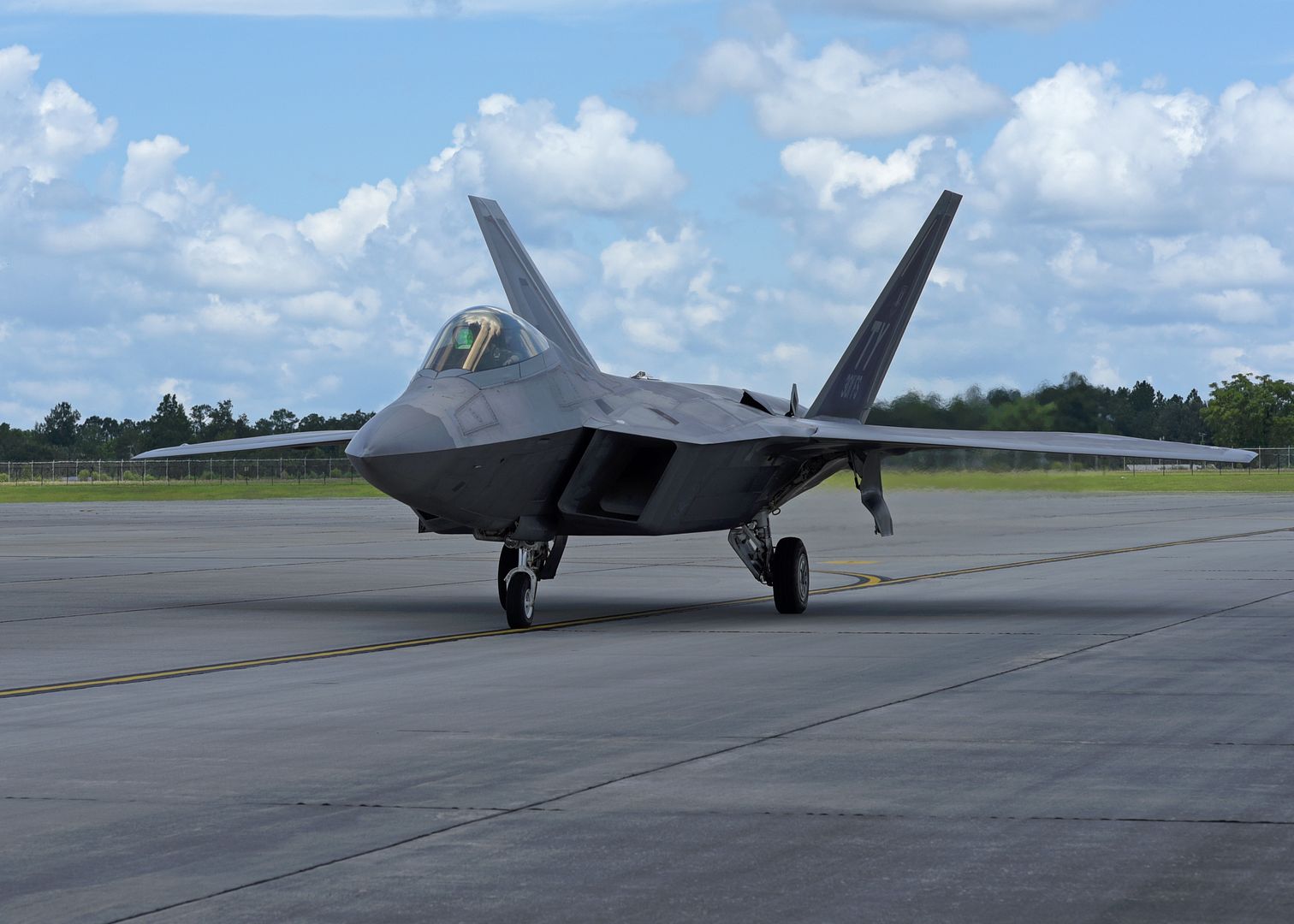
The first A380 for All Nippon Airways (ANA) has rolled out of the final assembly line (FAL) in Toulouse. The aircraft has now been moved to an outside station where various ground tests will be undertaken in preparation for first flight in the coming weeks. The aircraft will then be transferred to the Airbus facilities in Hamburg for cabin installation and painting.
ANA HOLDINGS INC. placed a firm order of three A380s in 2016, becoming the first customer for the superjumbo in Japan. The first delivery is scheduled early in 2019, and the A380 will initially be operated on the popular Tokyo-Honolulu route.
Offering more personal space than any other aircraft, the A380 is the most efficient solution to meeting growth on the world?s most heavily travelled routes, carrying more passengers with fewer flights at lower cost and emissions.
To date, Airbus has delivered 229 A380s, with the aircraft now in services with 14 airlines worldwide.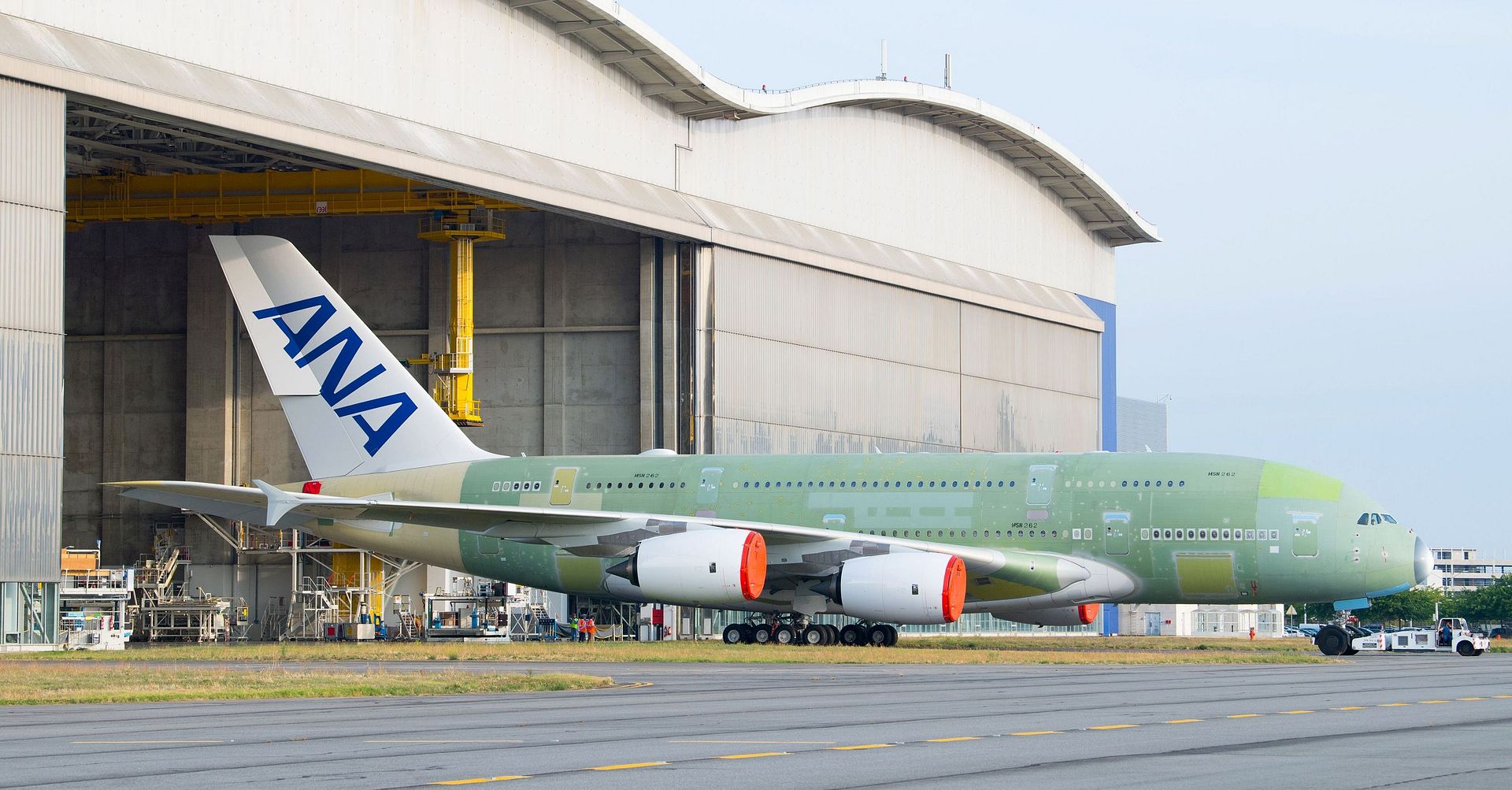
Amsterdam, August 30, 2018 ? Embraer Services & Support and LOT Polish Airlines, the national carrier of Poland and leading airline in Central Europe, have signed an extension of the pool agreement to support LOT?s fleet of 34 Embraer E-Jets.
In a multi-year deal, Embraer?s popular component support solution includes exclusive on site stock for LOT as well as extended scope of engine line-replaceable units (LRUs) for E190/E195s. The program will support LOT?s current fleet of 18 Embraer E170/E175s and up to 16 Embraer E190/E195s ? it includes additional six Embraer E195s that LOT leased in 2018 from Nordic Aviation Capital (NAC A/S) already in operation and four new Embraer E190 that the airline will be operating from January 2019.
?LOT is the only airline to operate all four variants of E1 E-Jets in their fleet and we are humbled that they have chosen to place their trust in us. It?s a strong endorsement for our customer service and it proves that we met their expectations offering the best solutions in services and support with a competitive value. Our mission is to keep the customer happy every day; and to also ensure the satisfaction of the end customer, which makes our portfolio the most competitive and exemplary in the market?, said Johann Bordais, President & CEO, Embraer Services & Support.
?We are proud to renew our long partnership with Embraer. The support of the OEM is a natural fit and the best option to our fleet as it offers cost effective and practical solutions, guaranteeing efficiency and competitive results, allowing LOT to focus on aircraft operations. Our airline recognizes very good performance of Embraer?s services and support (including components lead times assured and quality aspects), said LOT?s COO Mr. Maciej Wilk.
The component solution program is part of a suite of services that Embraer offers or has under development to support the growing fleet of Embraer aircraft worldwide through TechCare, the new Embraer platform that assembles the entire portfolio of products and solutions to deliver the best experience of services and support.
-
 Main AdminAn 89th Airlift Wing C-32 aircraft arrives at Joint Base Andrews, Md., Aug. 30, 2018, carrying the remains of Sen. John McCain. The former senator?s remains are en route to lie in state in the U.S. Capitol Rotunda. The 89th Airlift Wing provides global Special Air Mission airlift, logistics, aerial port and communications for the president, vice president, cabinet members, combatant commanders and other senior military and elected leaders as tasked by the White House, Air Force chief of staff and Air Mobility Command. (U.S. Air Force photo by Staff Sgt. Kenny Holston)
Main AdminAn 89th Airlift Wing C-32 aircraft arrives at Joint Base Andrews, Md., Aug. 30, 2018, carrying the remains of Sen. John McCain. The former senator?s remains are en route to lie in state in the U.S. Capitol Rotunda. The 89th Airlift Wing provides global Special Air Mission airlift, logistics, aerial port and communications for the president, vice president, cabinet members, combatant commanders and other senior military and elected leaders as tasked by the White House, Air Force chief of staff and Air Mobility Command. (U.S. Air Force photo by Staff Sgt. Kenny Holston)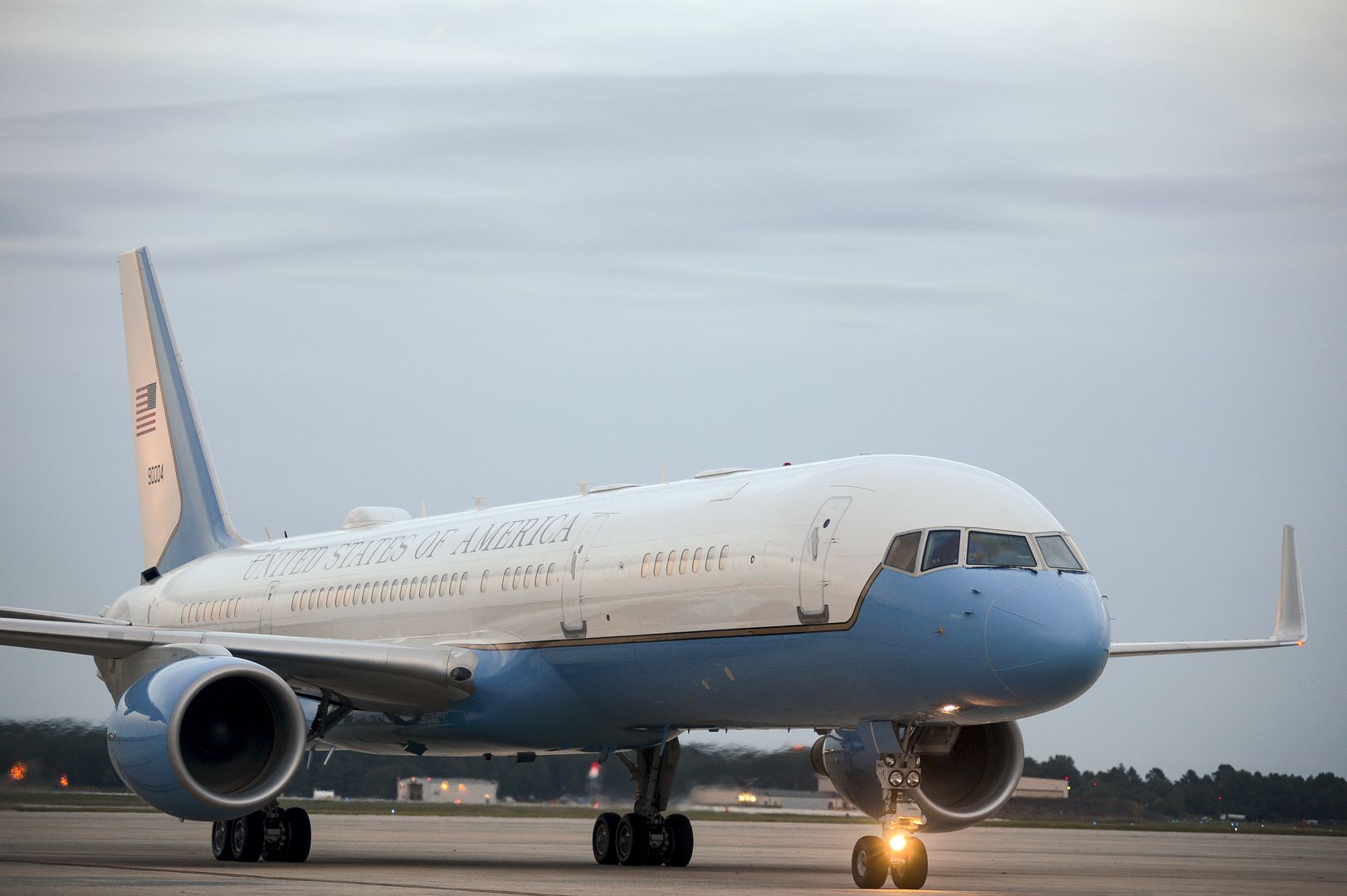
An F-15C Eagle assigned to the 493rd Fighter Squadron lands at Royal Air Force Lakenheath, England, Aug. 23, 2018. Fourteen F-15C/Ds and more than 250 personnel deployed to Keflavik Air Base, Iceland, in support of NATO?s Icelandic Air Surveillance mission and training. (U.S. Air Force photo/Staff Sgt. Alex Fox Echols III)
ST. LOUIS, Aug. 30, 2018 ? Boeing [NYSE: BA] will build the U.S. Navy?s first operational carrier-based unmanned aircraft, the MQ-25 aerial refueler, through an $805 million contract awarded today.
Boeing was awarded the engineering and manufacturing development contract to provide four aircraft. Boeing plans to perform the MQ-25 work in St. Louis.
?As a company, we made an investment in both our team and in an unmanned aircraft system that meets the U.S. Navy?s refueling requirements,? said Leanne Caret, president and CEO, Boeing Defense, Space & Security. ?The fact that we?re already preparing for first flight is thanks to an outstanding team who understands the Navy and their need to have this important asset on carrier decks around the world.?
MQ-25 is designed to provide the U.S. Navy with a much-needed refueling capability. According to the U.S. Navy, the MQ-25 Stingray will allow for better use of combat strike fighters by extending the range of deployed Boeing F/A-18 Super Hornet, Boeing EA-18G Growler, and Lockheed Martin F-35C aircraft. MQ-25 will also seamlessly integrate with a carrier?s catapult and launch and recovery systems.
-
 Main AdminRoyal Navy Cmdr. Nathan Gray and U.S. Marine Corps Maj. Michael Lippert, both F-35 Pax River ITF test pilots, conduct ski jumps and field carrier landing practices with F-35Bs on Aug. 28, 2018, at NAS Patuxent River as part of the workups for the First of Class Flight Trials aboard the HMS Queen Elizabeth.
Main AdminRoyal Navy Cmdr. Nathan Gray and U.S. Marine Corps Maj. Michael Lippert, both F-35 Pax River ITF test pilots, conduct ski jumps and field carrier landing practices with F-35Bs on Aug. 28, 2018, at NAS Patuxent River as part of the workups for the First of Class Flight Trials aboard the HMS Queen Elizabeth.
Around 200 supporting staff from the ITF, including pilots, engineers, maintainers and data analysts, will take two F-35Bs test aircraft aboard HMS Queen Elizabeth this fall to evaluate the fifth-generation aircraft performance and integration with Royal Navy?s newest aircraft carrier. This fixed wing test period brings the U.K. one step closer to carrier strike capabilities.
Photo's by Dane Wiedmann.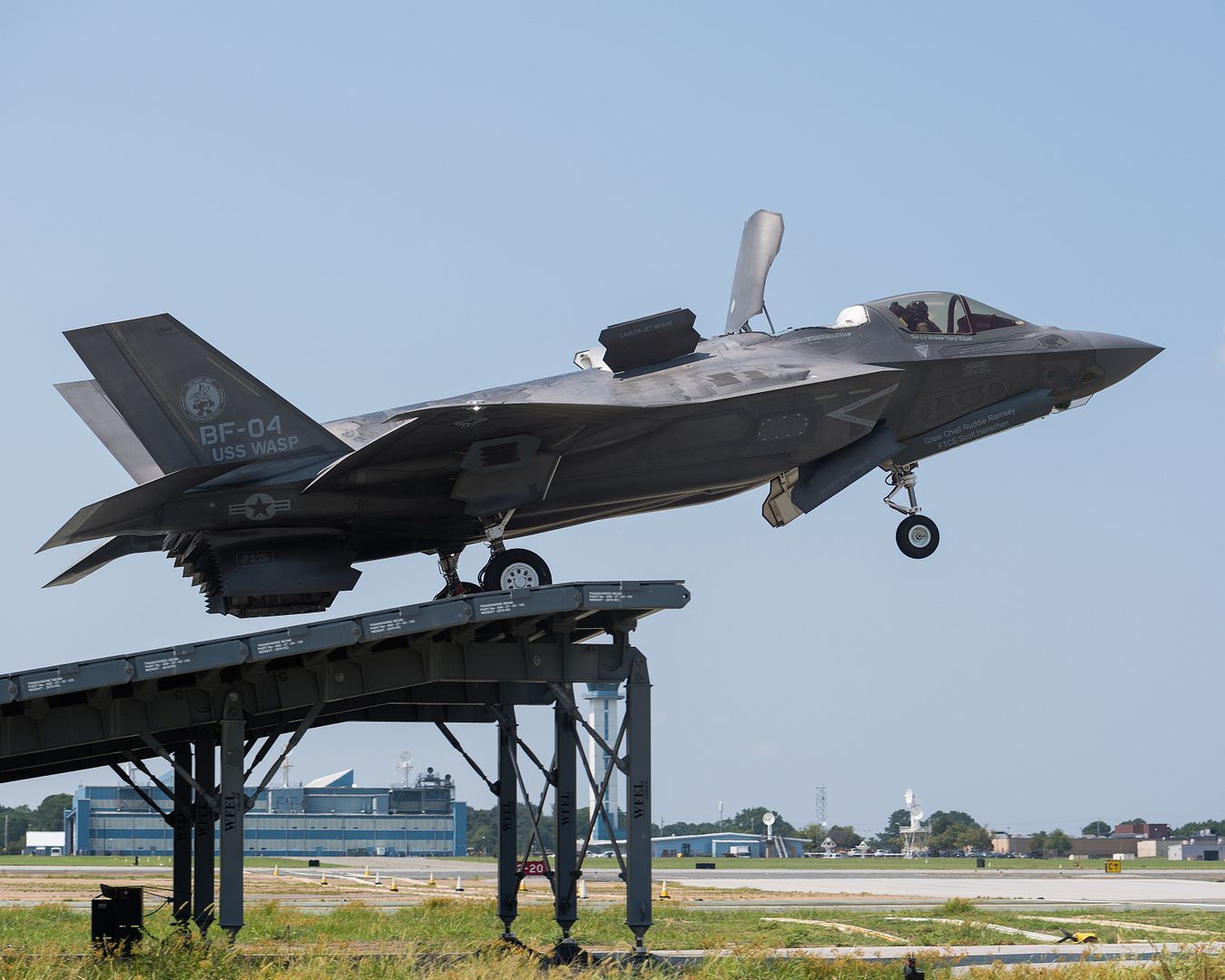
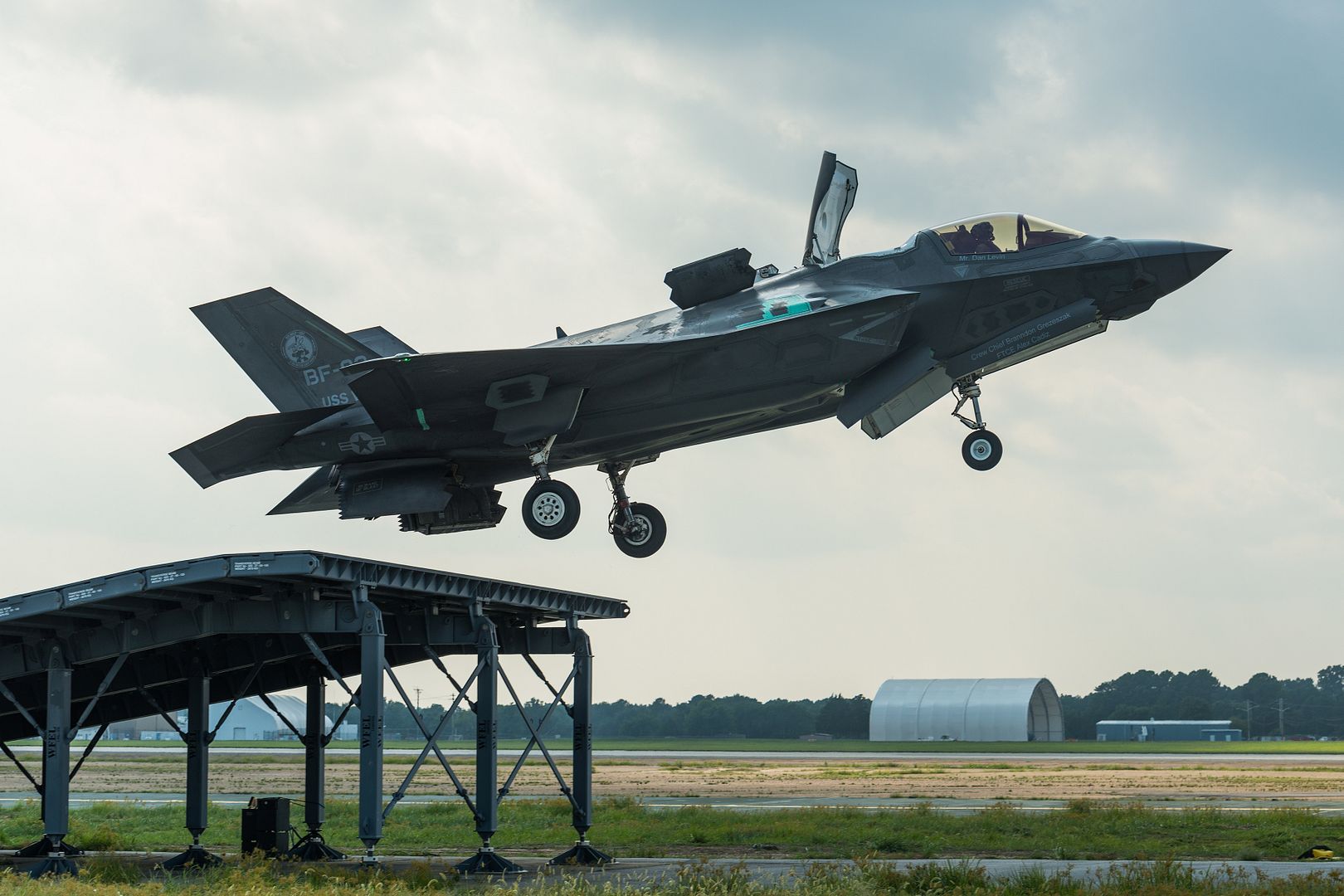
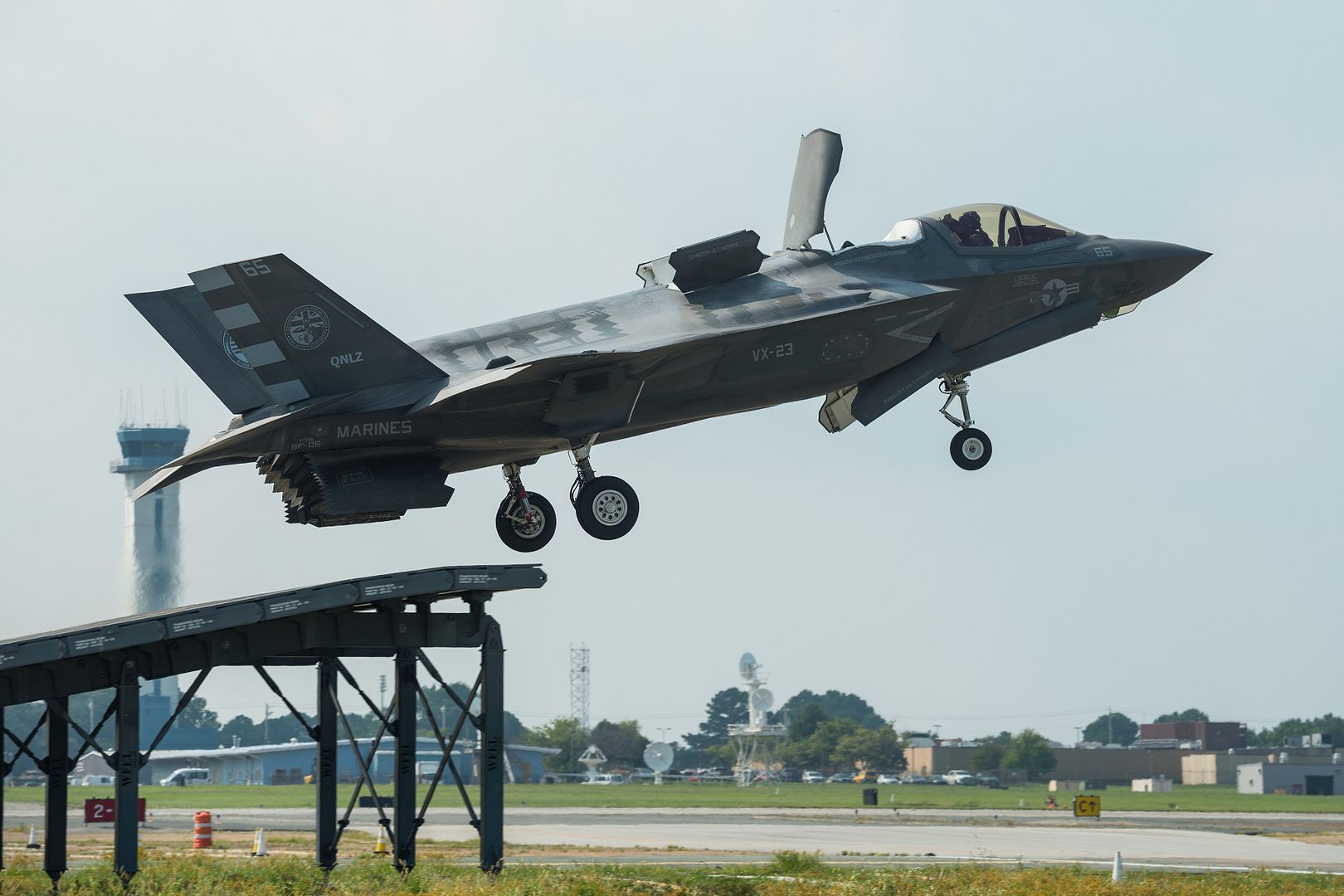
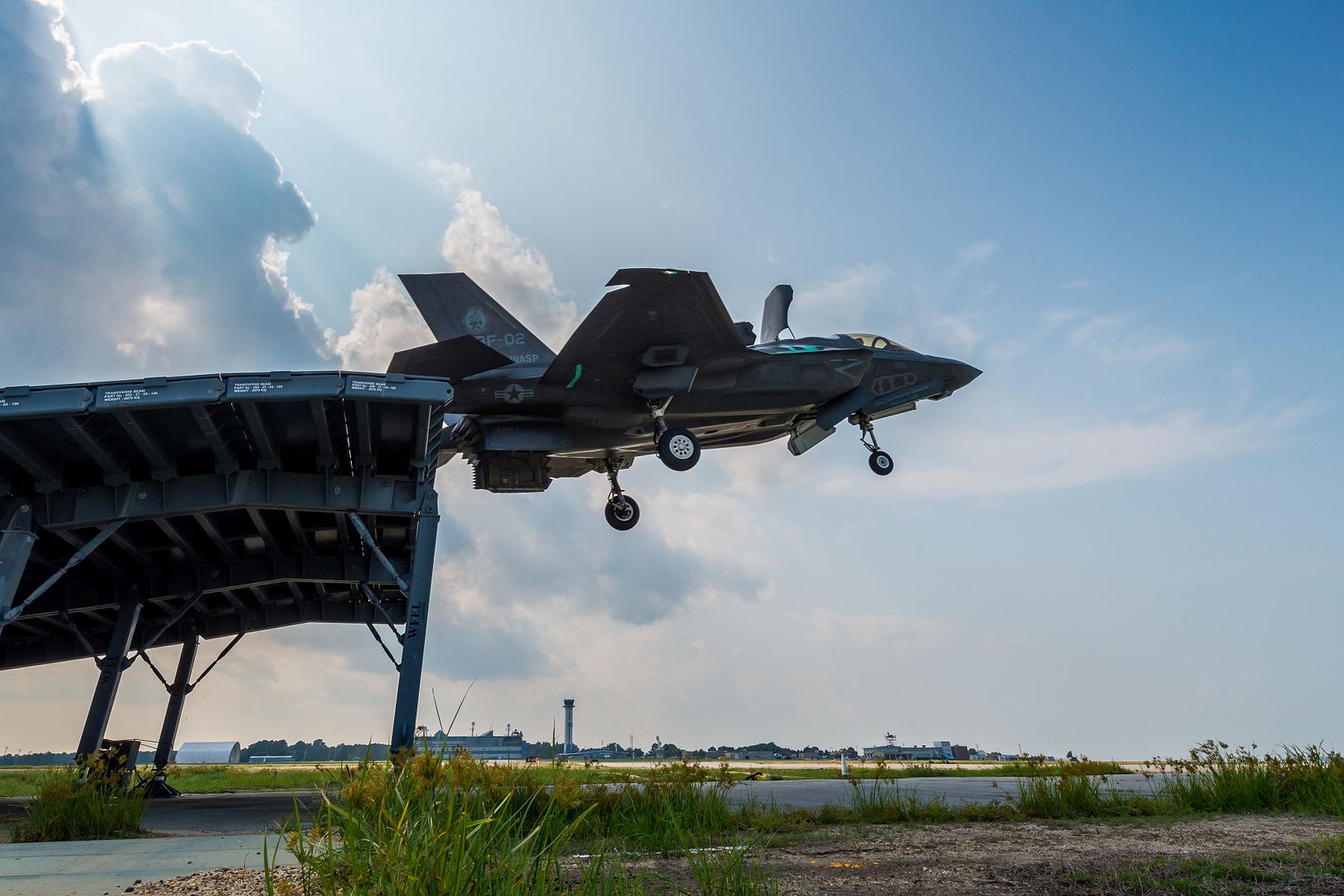
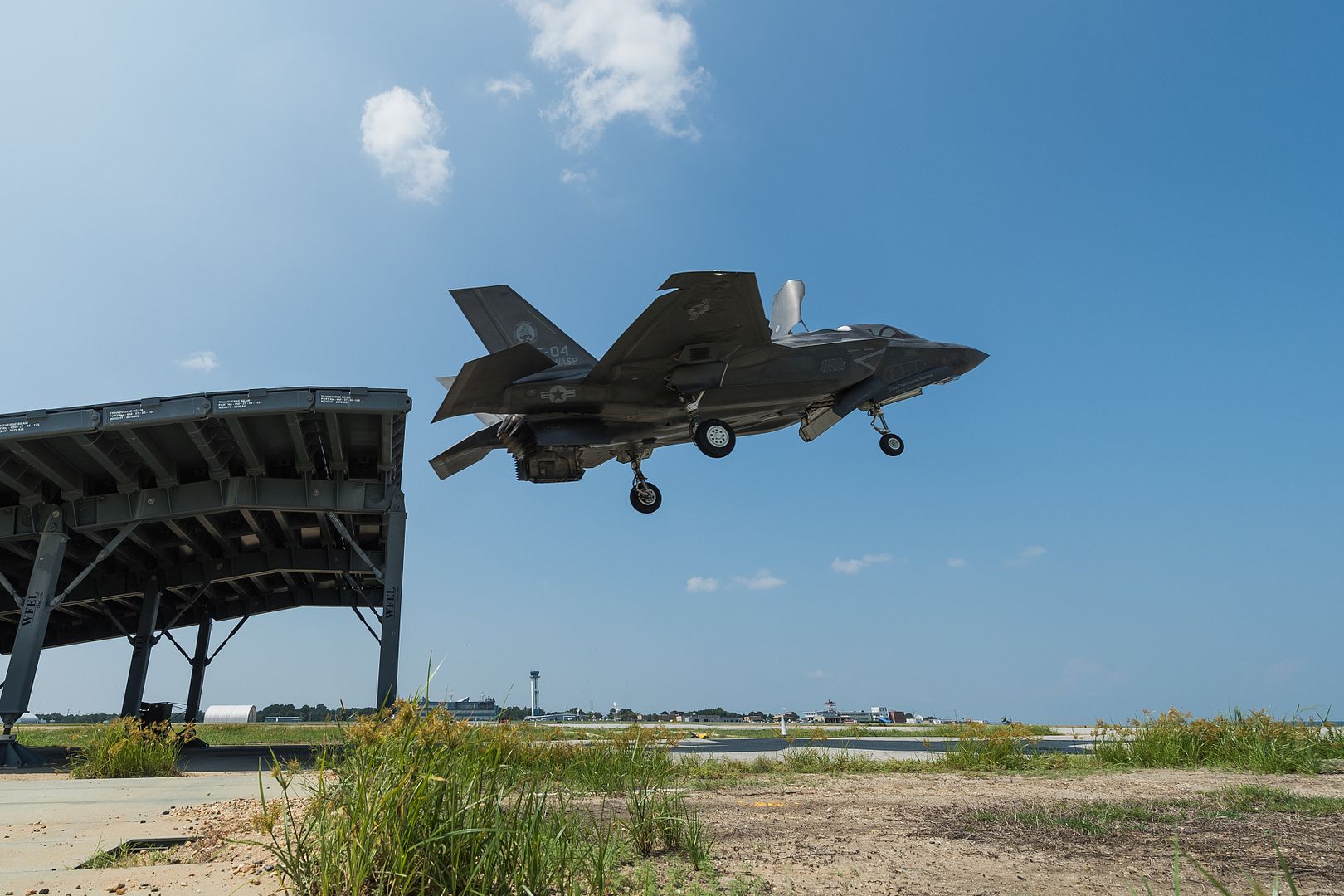
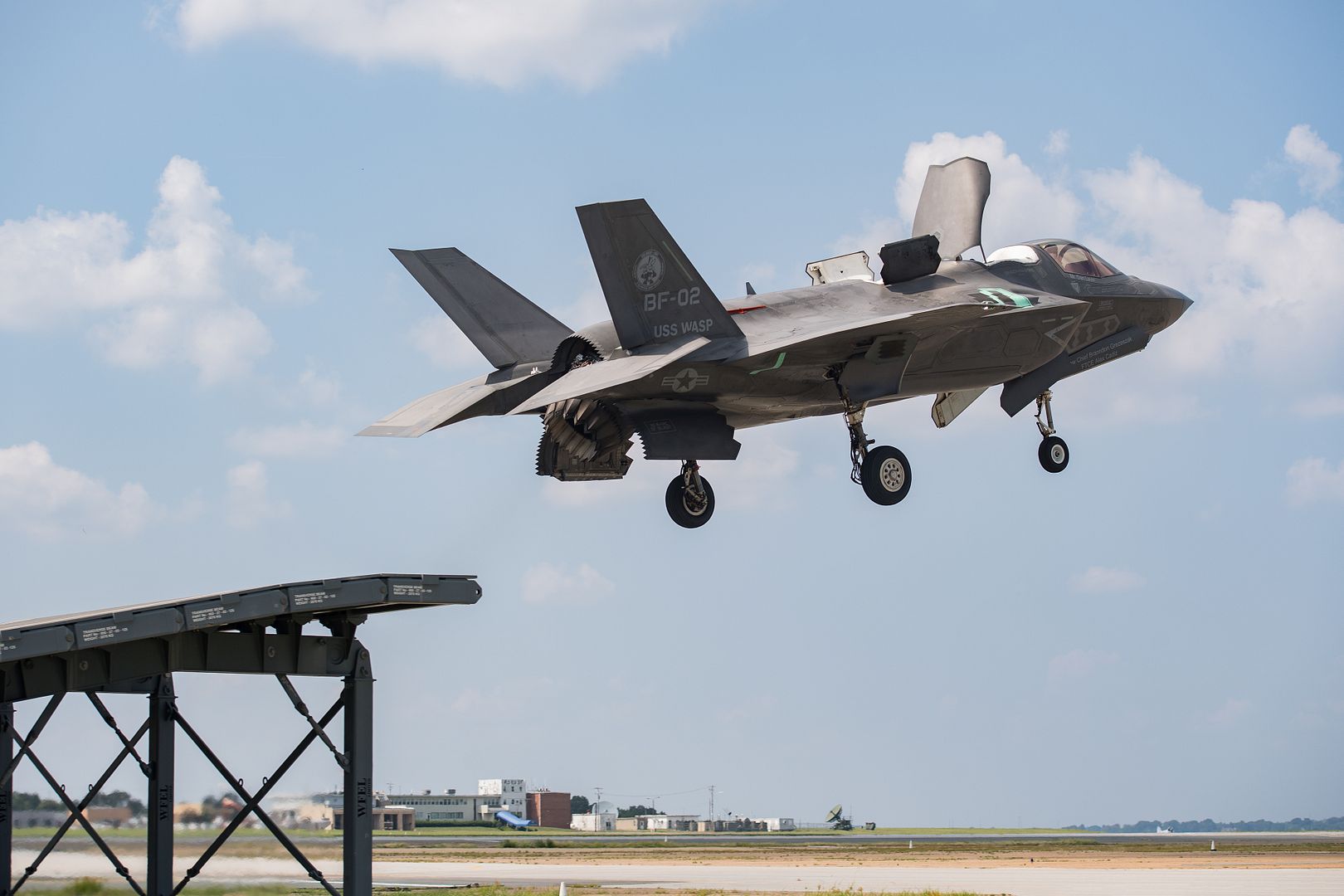

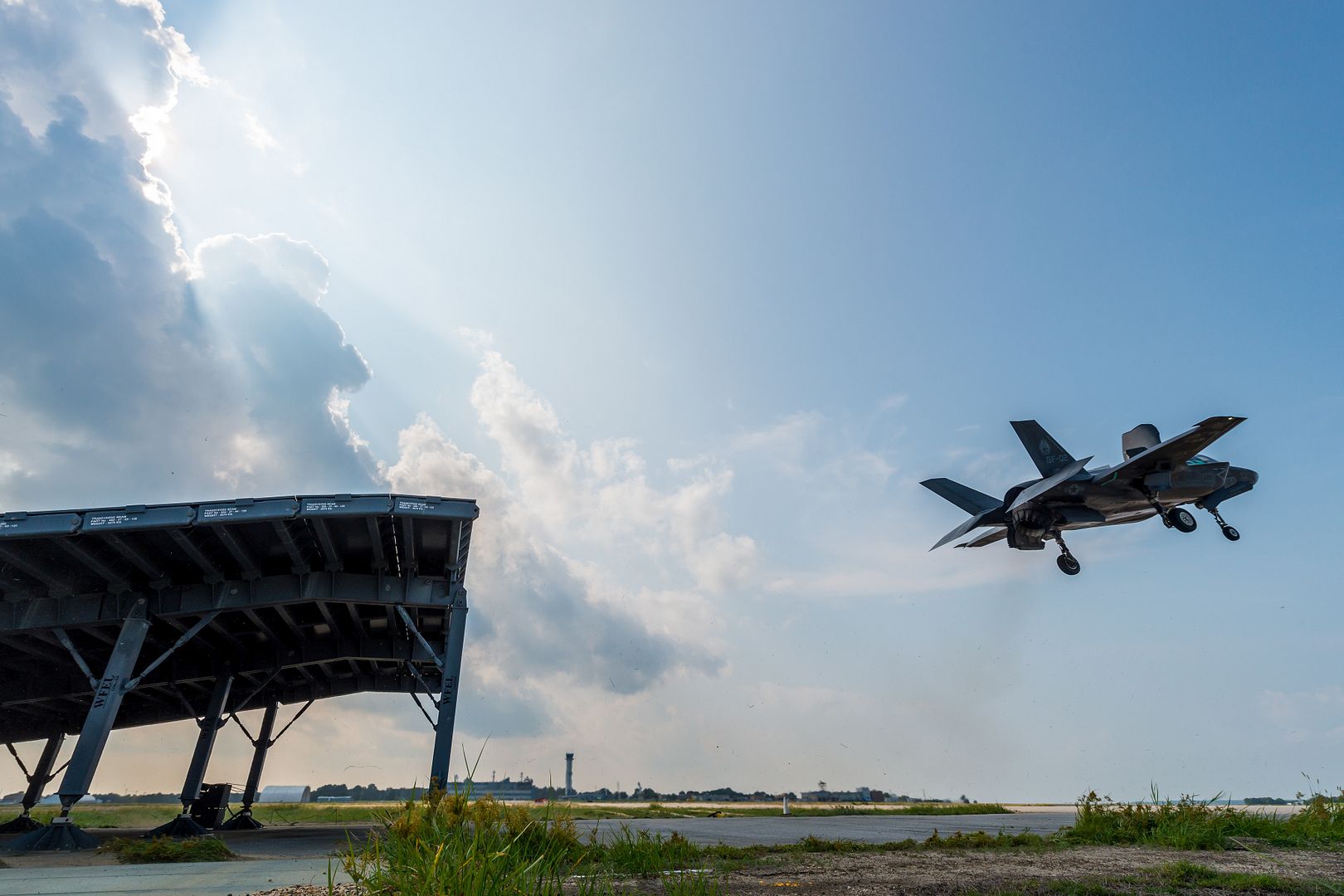
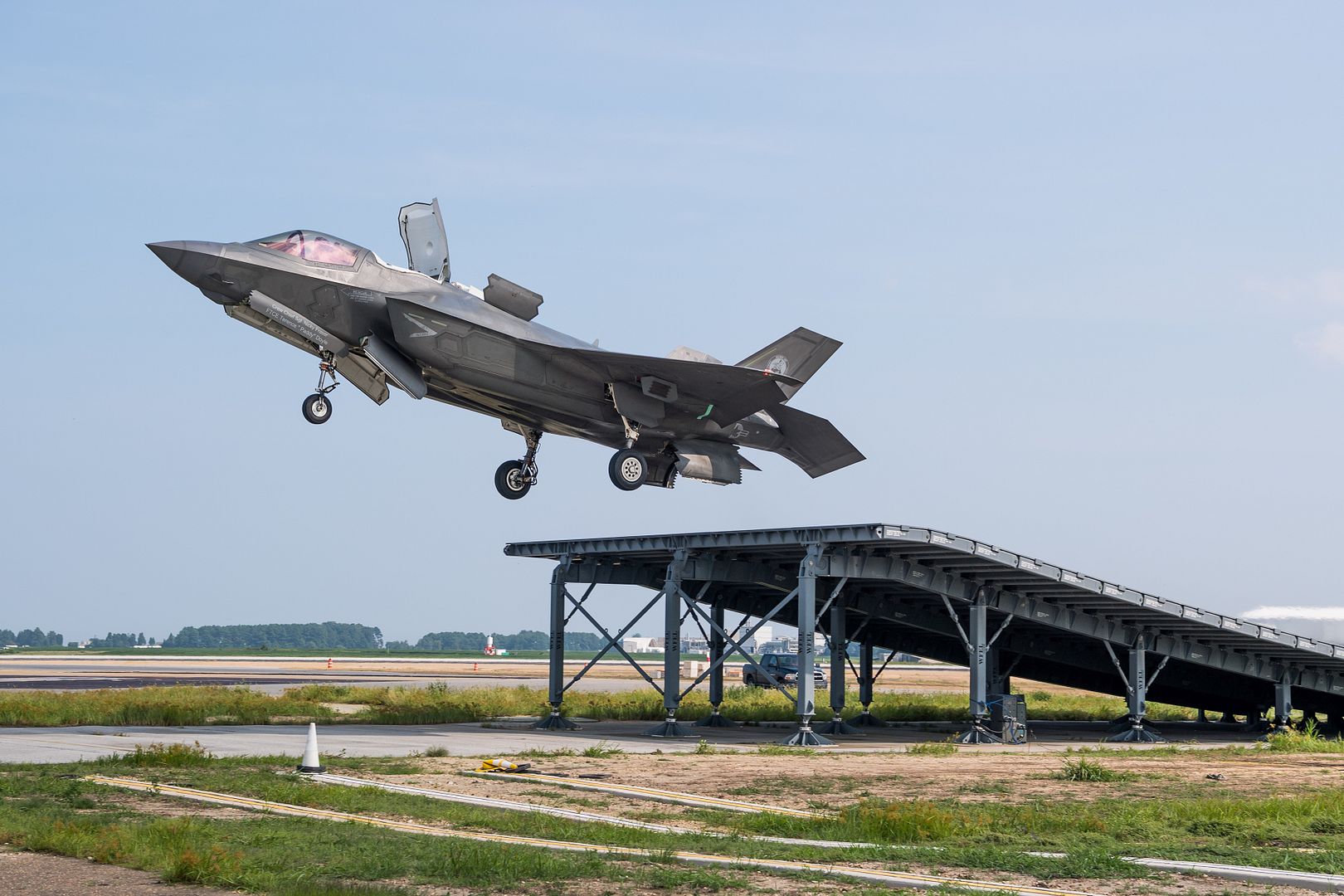
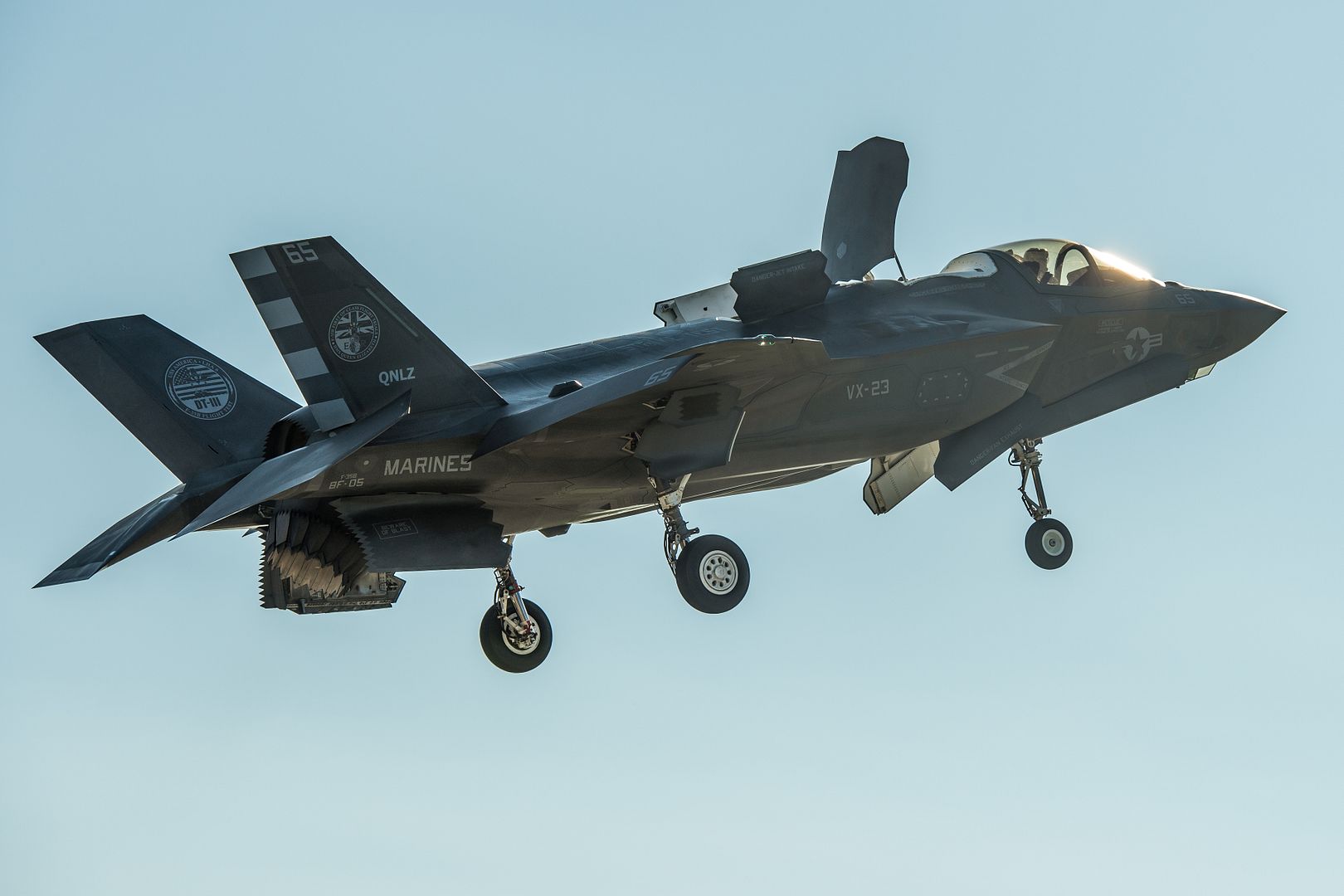
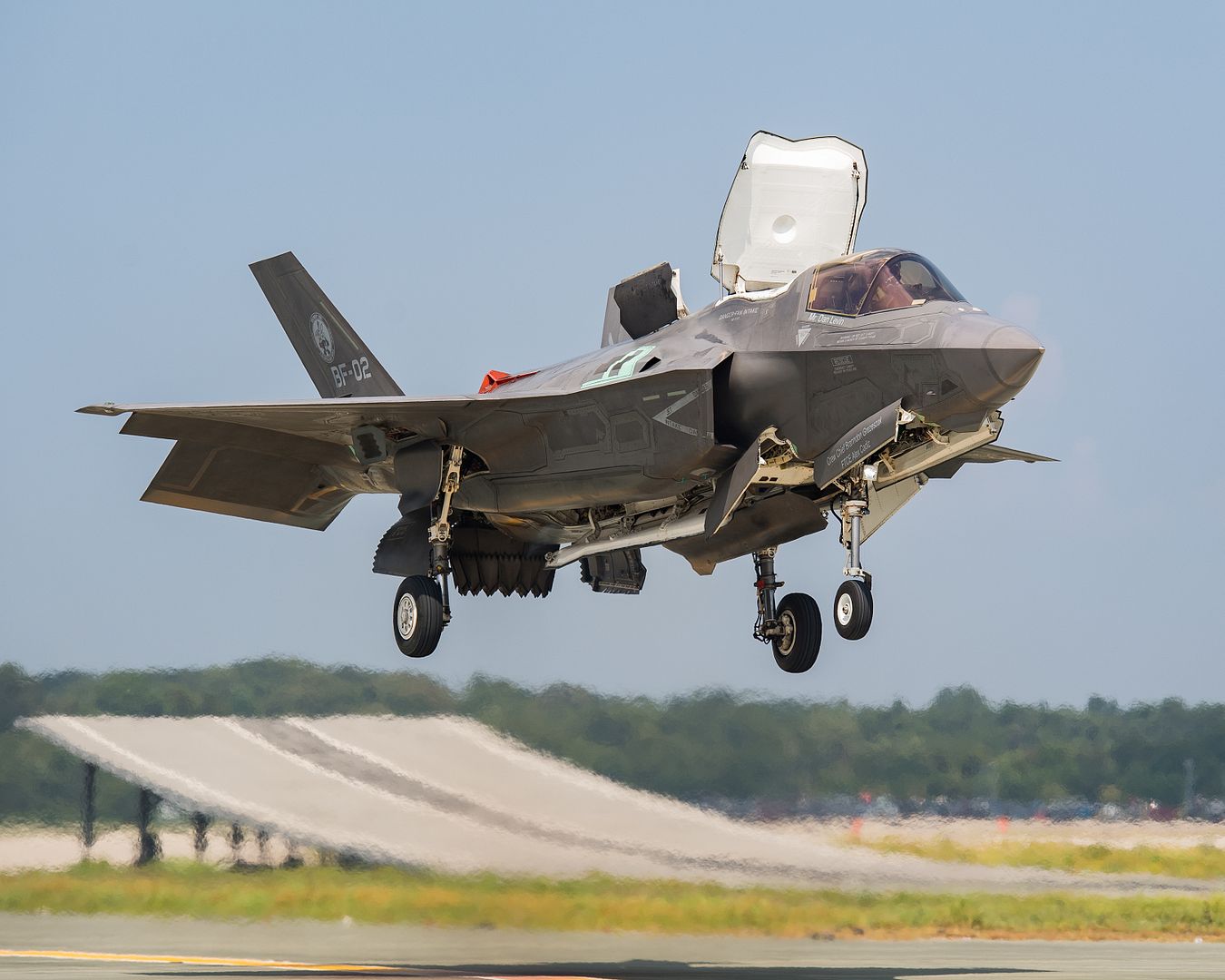
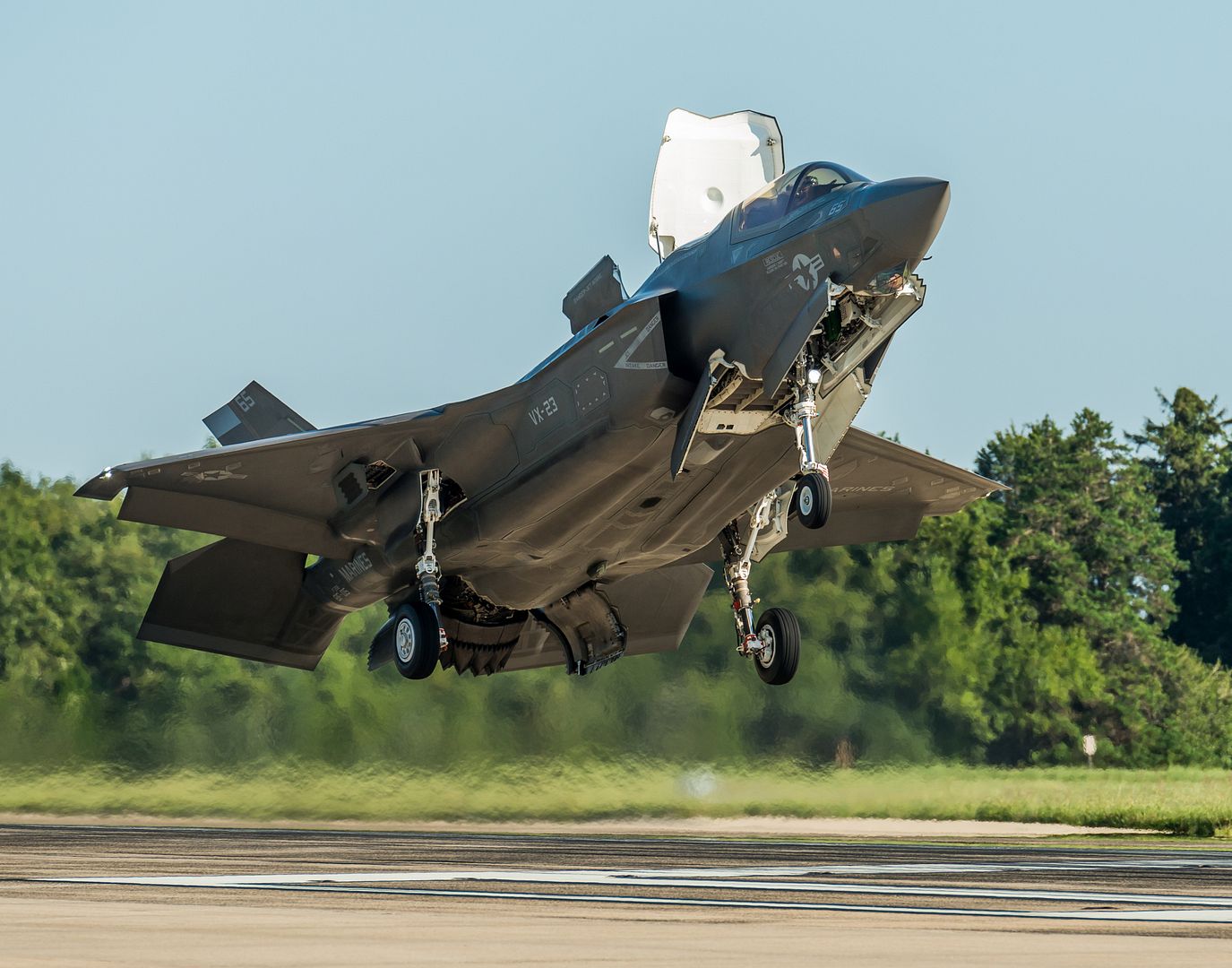
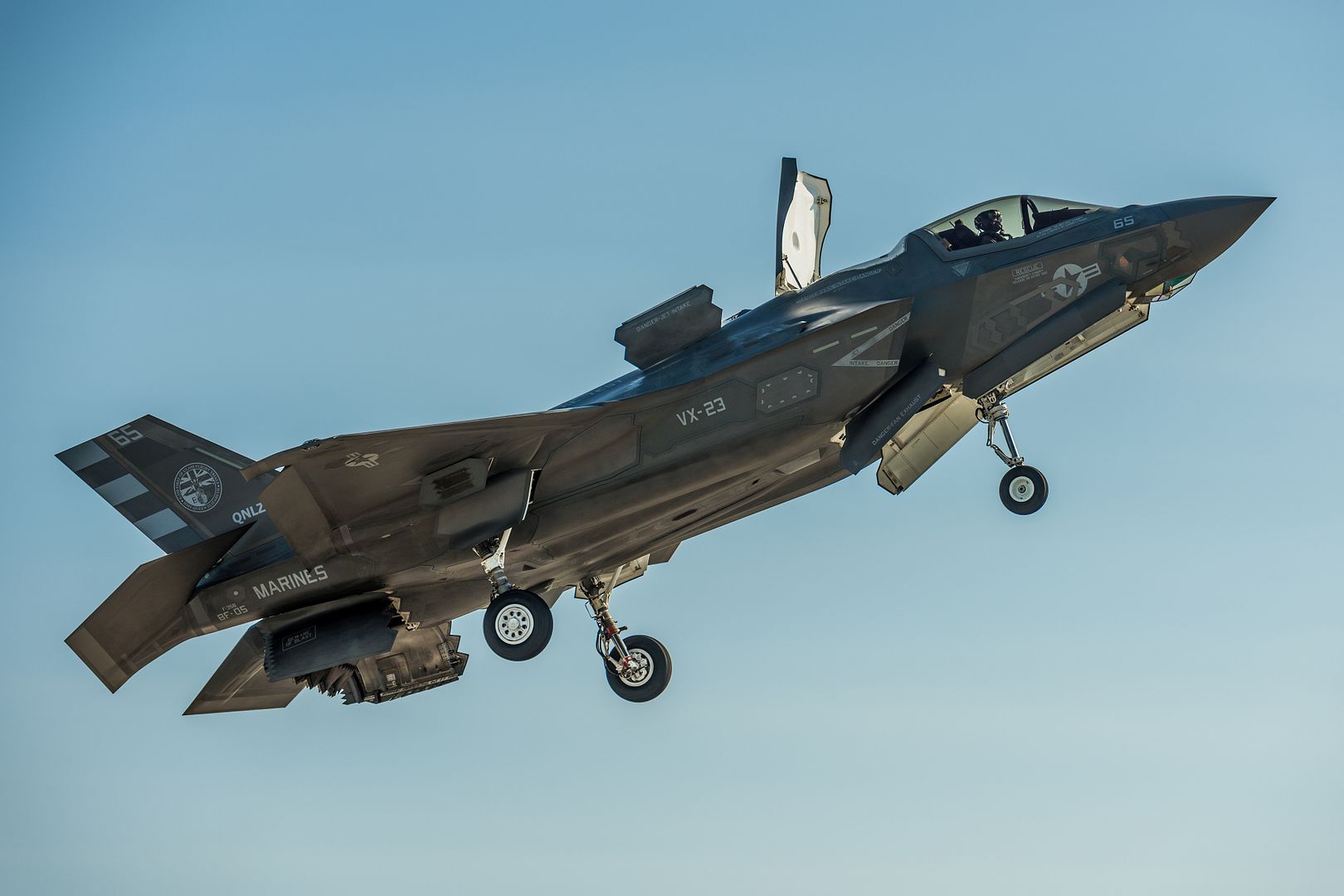
-
 Main AdminRAF Plans to Build on Centurion for Future Eurofighter.
Main AdminRAF Plans to Build on Centurion for Future Eurofighter.
Eurofighter Typhoon will remain at the forefront of combat air capability in Europe for decades to come RAF Air Commodore Linc Taylor told media at a briefing at the Royal International Air Tattoo (RIAT) on 13 July 2018.
The RAF is set to deliver the capabilities of the Tornado onto the Eurofighter by December this year under a programme called Project Centurion.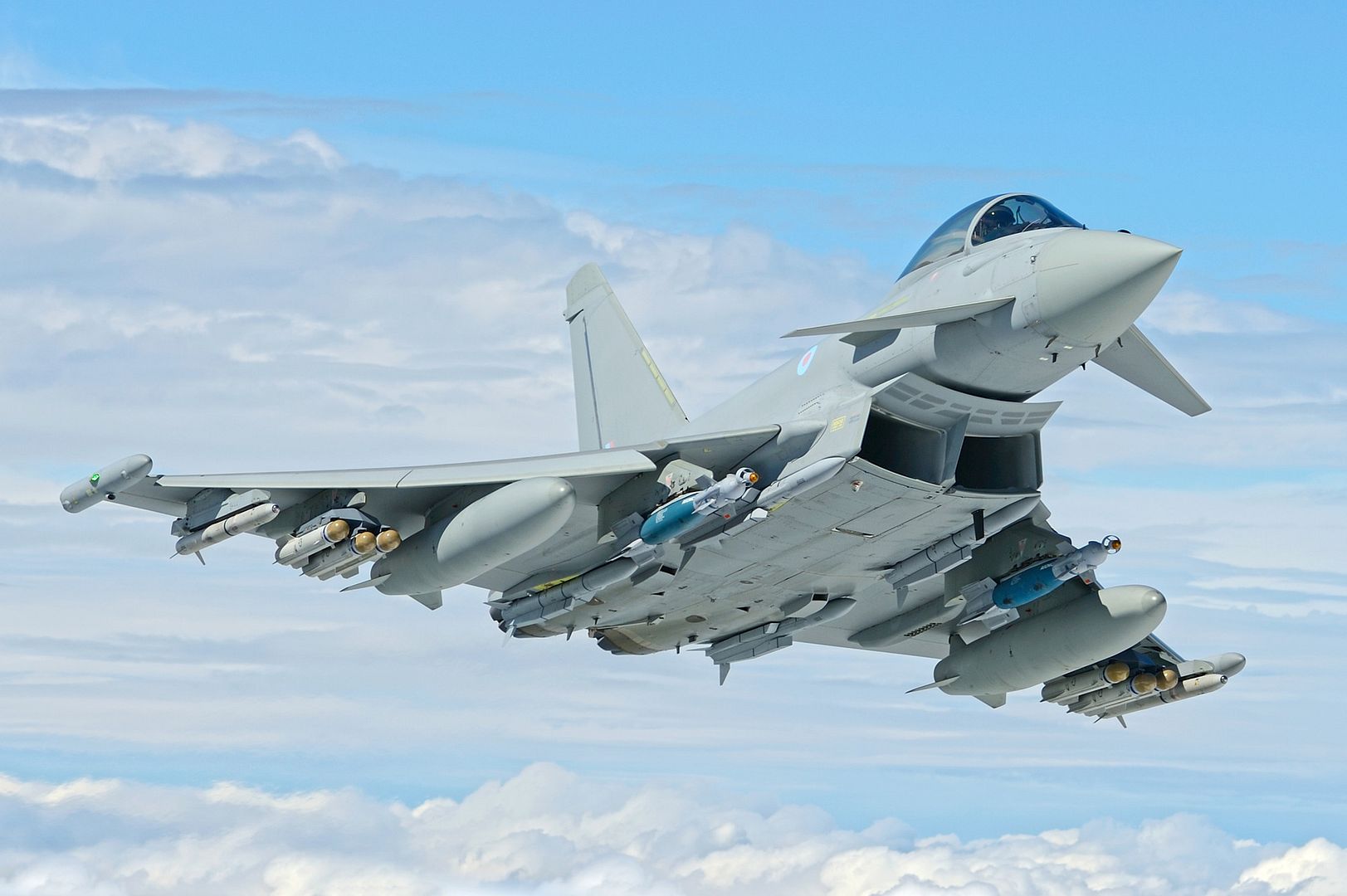
And Air Cdre Taylor said that this will deliver a host of enhancements and do so faster than previous Eurofighter upgrades.
?We have delivered Project Centurion differently through a new partnering approach with industry and we are doing more than ever before, faster than ever before.?
Project Centurion integrates additional state of the art complex weapons onto the platform; the operationally proven deep strike cruise missile, Storm Shadow; Beyond Visual Range (BVR) air-to-air missile, Meteor; and the unique low-collateral, precision attack missile, Brimstone.
Air Cdre Taylor says one of the key lessons of the Project Centurion programme will be how future capability upgrades are built into the aircraft in the years and decades ahead.
?The future is an uncertain place and one of our challenges is how do we get more and more spiral development (incrementally building on existing capabilities) because we will need to be more agile and flexible.
?In the future we will be bringing in next generation precision strike stand-off missiles like Spear Cap 3, Expendable Active Decoys, a new E Scan radar and a new helmet.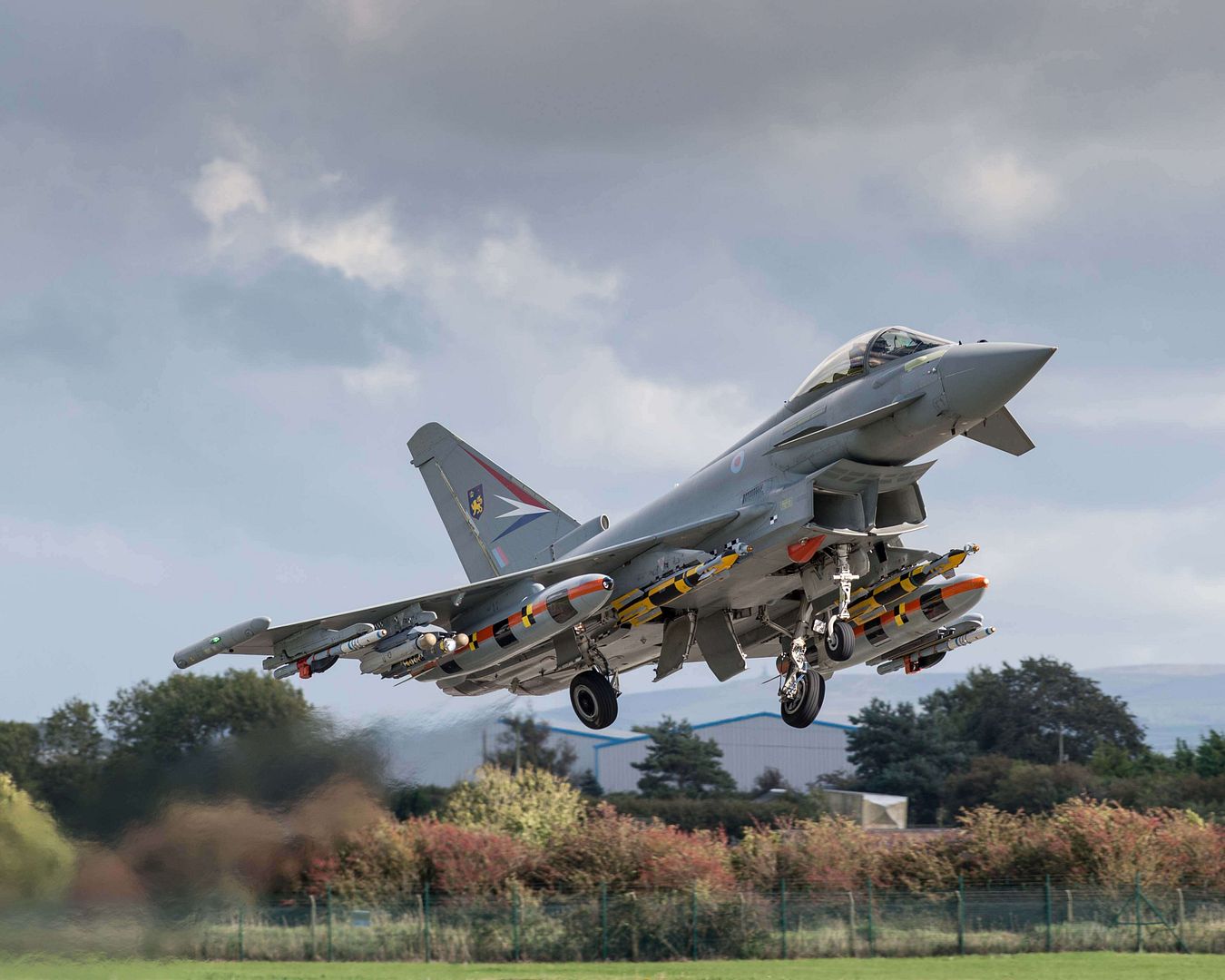
?But we are going to bring them in differently. We are going to integrate them in a much more agile way. It?s important because we have to maintain combat advantage and to do that we have to be faster than our adversaries. The big thing is pace.
?This is the approach of our Future Combat Air System Technology Initiative (FCAS TI) which is spiralling in new capability.
?When you have the best in the world already, like you have with Typhoon, why would you start again? So, we are learning and delivering new technologies in concert with Typhoon. And if we develop a capability within the FCAS TI programme we can spin it back into Typhoon.?
The Air Cdre added that Eurofighter?s ability to share information and work with other assets will also be key in the future. He said:
?It is about ensuring the right information is in the right place at the right time. The sensors on the aircraft are so good it?s a question of how we use that information and how we get it to other fast jets and ground allies.?
Andrew Flynn, Delivery Director ? BAE Systems Typhoon Capability, said: ?The unity of purpose we have shown throughout Project Centurion has translated out into Europe as well. This is not just a UK initiative we have needed the help of our partners in Europe too. My equivalent numbers in Airbus and Leonardo understand exactly what Centurion is, and we are all benefiting from it.?
(Source: Eurofighter Typhoon; issued Aug 31, 2018)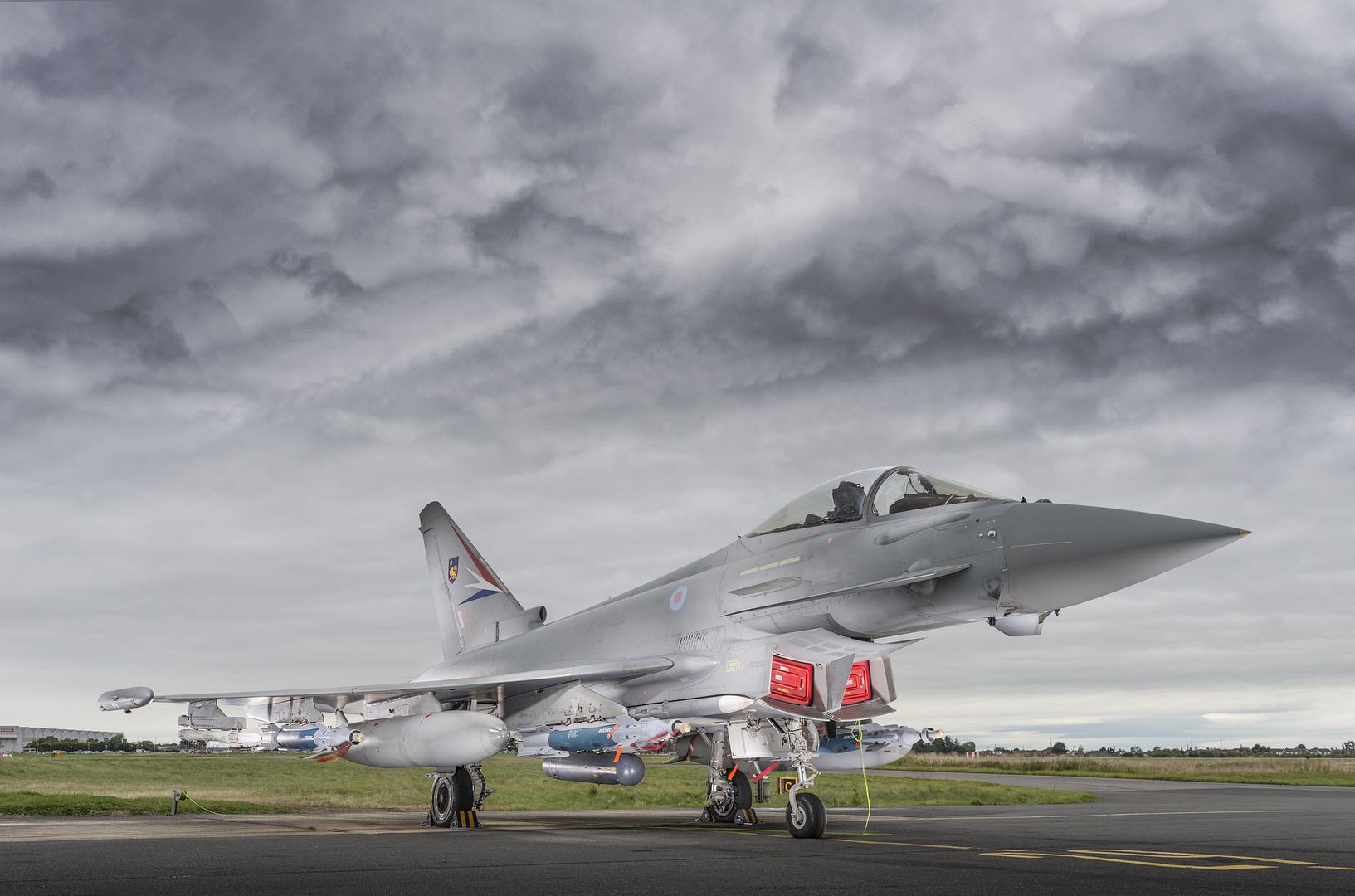
Singapore, 3 September 2018 ? Airbus has delivered the Republic of Singapore Air Force?s (RSAF) first A330 Multi Role Tanker Transport (MRTT). The aircraft made its first official public appearance on Saturday 1 September 2018 at the RSAF?s 50th anniversary parade.
The new-generation A330 MRTT extends the endurance of the RSAF?s fighter aircraft, and ensures the service?s continued capability to provide air-to-air refuelling support.
It also provides the RSAF with greater cargo and passenger transport capabilities, and enhances its ability to contribute to international humanitarian assistance and disaster relief (HADR) and peace support operations.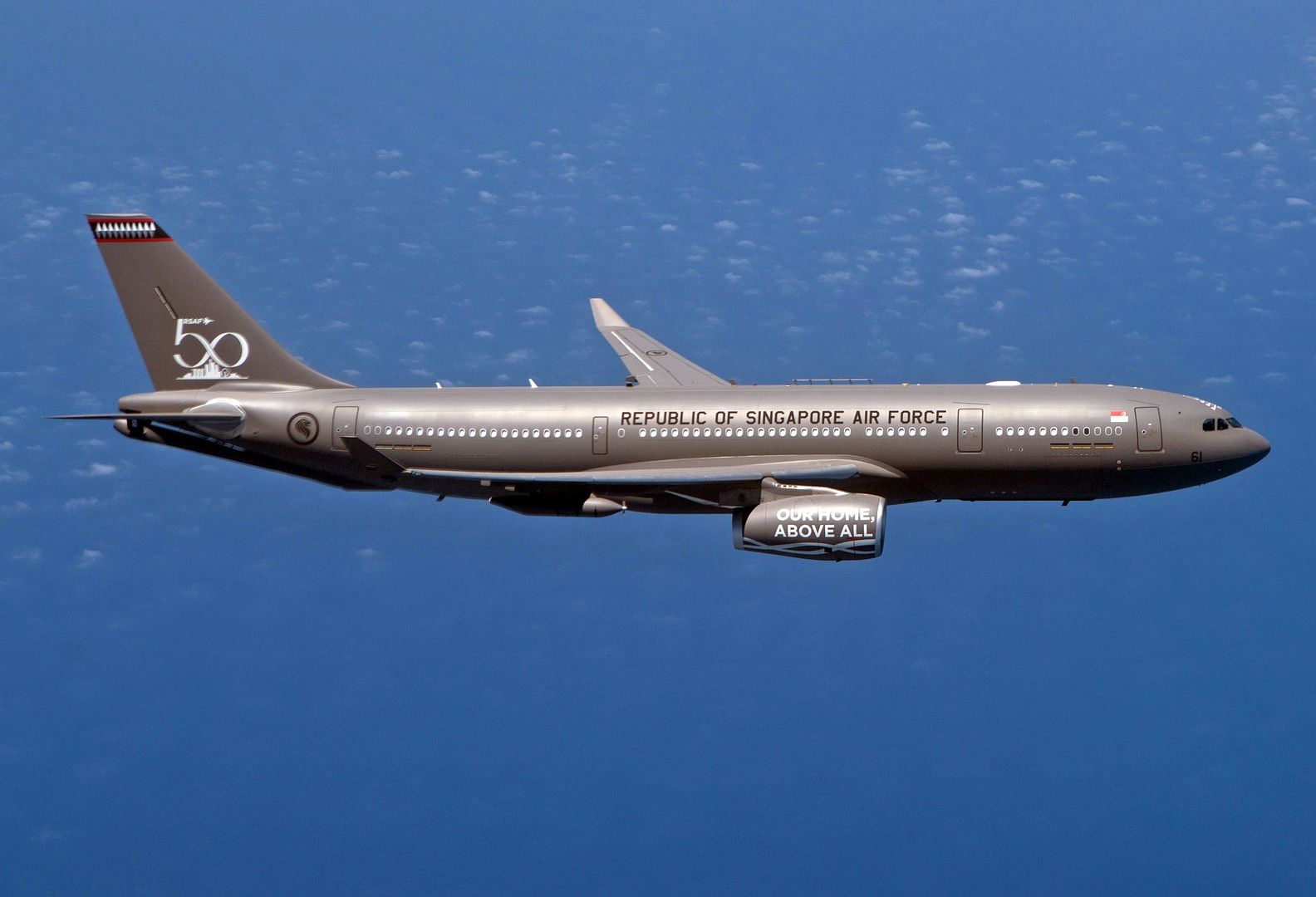
Tokyo, Kansai-based helicopter operator Hiaratagakuen has welcomed its second H145//BK117D-2, following the milestone delivery of its first unit in December 2017. Currently operating 14 H135s and one H145//BK117D-2, this new H145//BK117D-2 will join Hiratagakuen?s growing fleet to support emergency medical service (EMS) missions, and serves as a passenger and material transport. The first H145//BK117D-2 already entered service in June 2018 for aeromedical operations at the Nagasaki Medical Centre in Nagasaki Prefecture.
With Japan?s full-scale deployment of air ambulances in 2001, EMS helicopters, otherwise known as ?Doctor Helicopters?, have taken on more prominent roles in the country, enabling rapid evacuation of casualties from affected sites, and providing critical care without delay aboard medically equipped helicopters, while in transit to the medical facility. In 2010, the Kansai government implemented region-wide EMS support network and Hiratagakuen became its main operator of these life-saving missions. Today, there are over 50 helicopters supporting emergency medical missions in 42 prefectures across Japan.
Mitsuhiro Hirata, Vice President, Aviation Operation Division of Hiratagakuen said at the delivery ceremony: ?Operating in a time-sensitive EMS environment where every second matters, it is important for us to be equipped with the right helicopters for these demanding aeromedical missions. We have been well supported by a strong Airbus fleet for nearly two decades, especially with the recent introduction of the H145//BK117D-2 helicopters into our operations. We are confident that the timely addition of the second H145 helicopter will augment our aeromedical operations, as we continue to perform life-saving missions safely in the country.?
Olivier Tillier, Managing Director of Airbus Helicopters Japan commented: ?Airbus is happy to play a supportive role in Japan?s EMS ecosystem, especially with the first EMS-configured H145//BK117D-2 entering service into Hiratagakuen?s fleet early summer this year, joining soon by its second unit for aeromedical operations. Given its flexibility, agility and high operational efficiency, we know that our H145//BK117D-2 will continue to lend capable support to Hiratagakuen?s every EMS mission.?
The H145//BK117D-2 is developed in co-operation with Kawasaki Heavy Industries to deliver excellent performance throughout the flight envelope. It comes with the state-of-the-art Helionix avionics suite and designed-in mission capability and flexibility, especially in high and hot operating conditions. With a large cabin, a compact airframe and powerful engines, the H145//BK117D-2 is the aircraft of choice for a variety of missions including EMS, air rescue, law enforcement and aerial work. More than 1,400 H145//BK117D-2 helicopters have been delivered worldwide, achieving close to 5 million flight hours.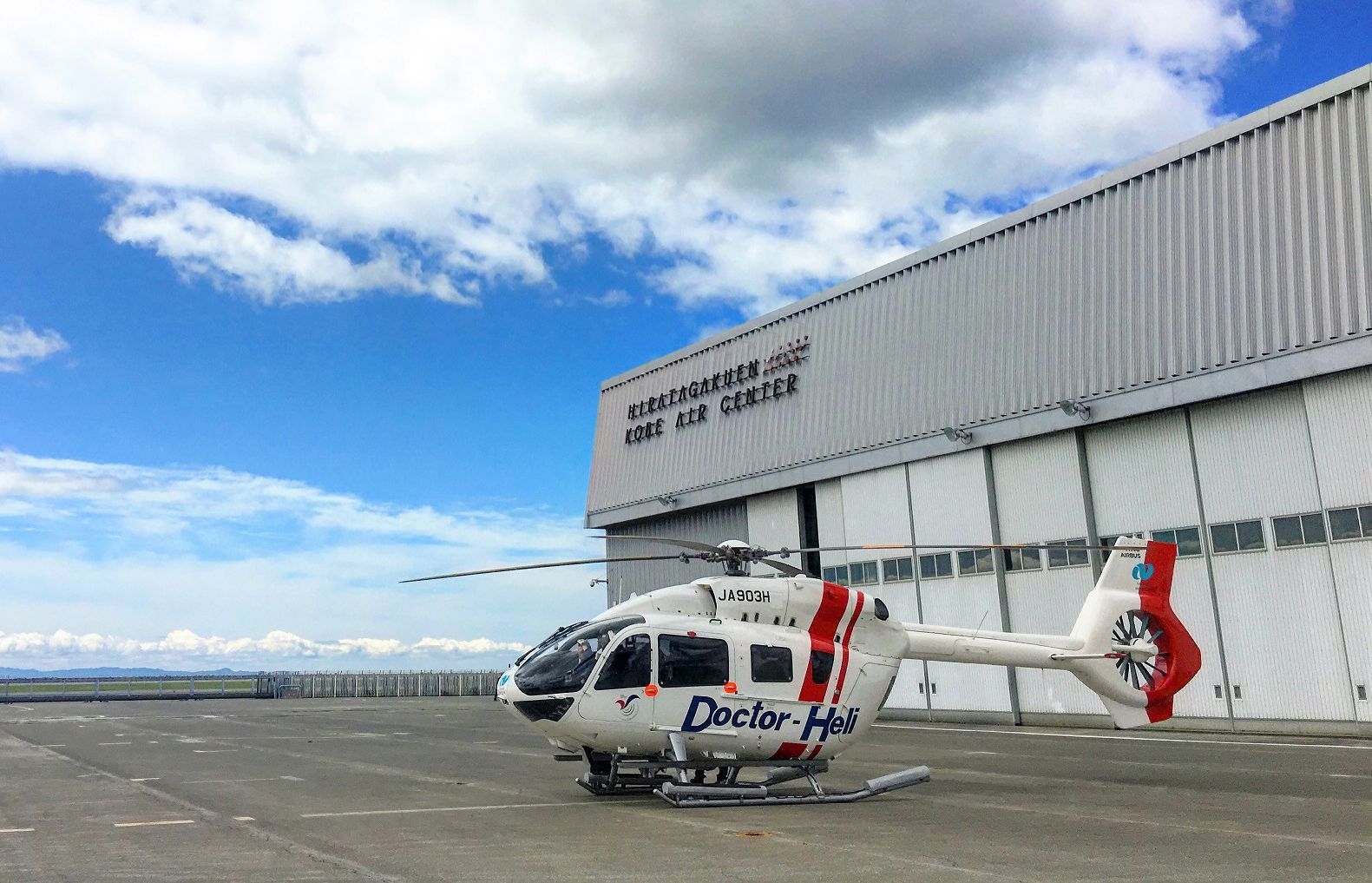
Post a reply
- Go to Next topic
- Go to Welcome
- Go to Introduce Yourself
- Go to General Discussion
- Go to Screenshots, Images and Videos
- Go to Off topic
- Go to Works in Progress
- Go to Skinning Tips / Tutorials
- Go to Skin Requests
- Go to IJAAF Library
- Go to Luftwaffe Library
- Go to RAF Library
- Go to USAAF / USN Library
- Go to Misc Library
- Go to The Ops Room
- Go to Made in Germany
- Go to Campaigns and Missions
- Go to Works in Progress
- Go to Juri's Air-Raid Shelter
- Go to Campaigns and Missions
- Go to Works in Progress
- Go to Skinpacks
- Go to External Projects Discussion
- Go to Books & Resources
